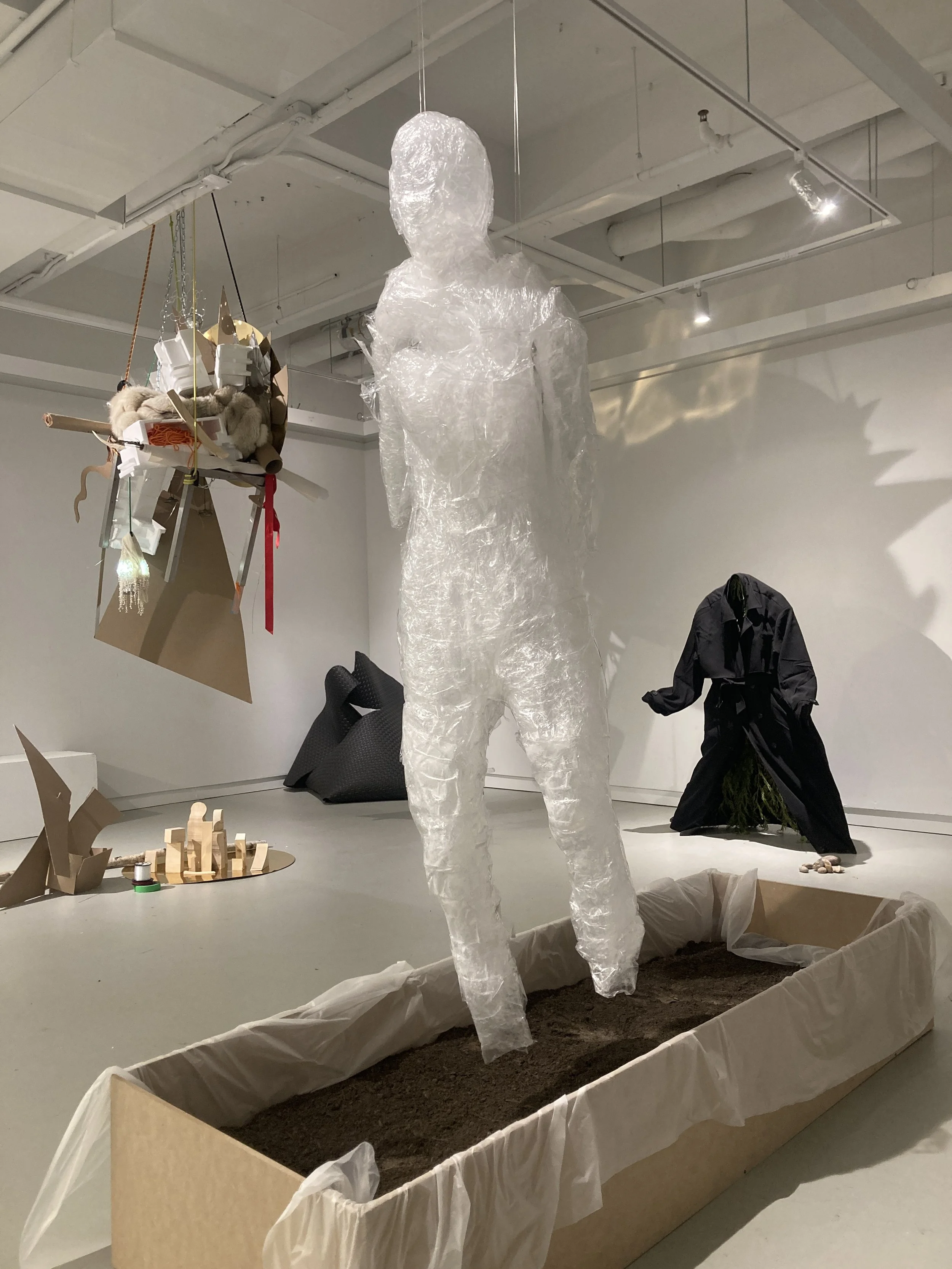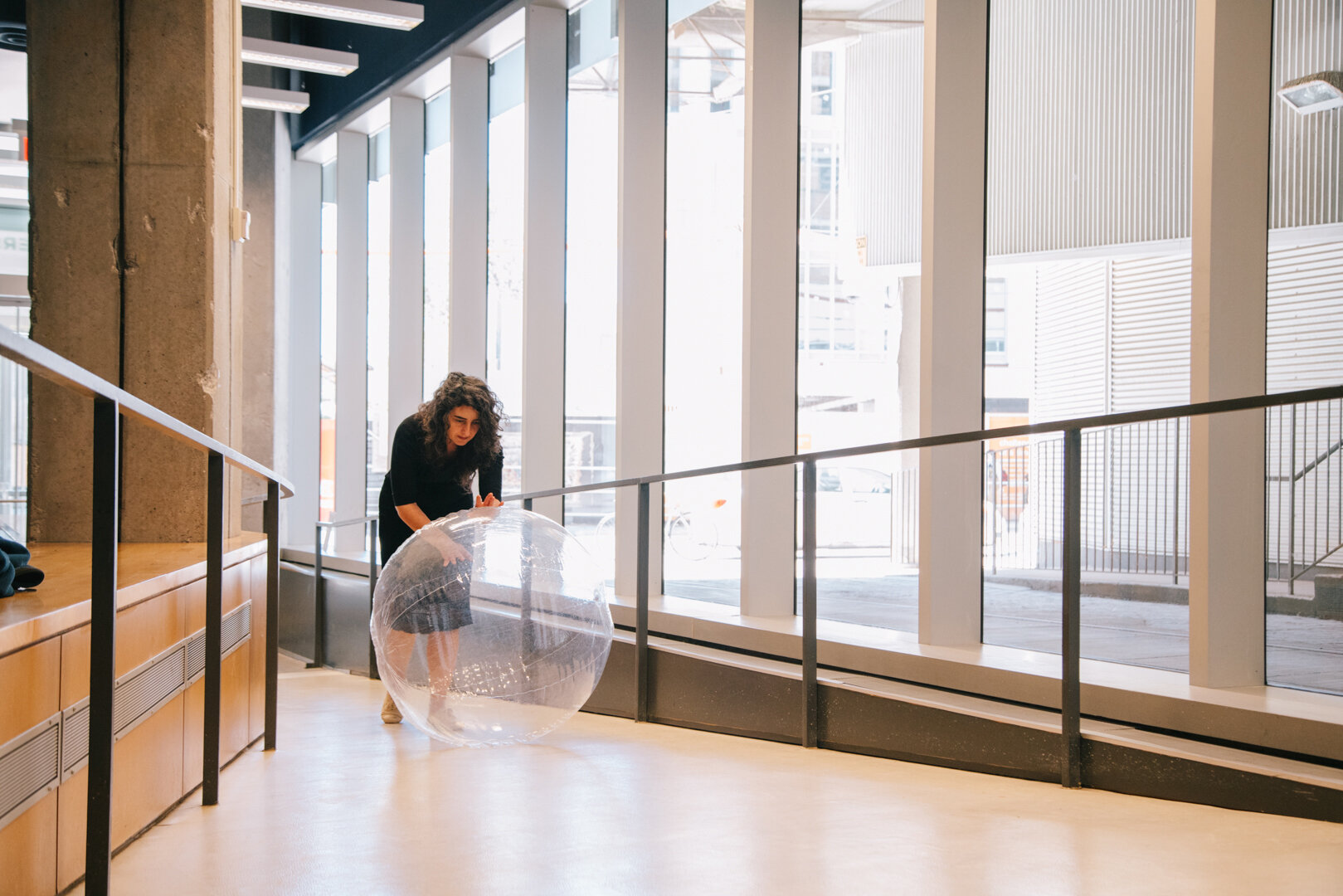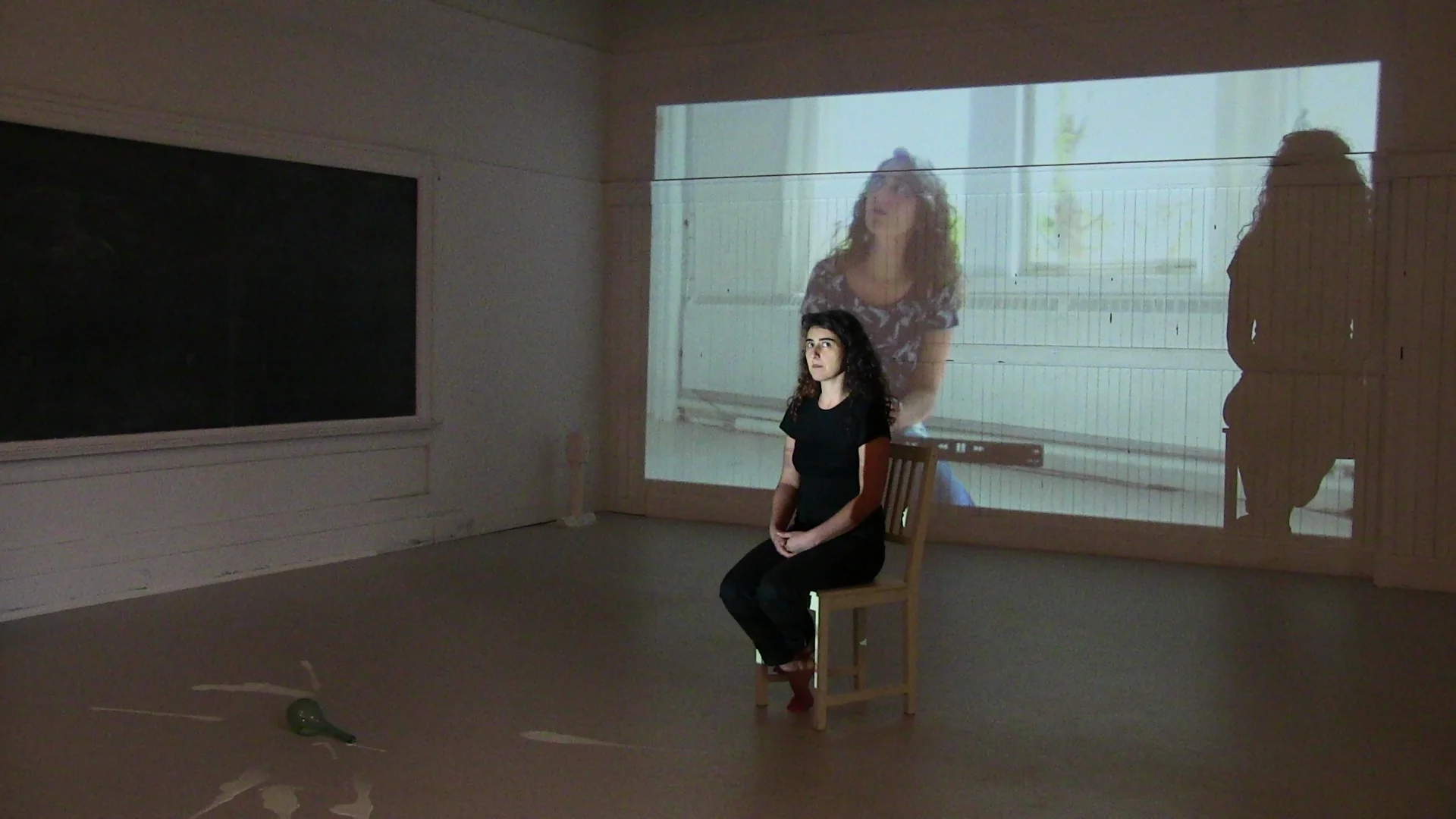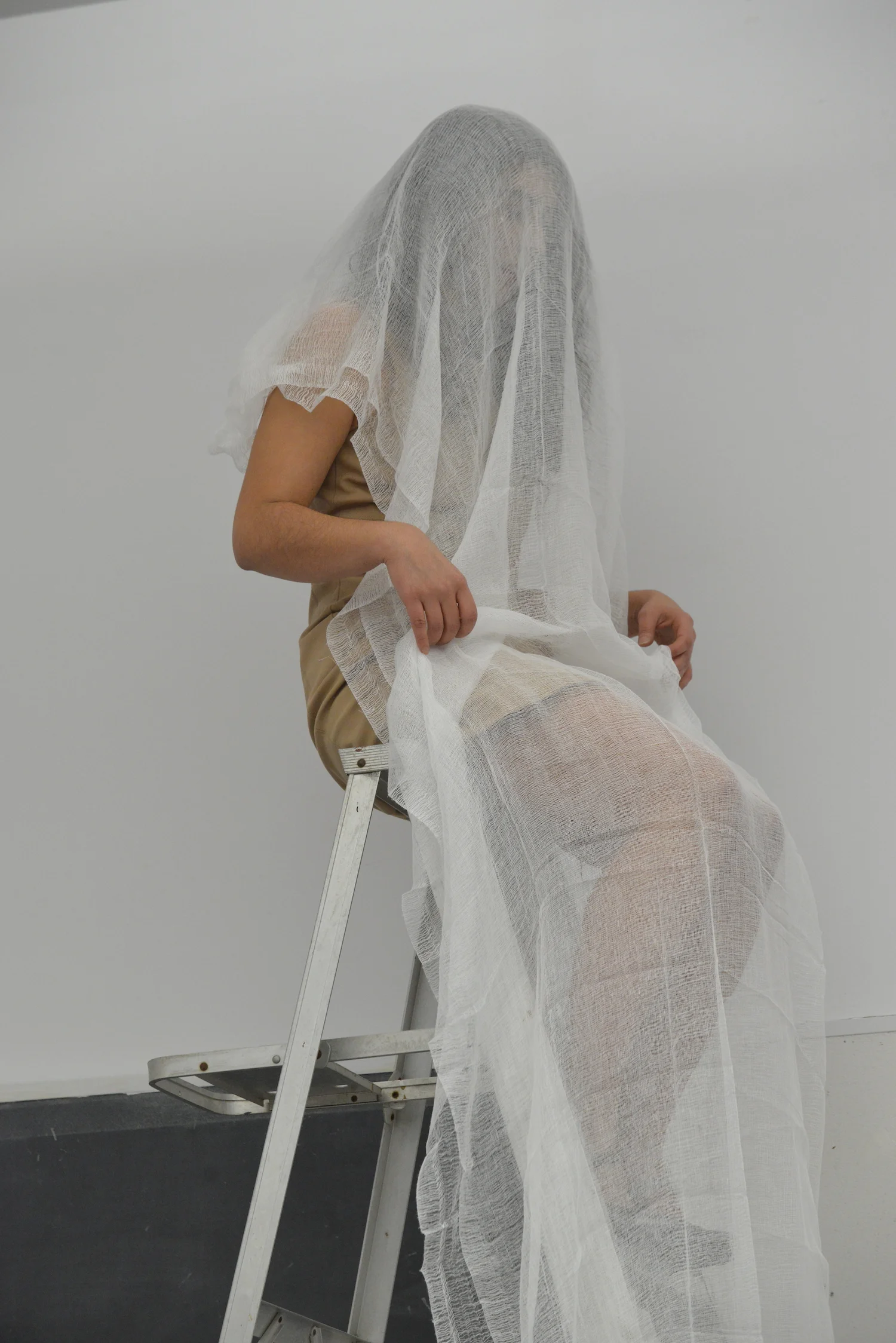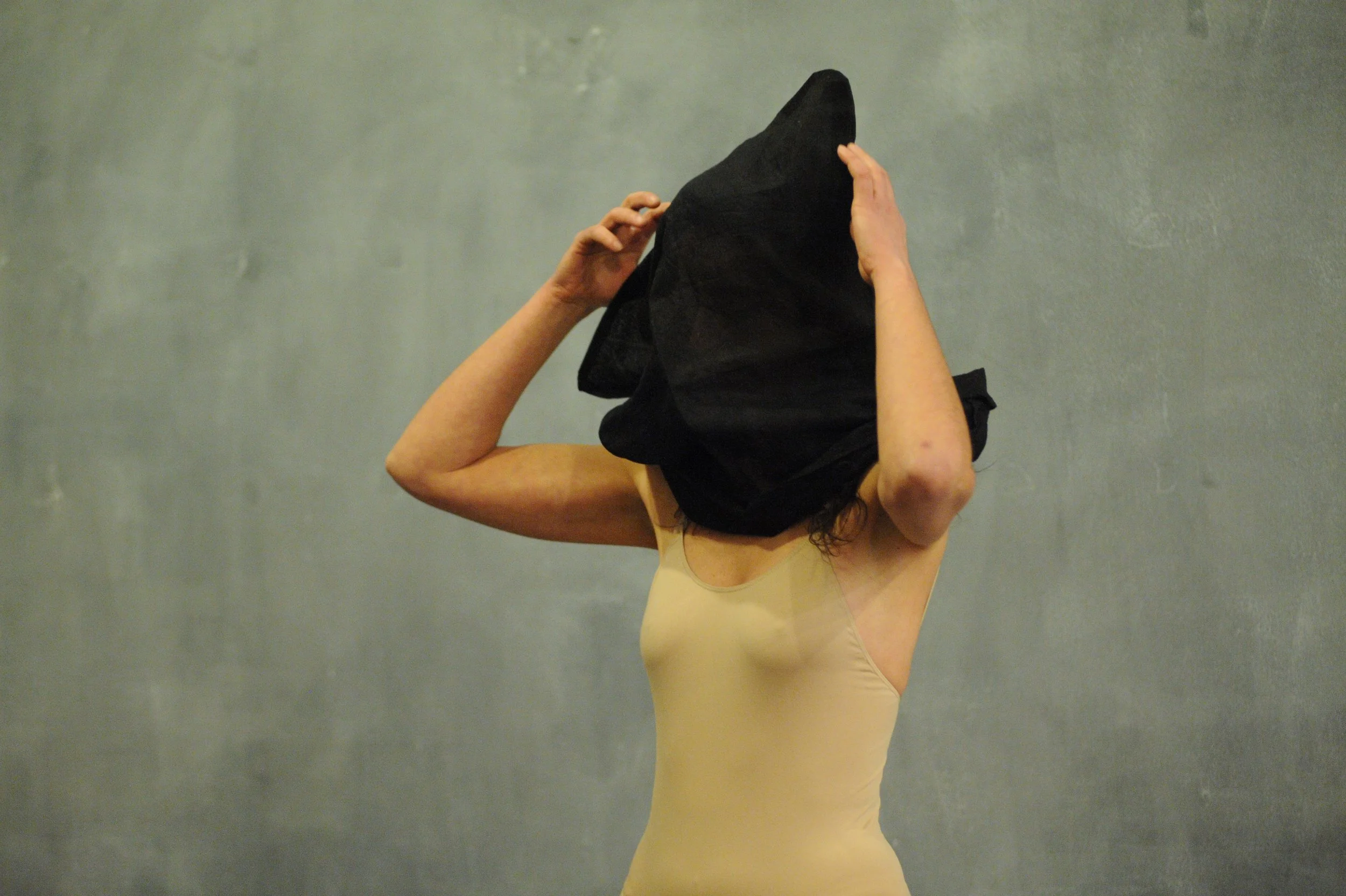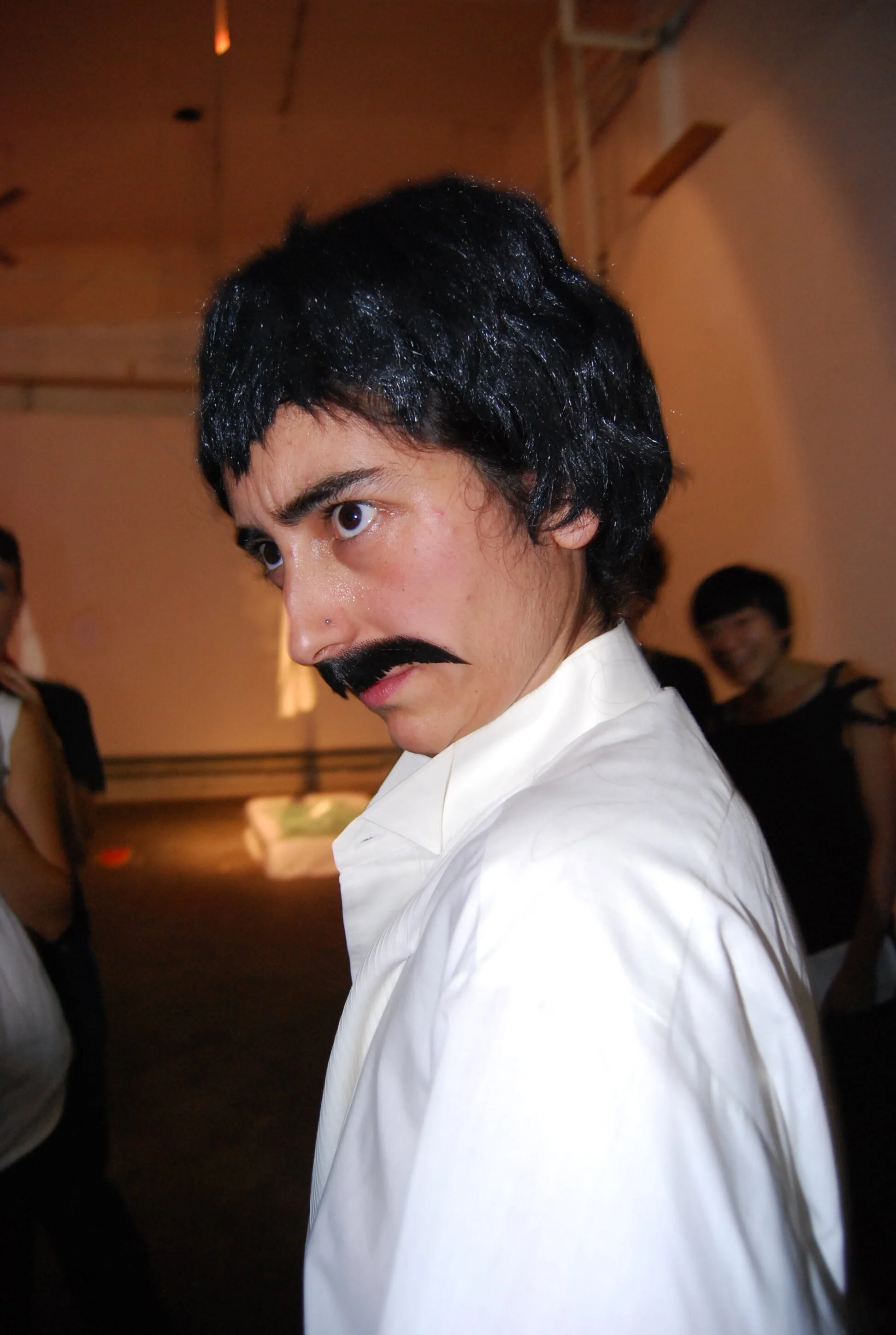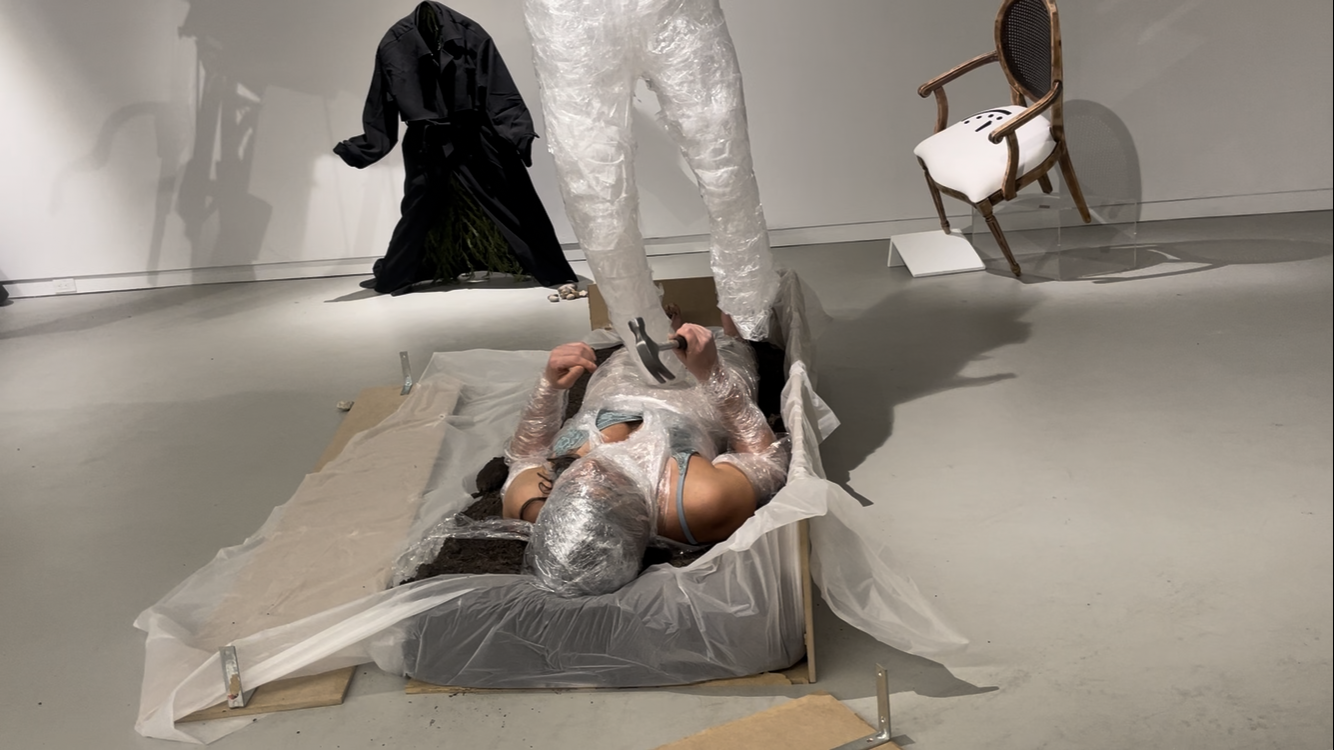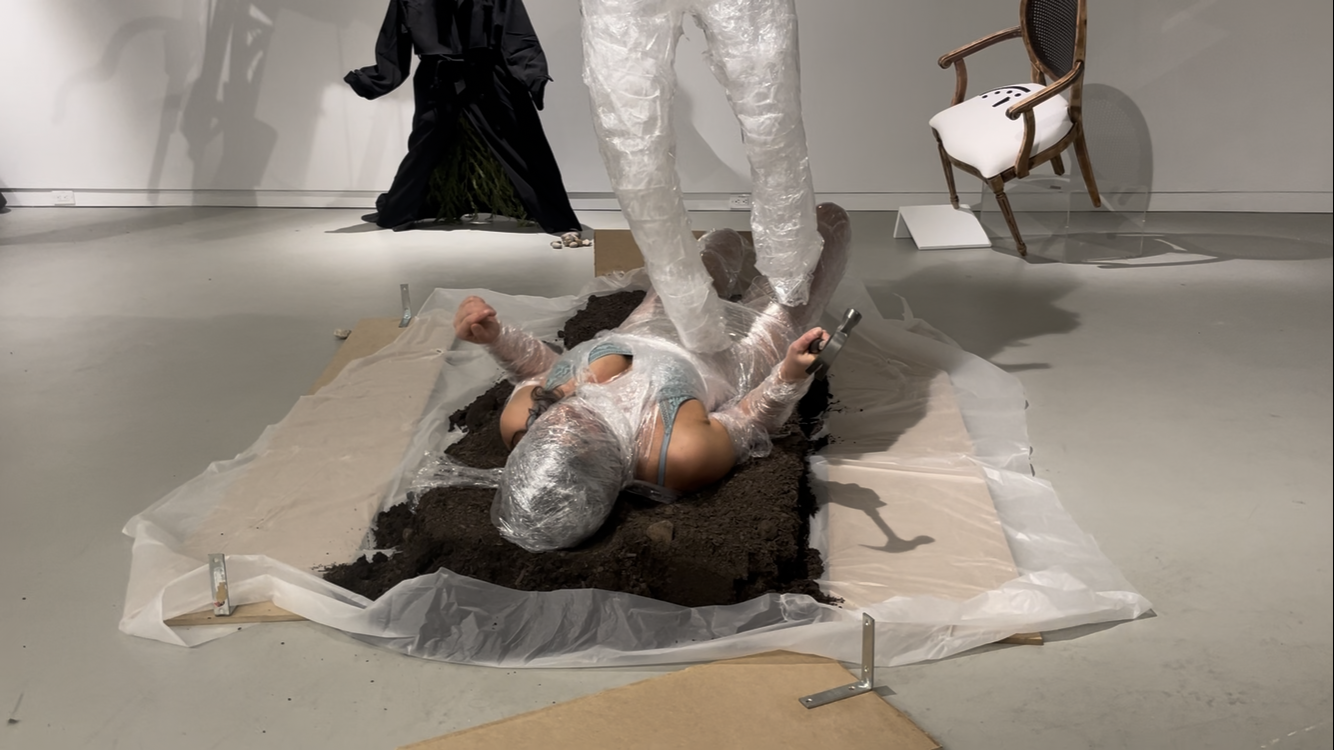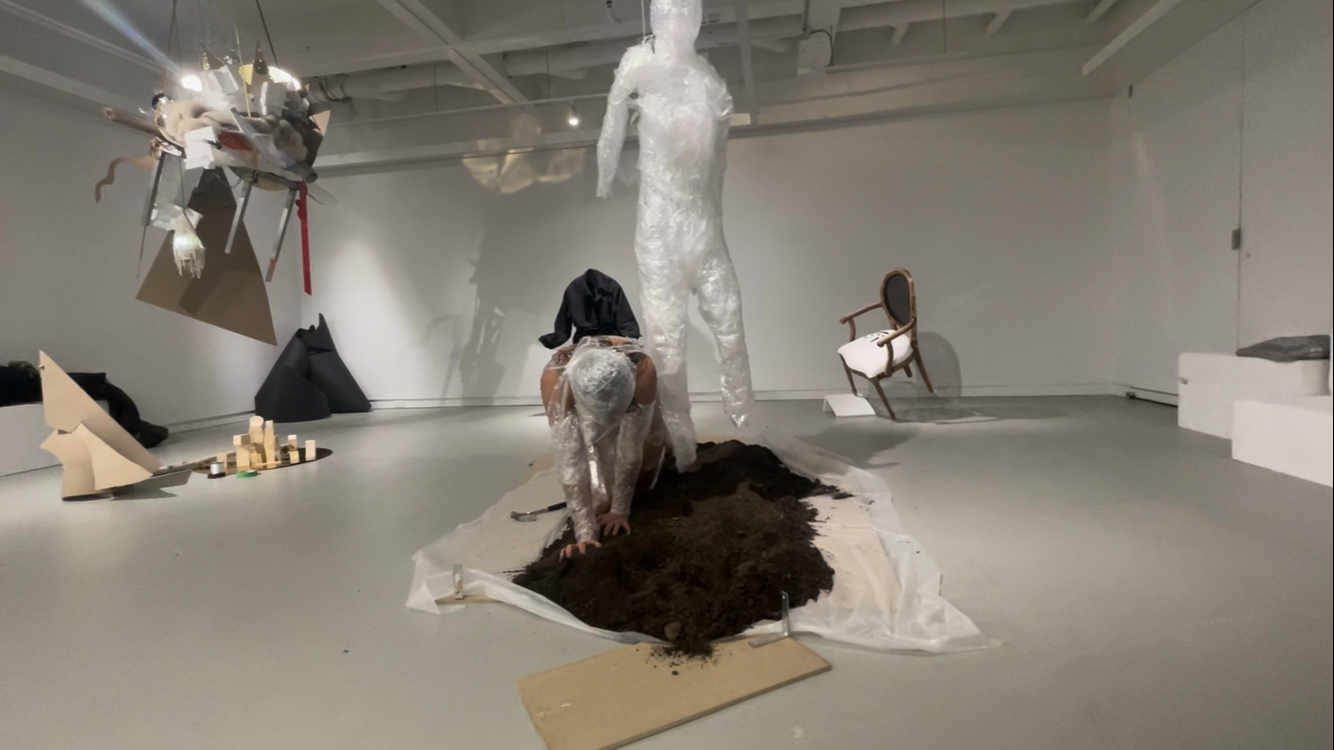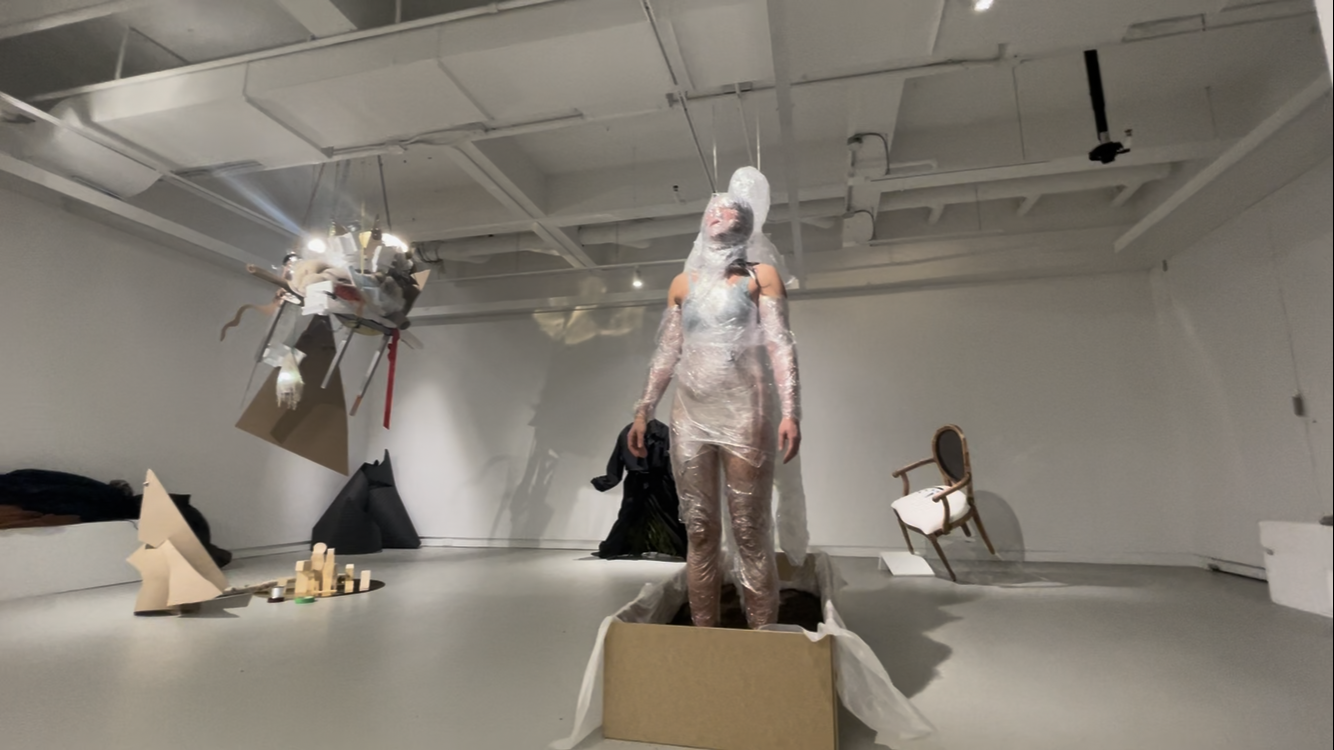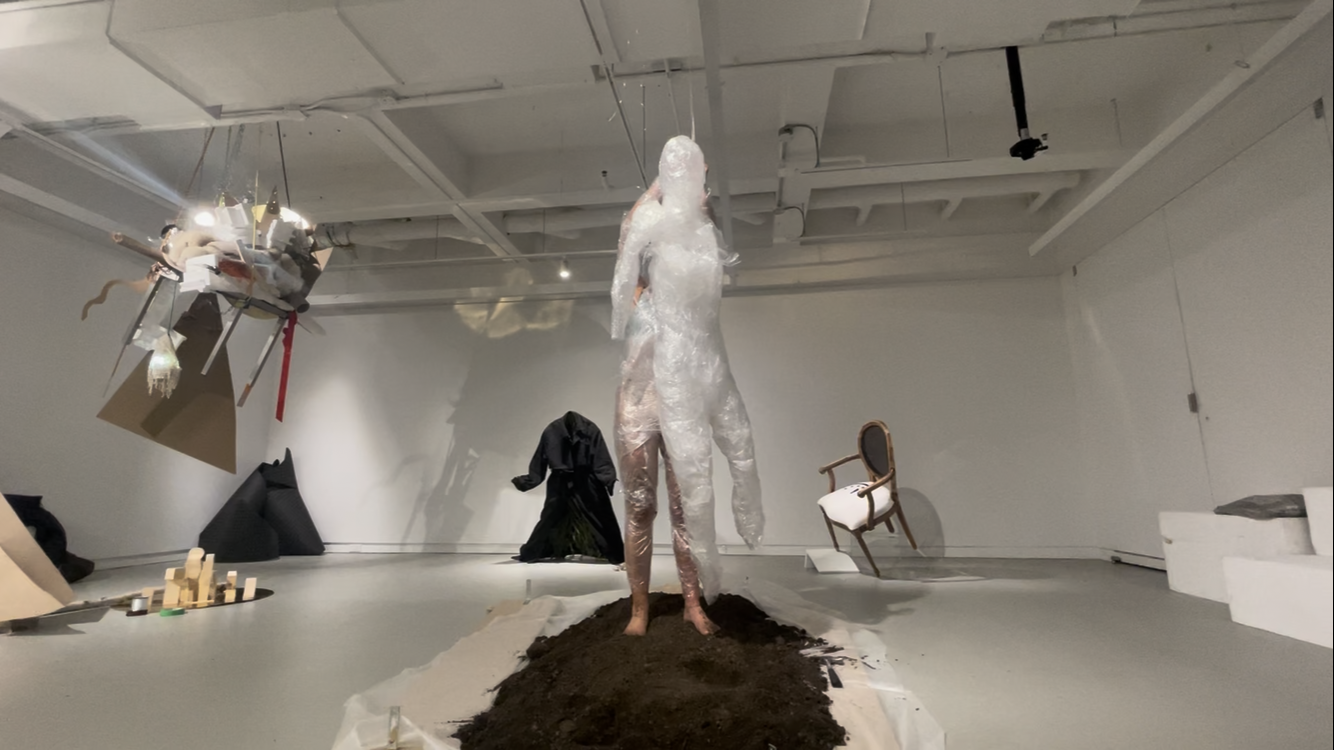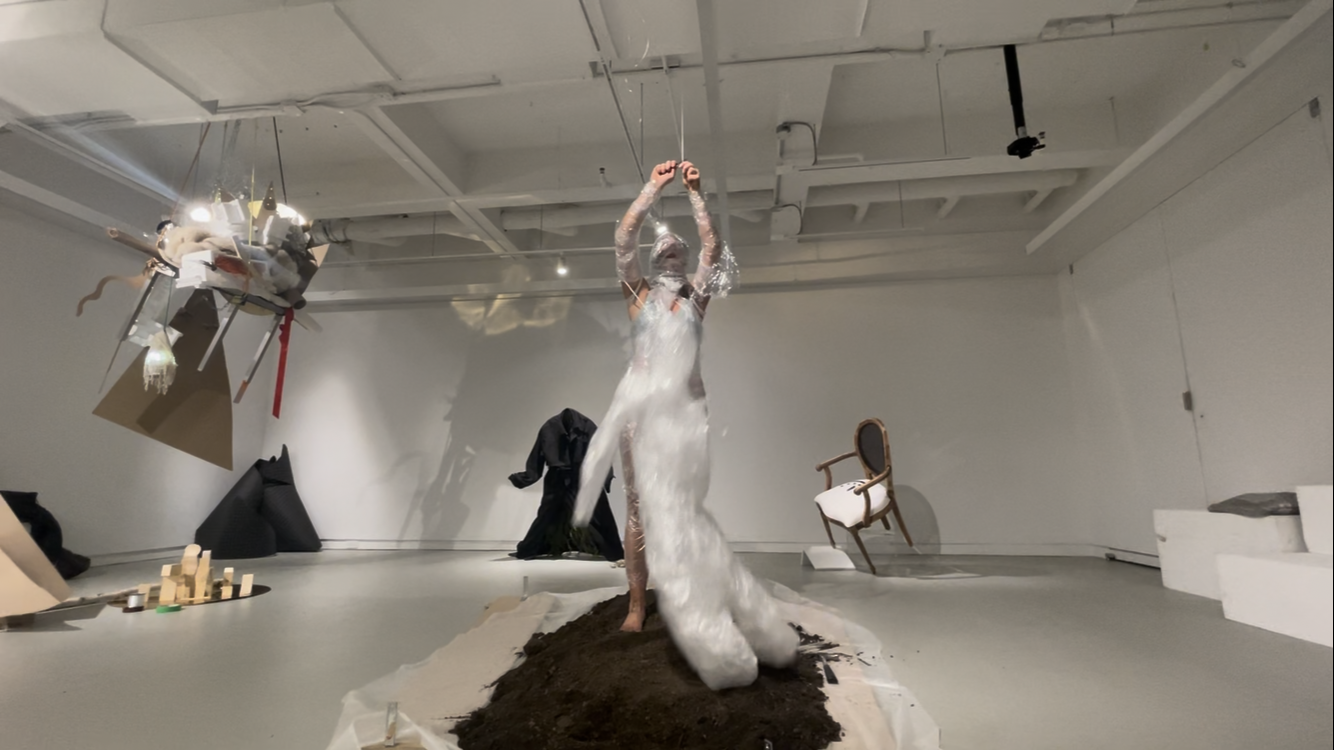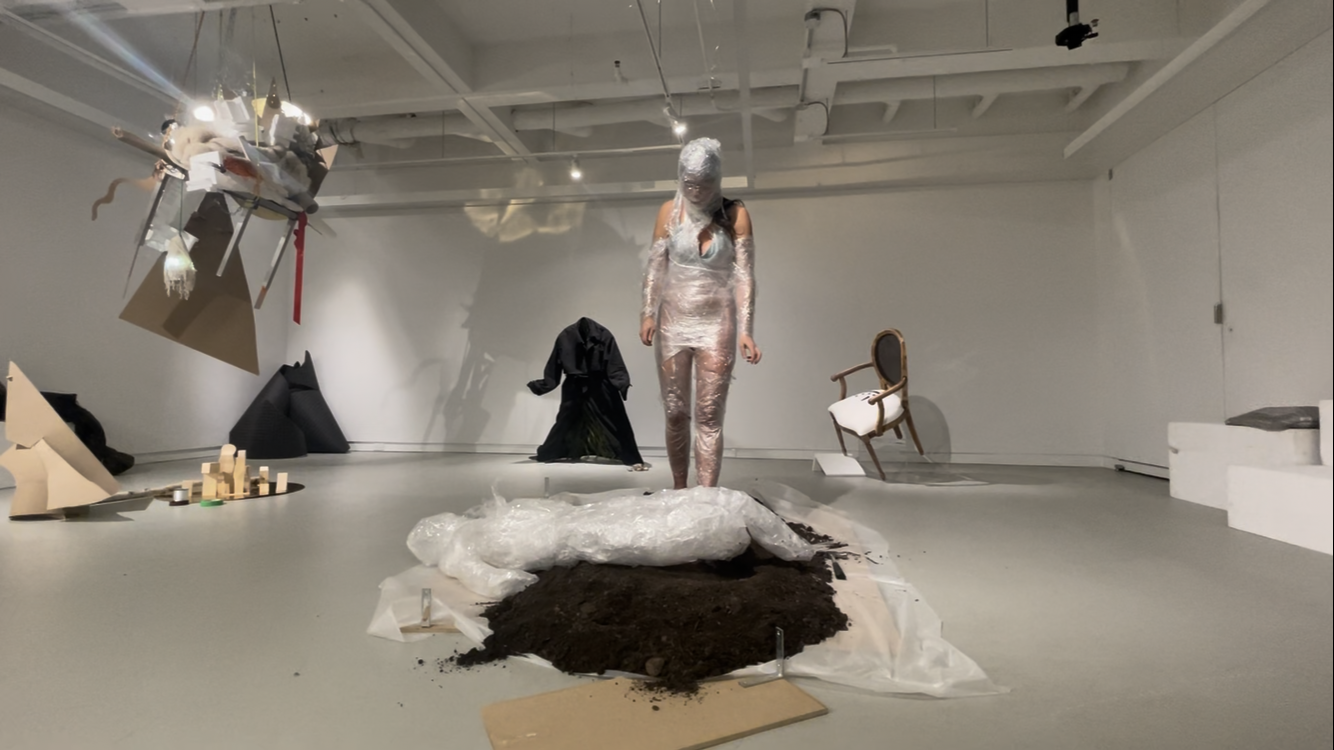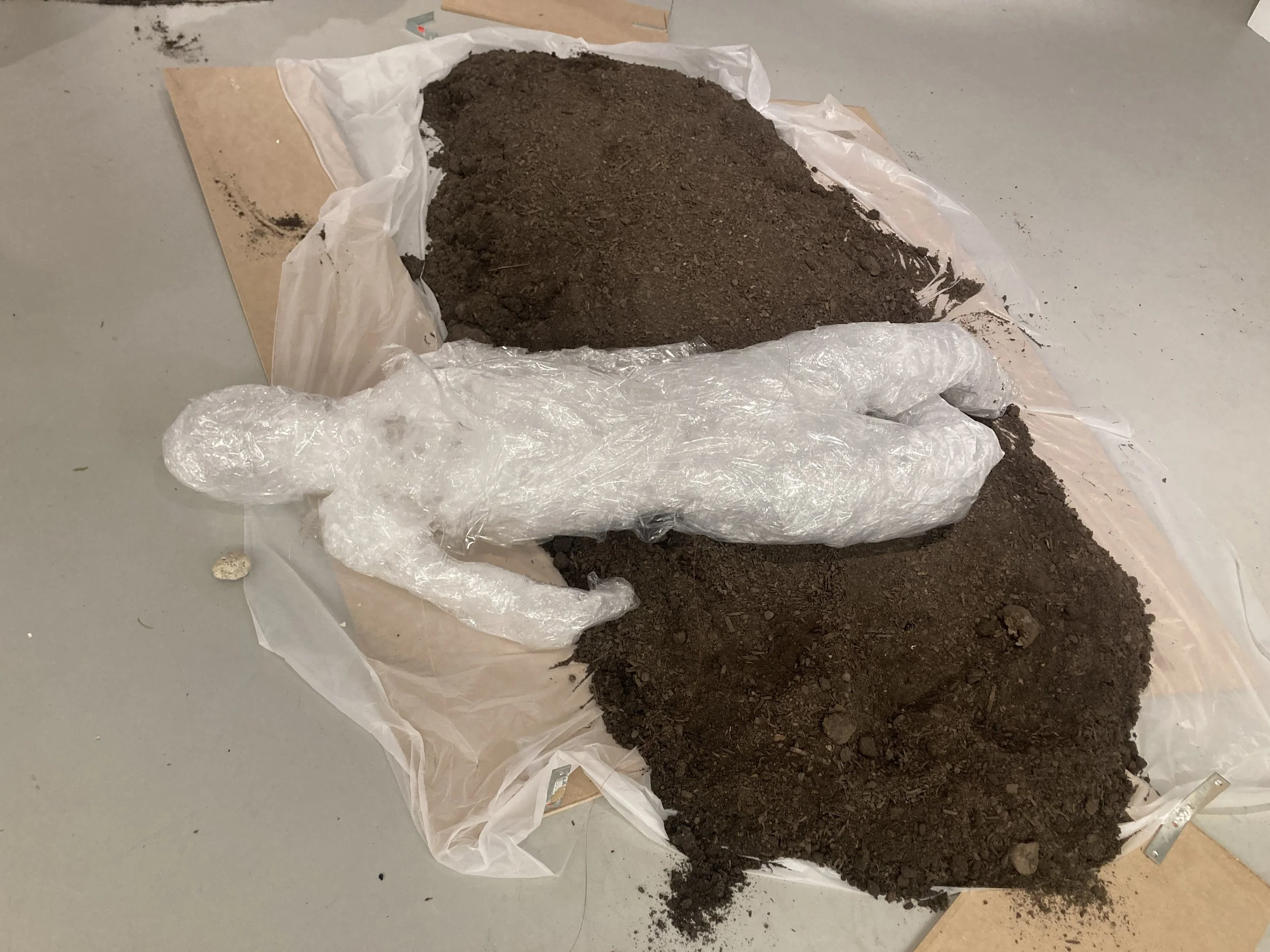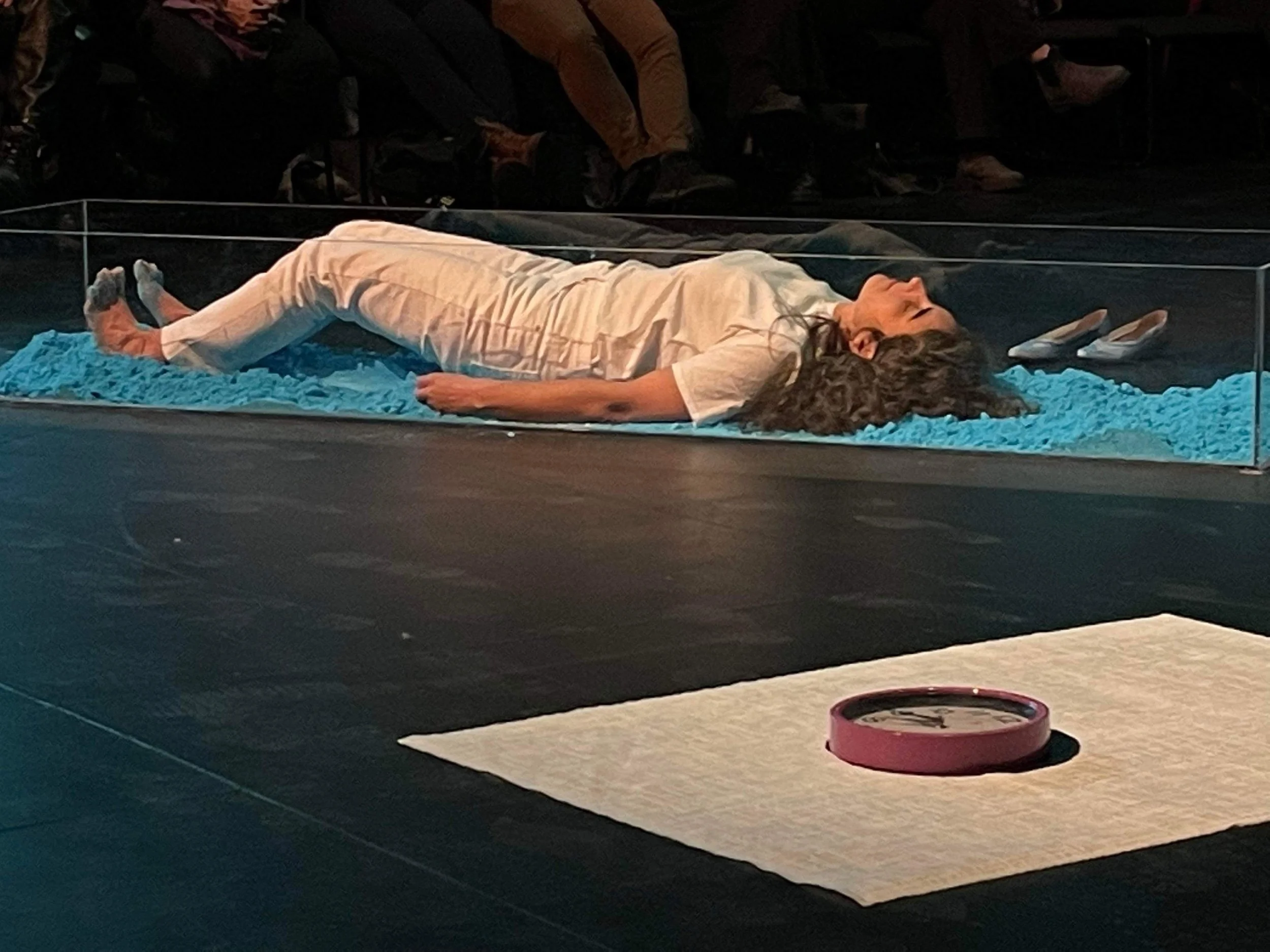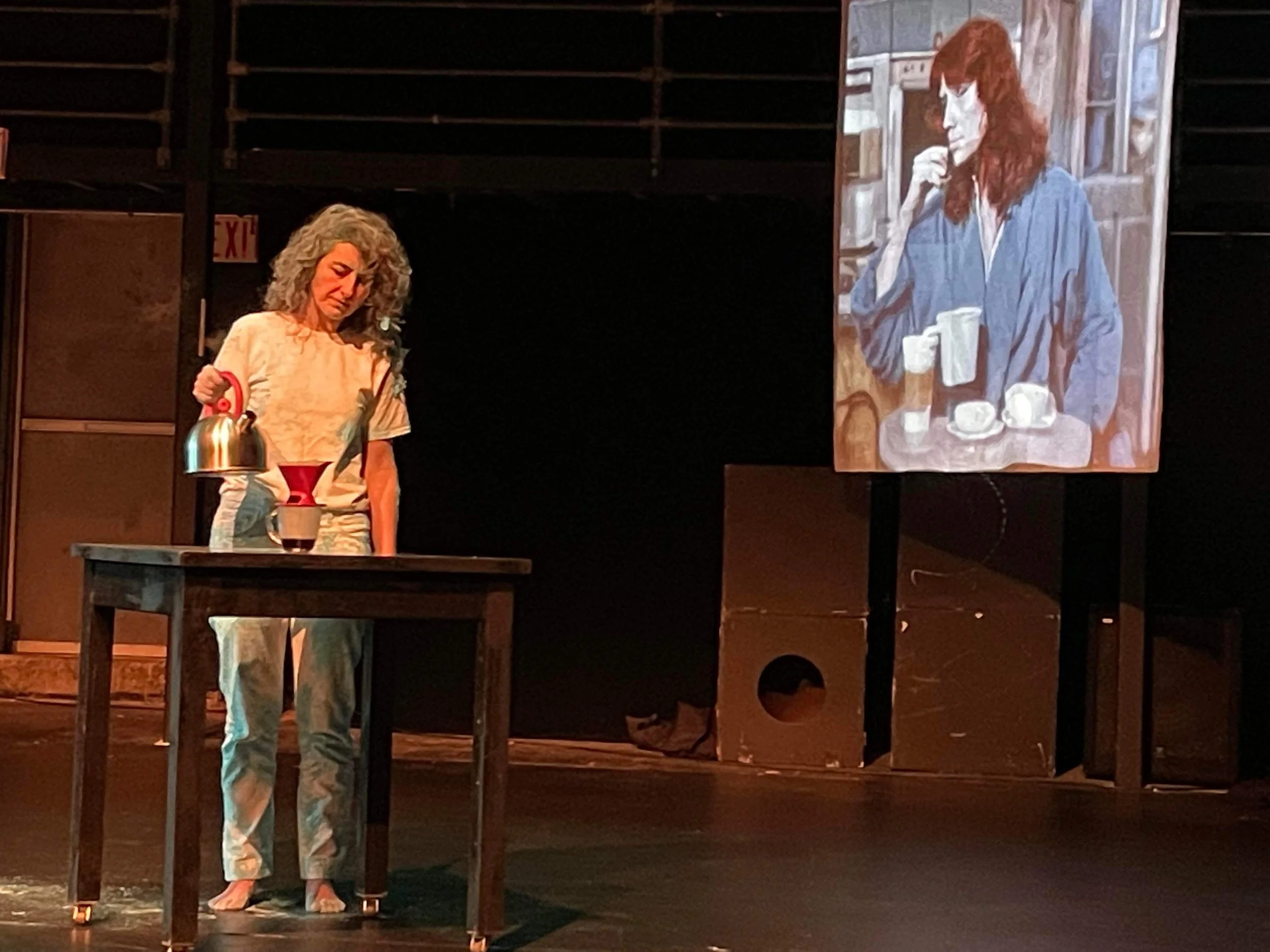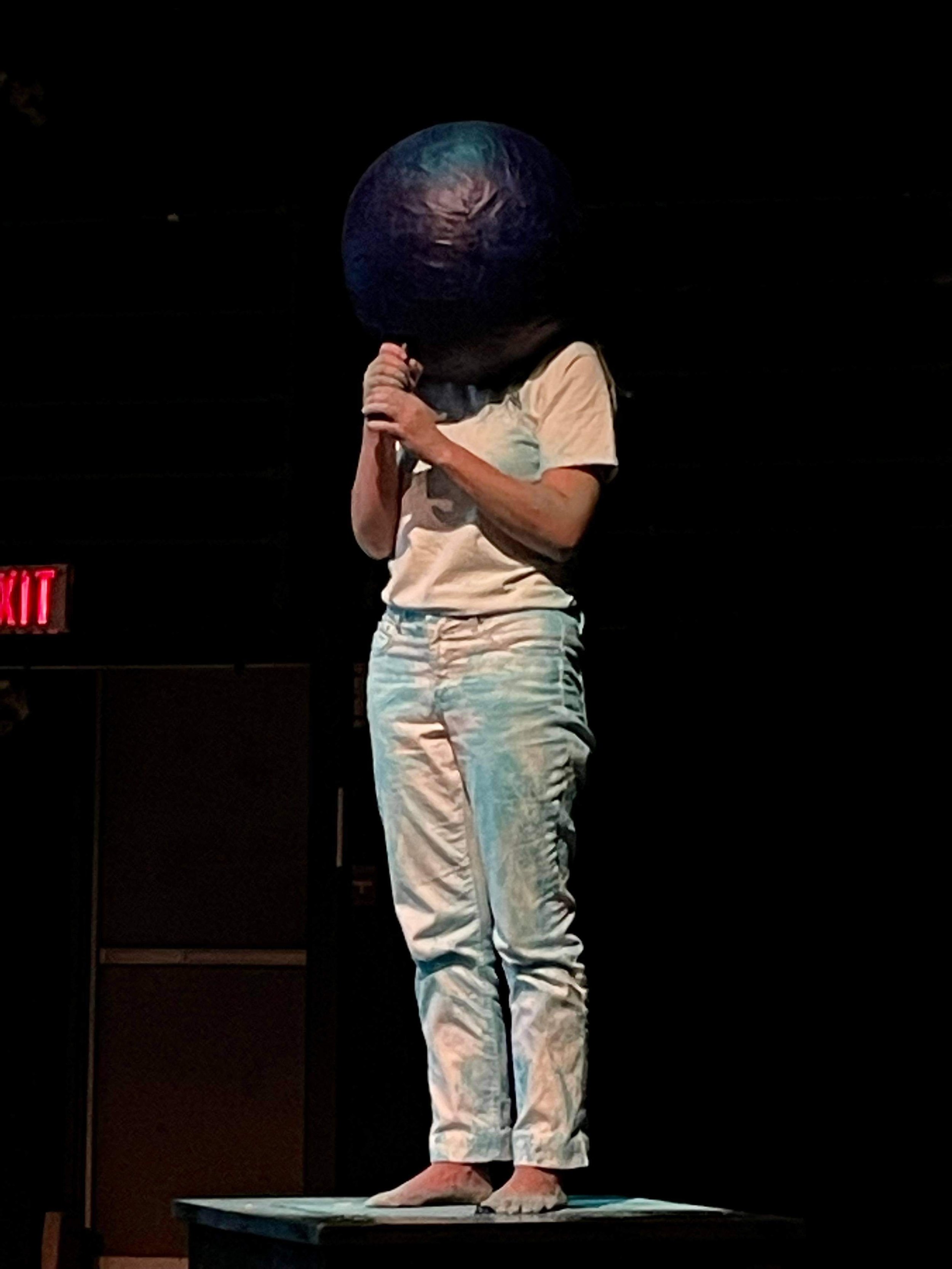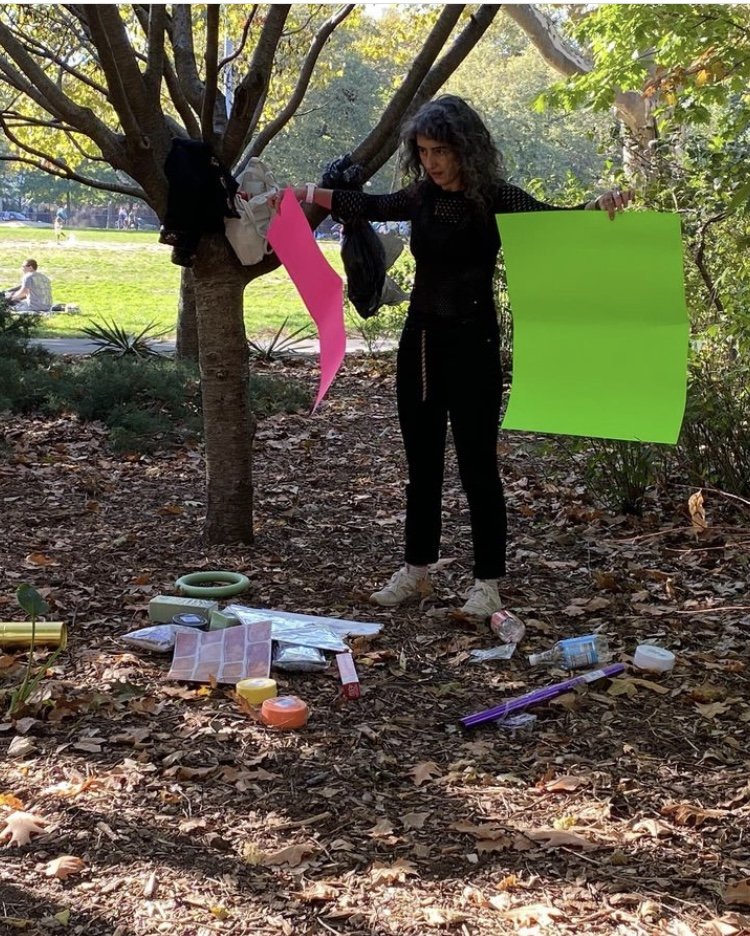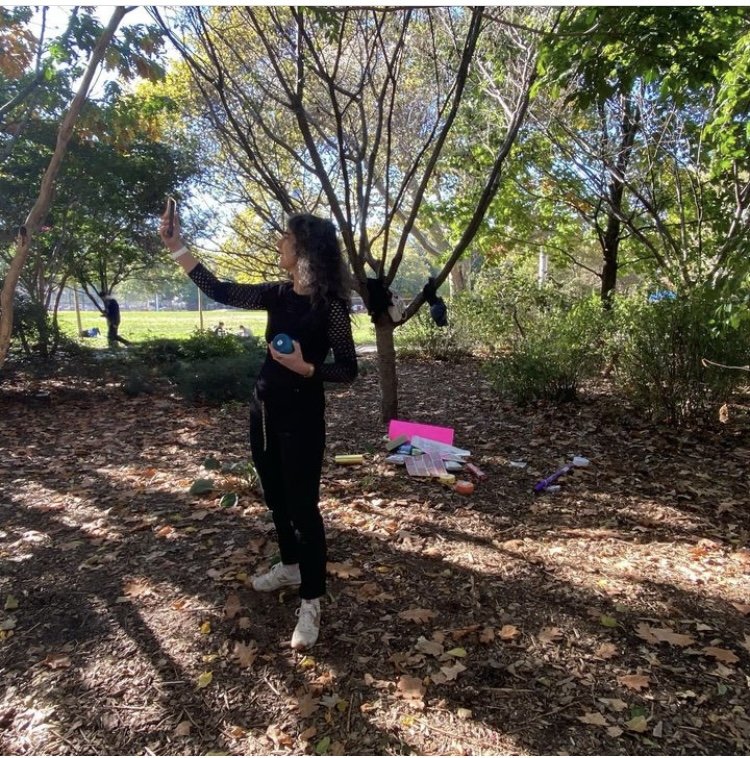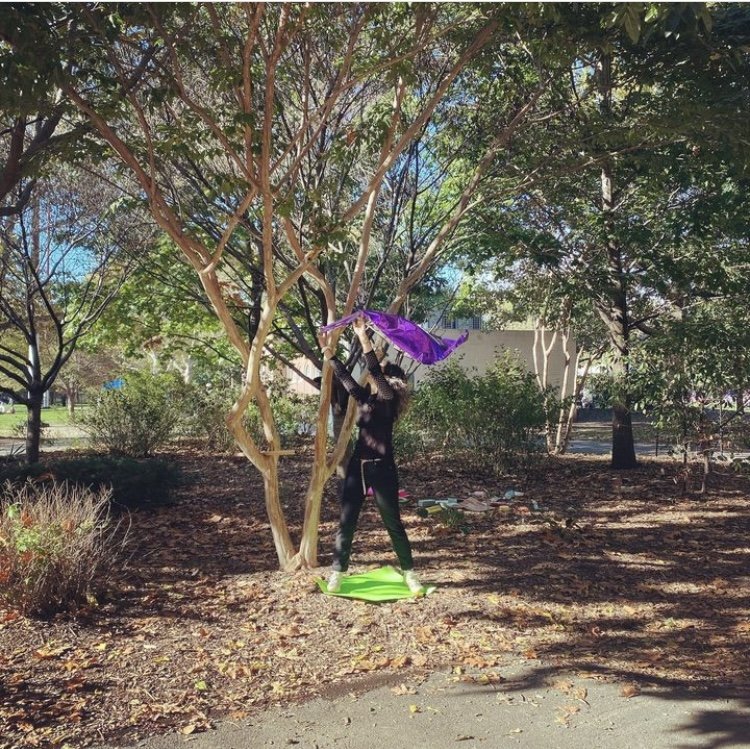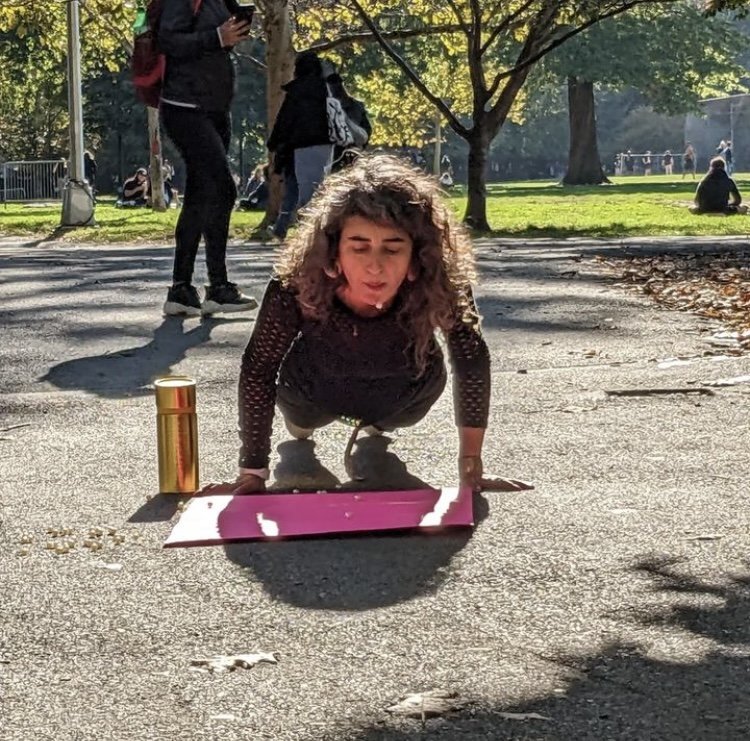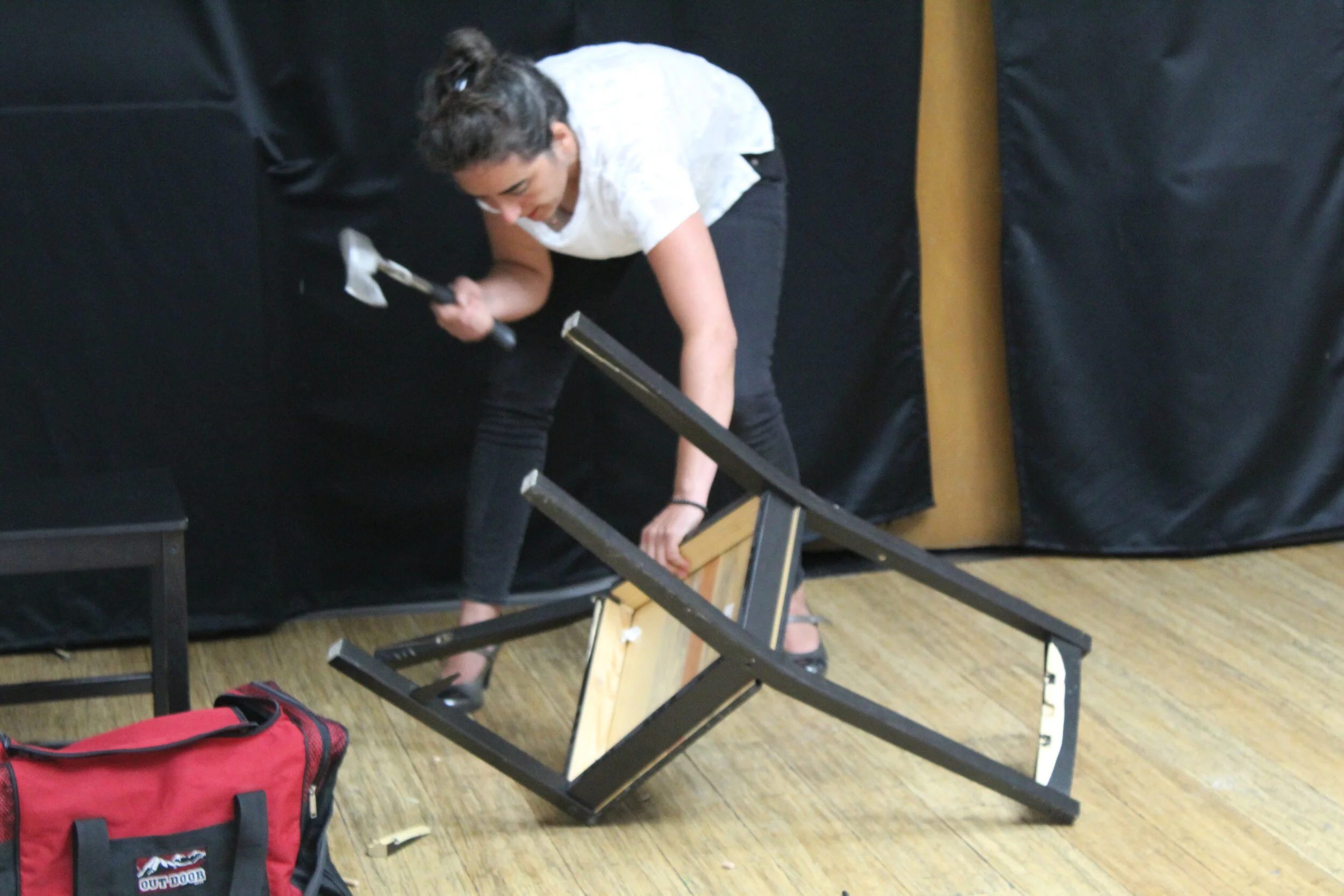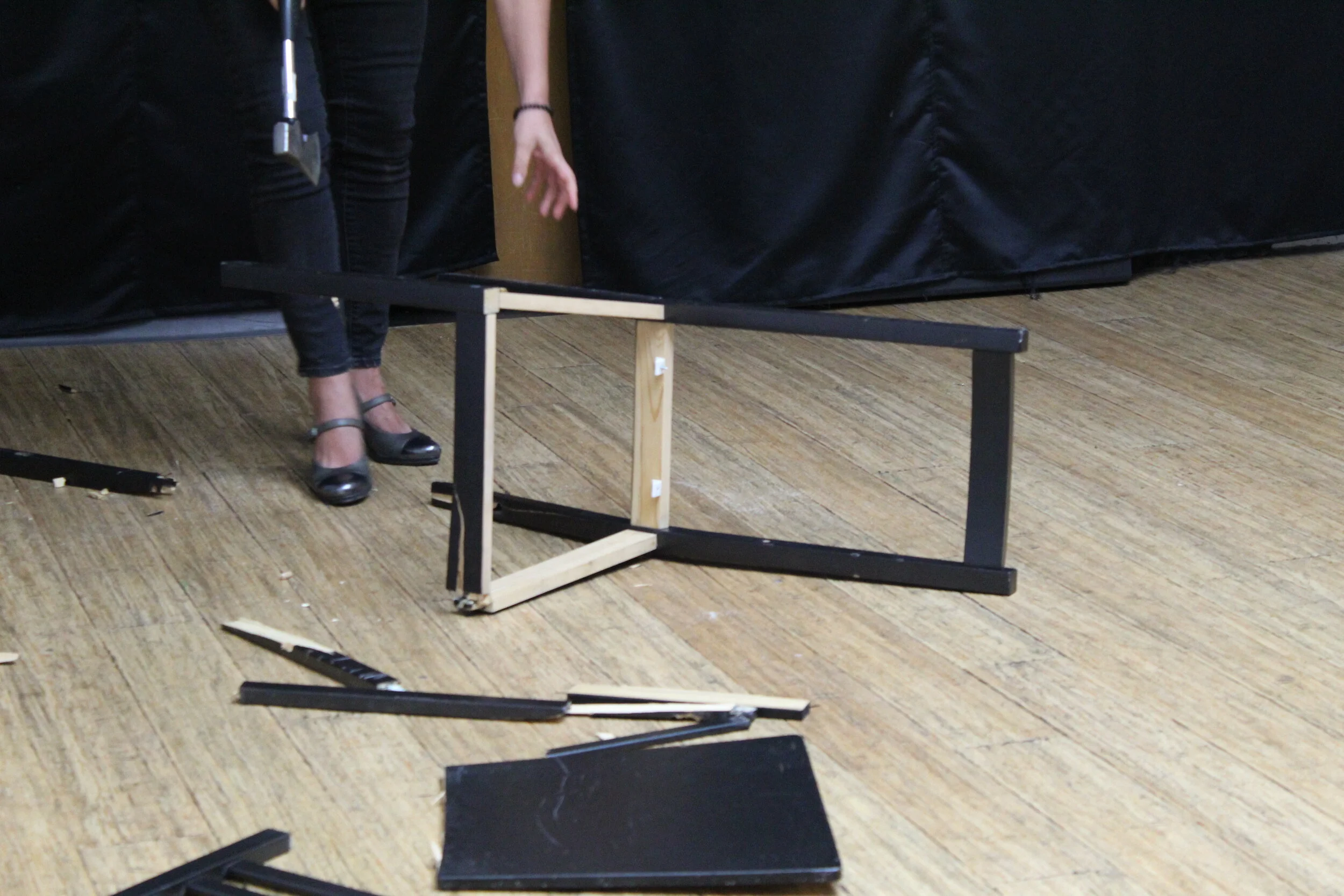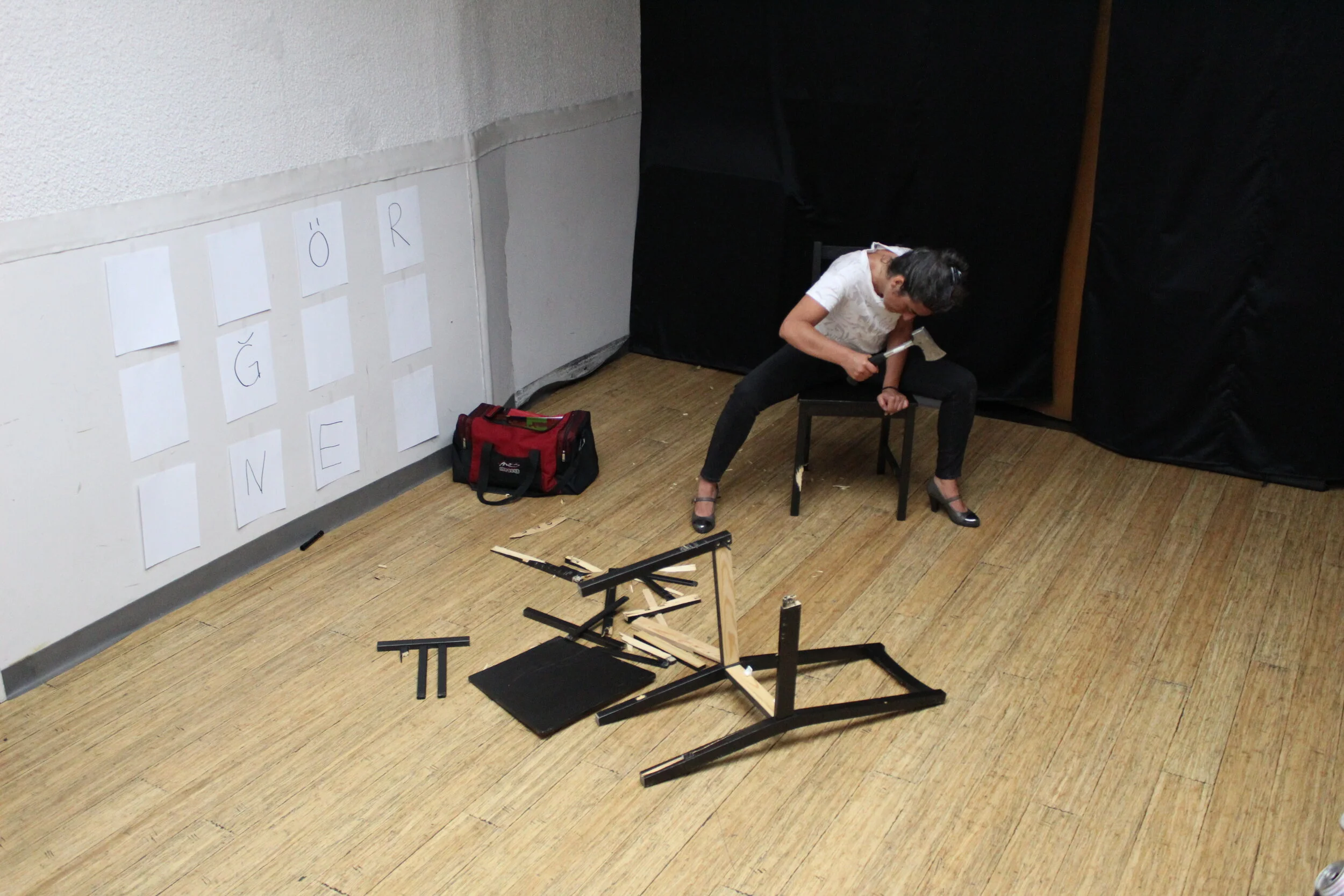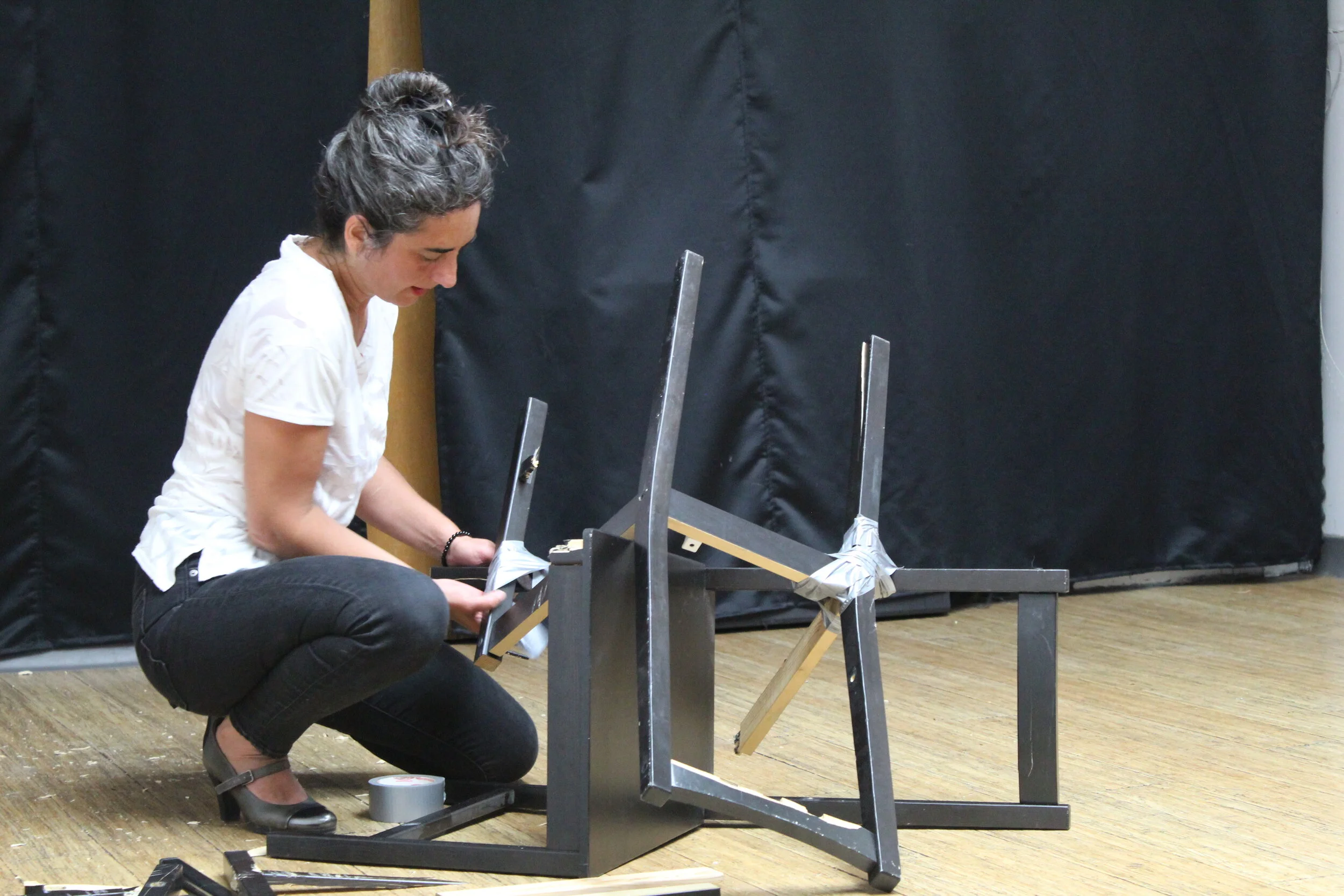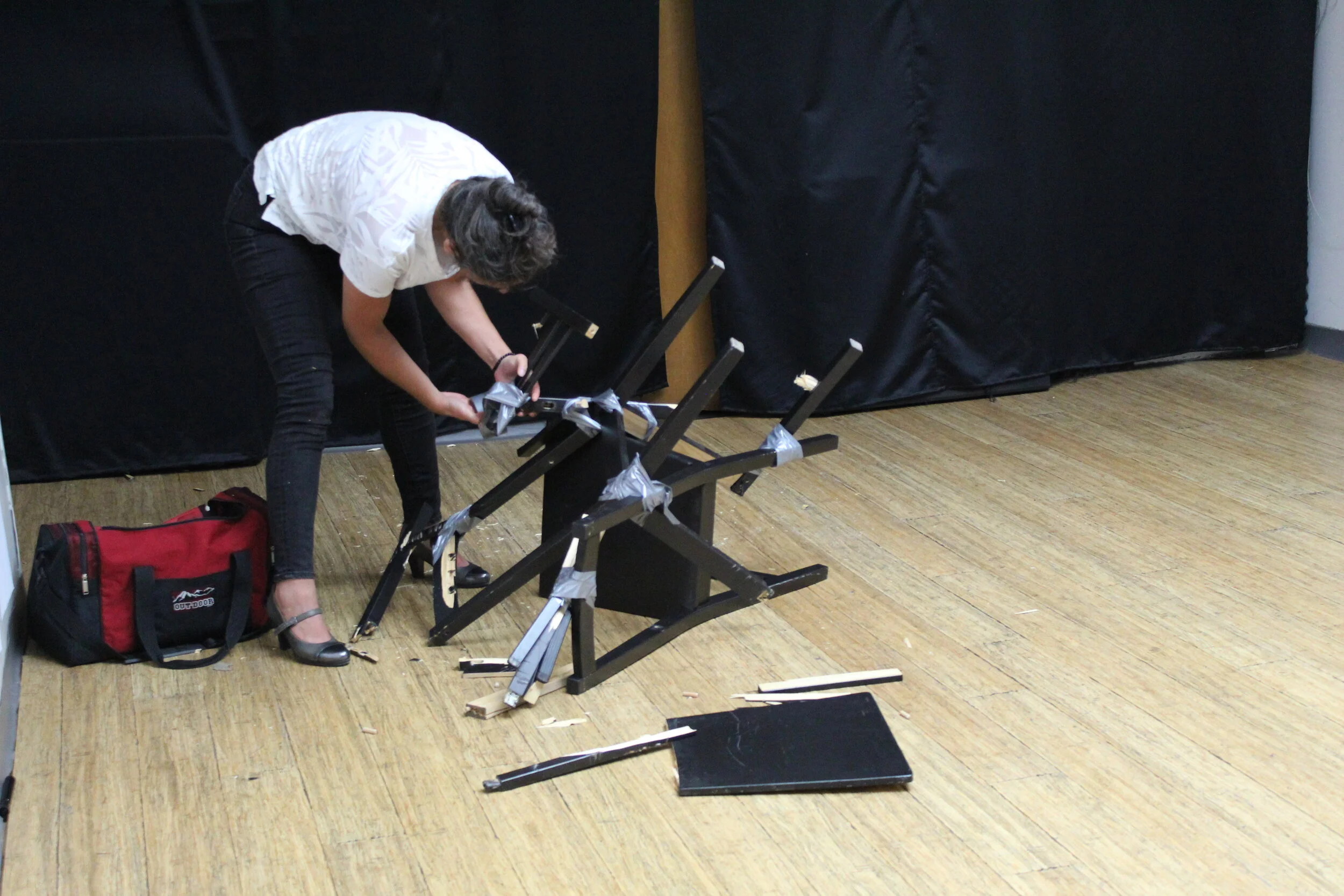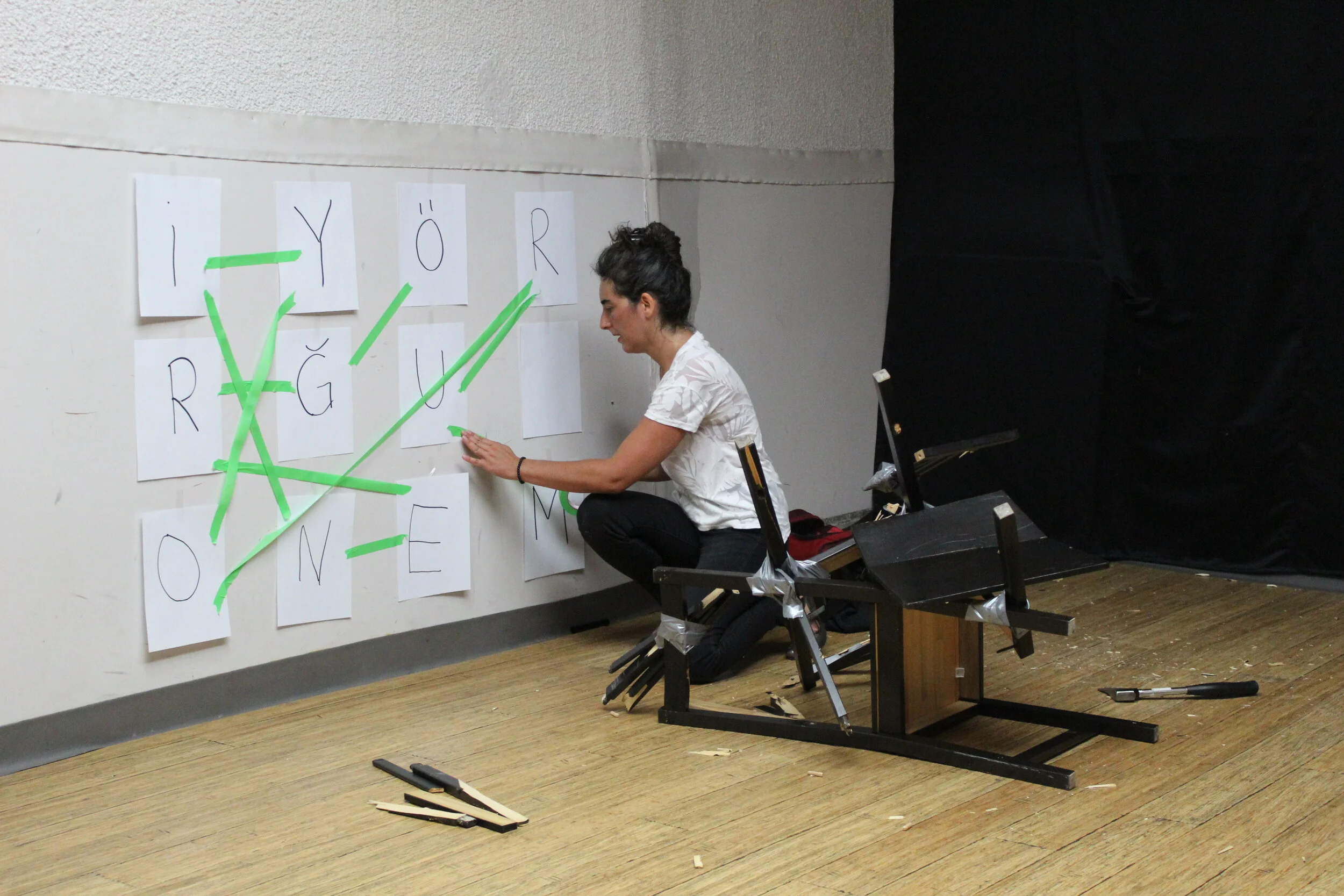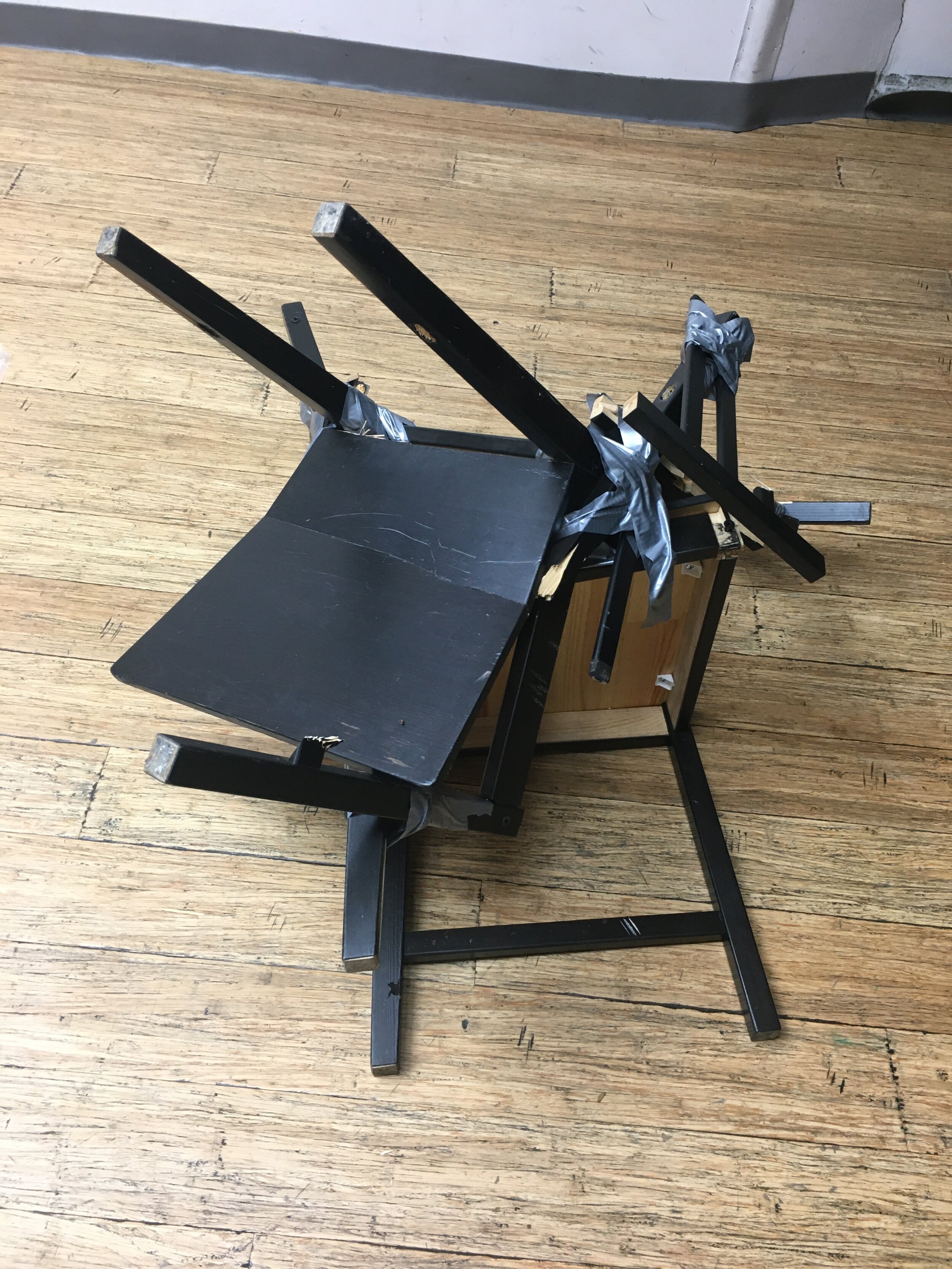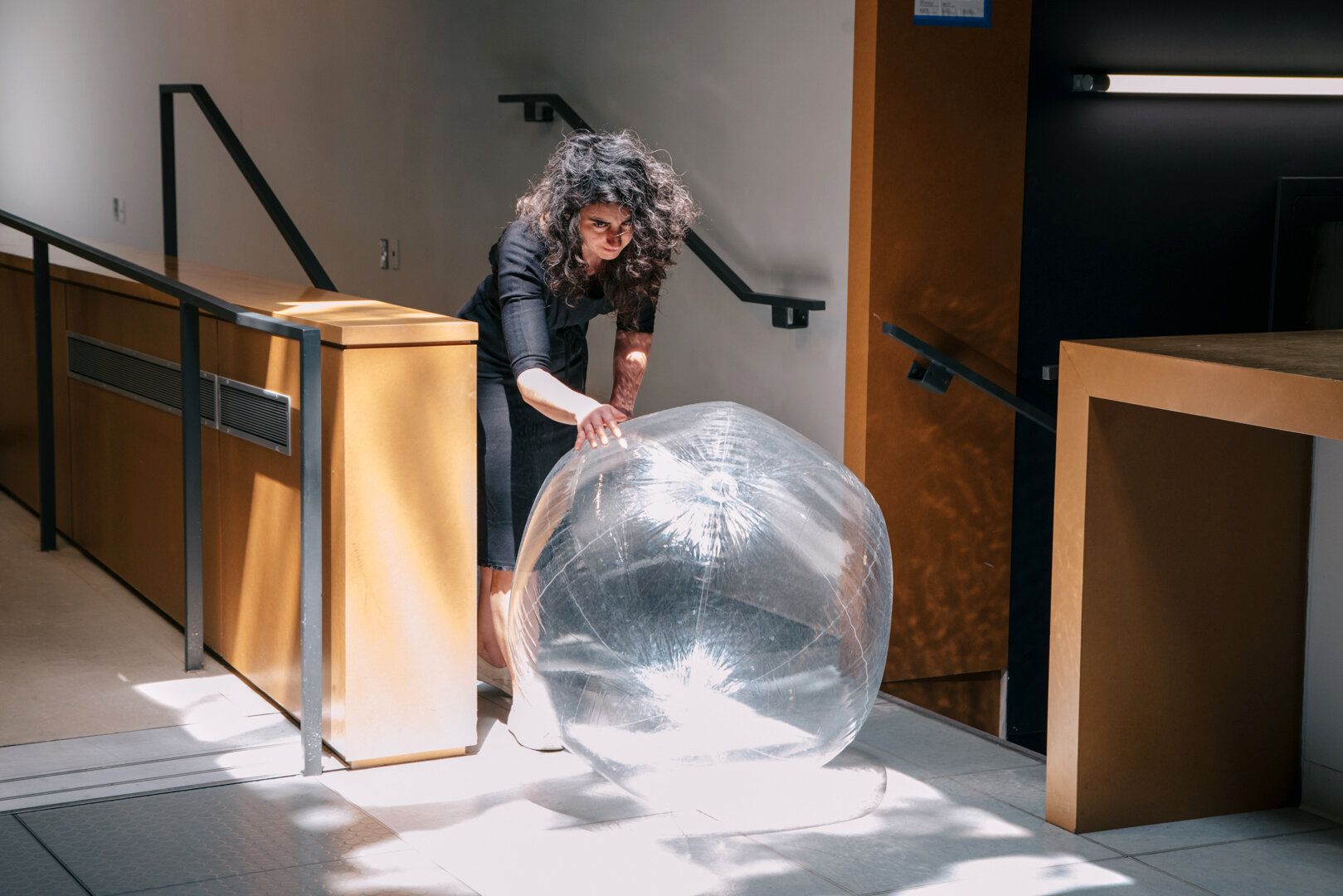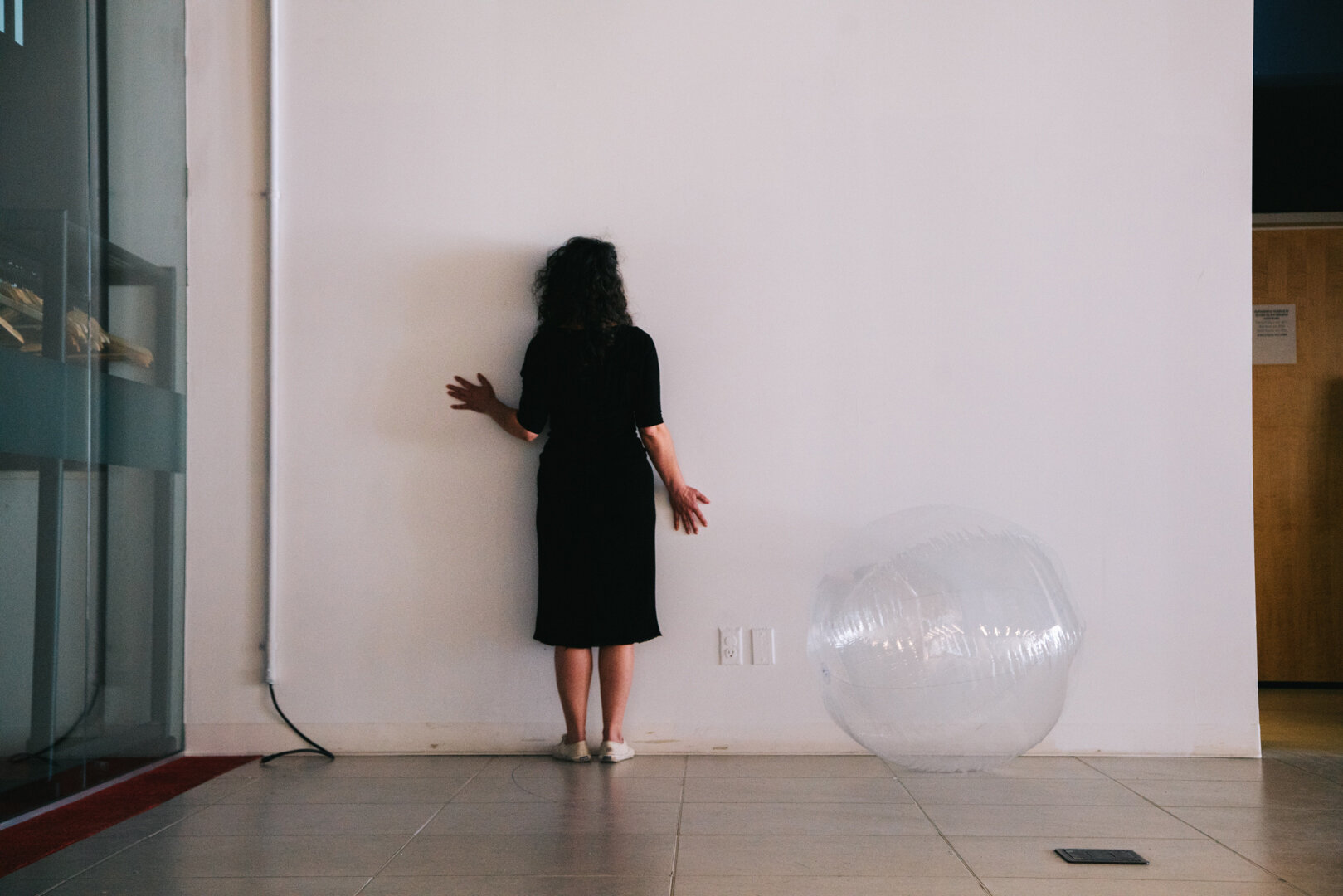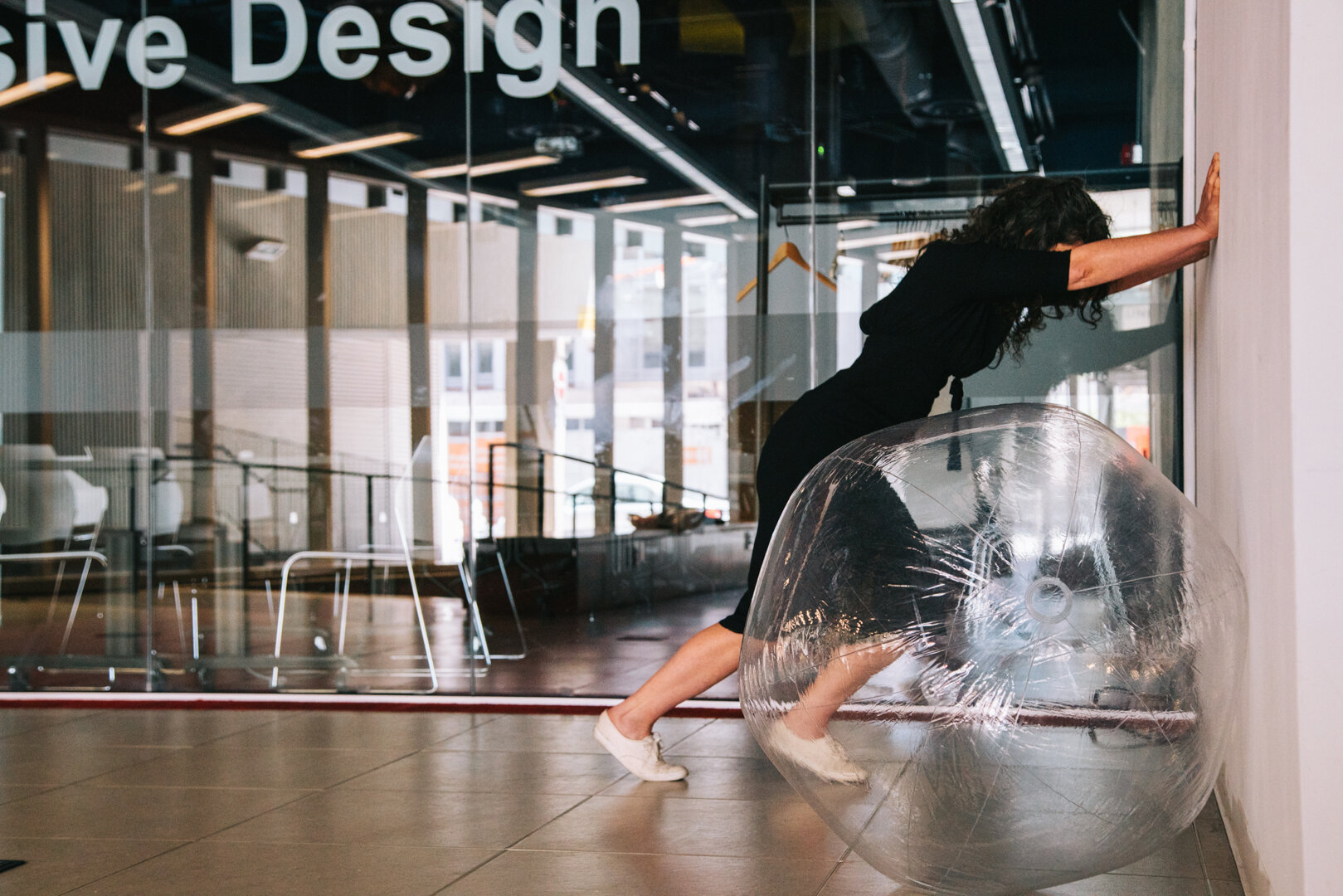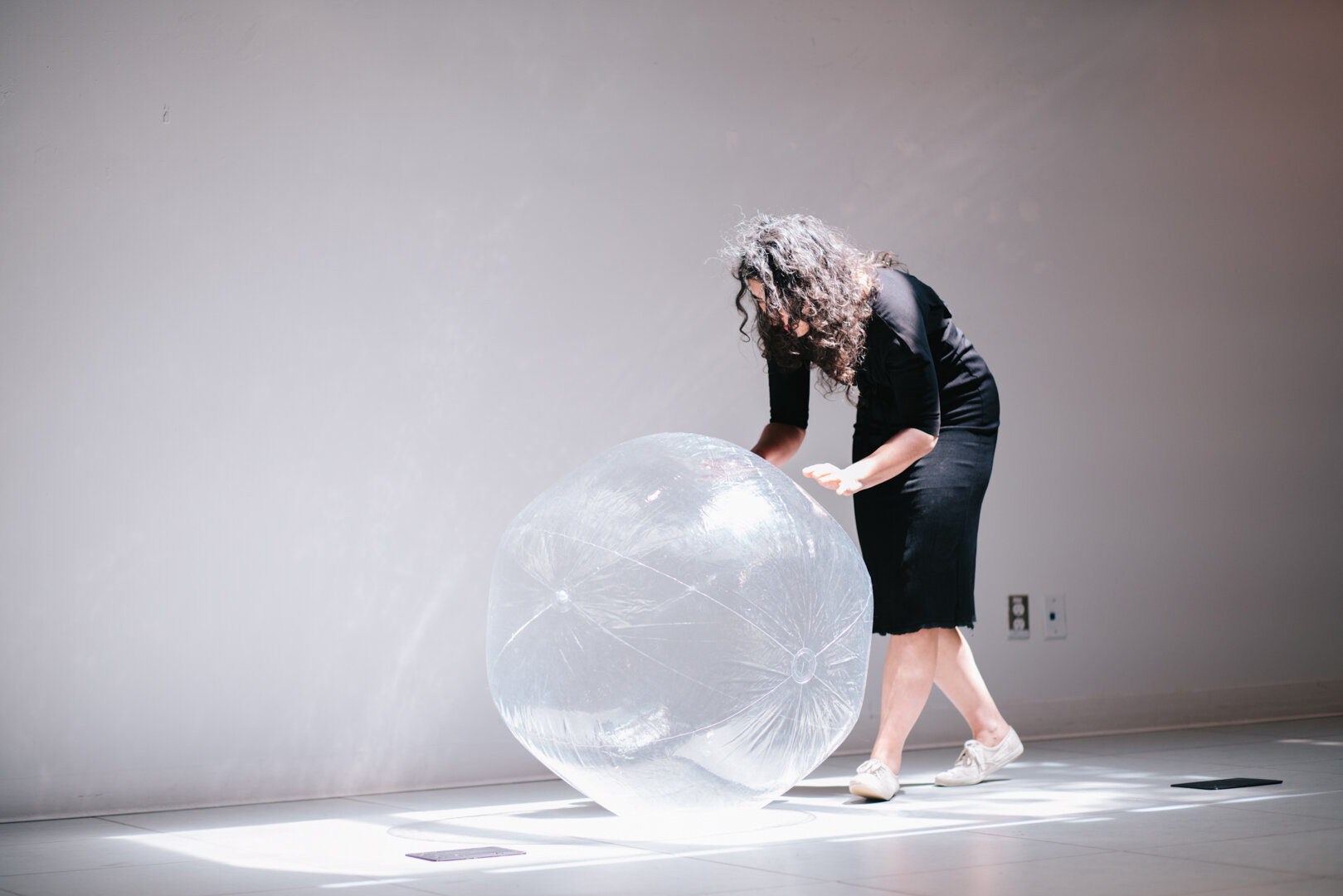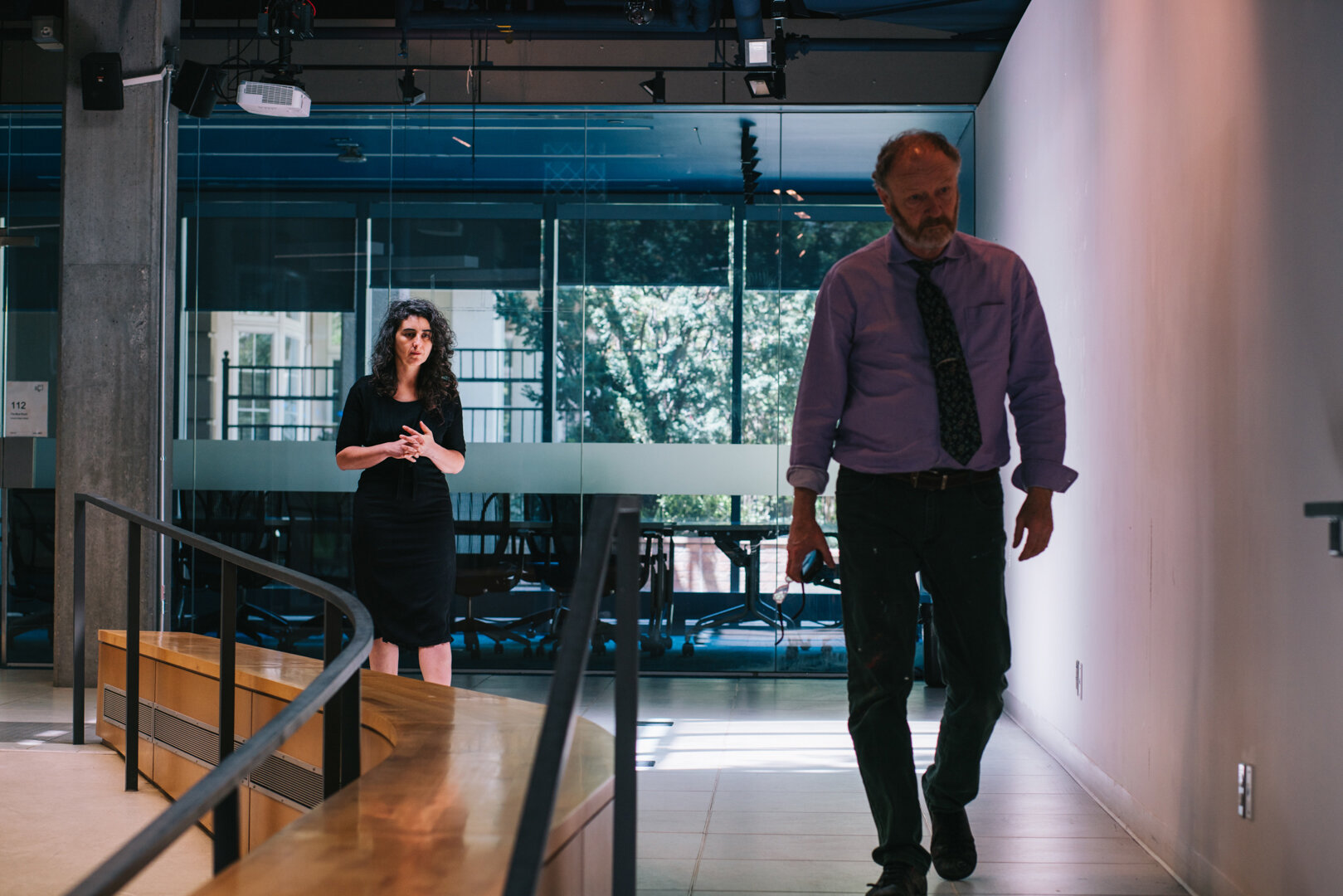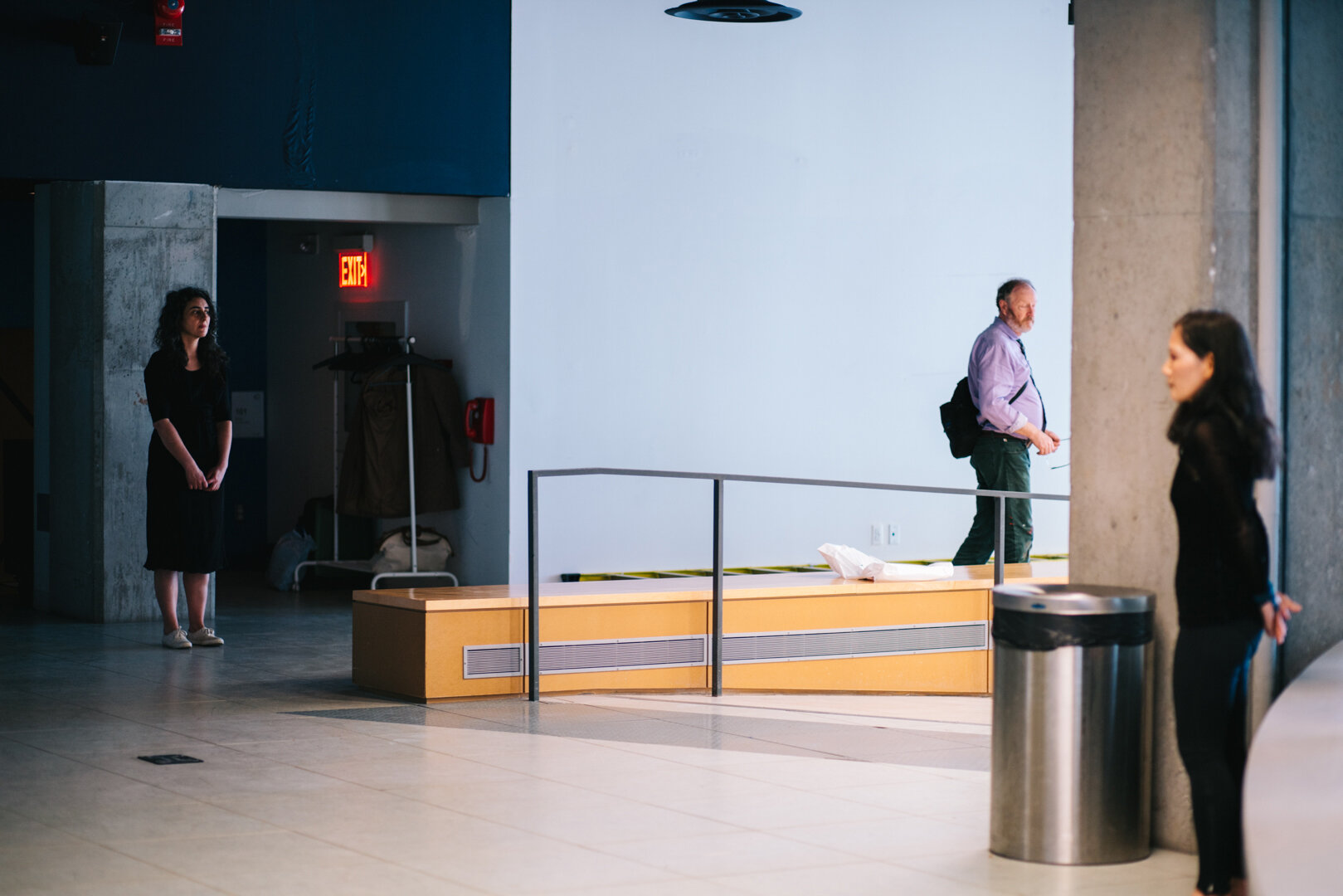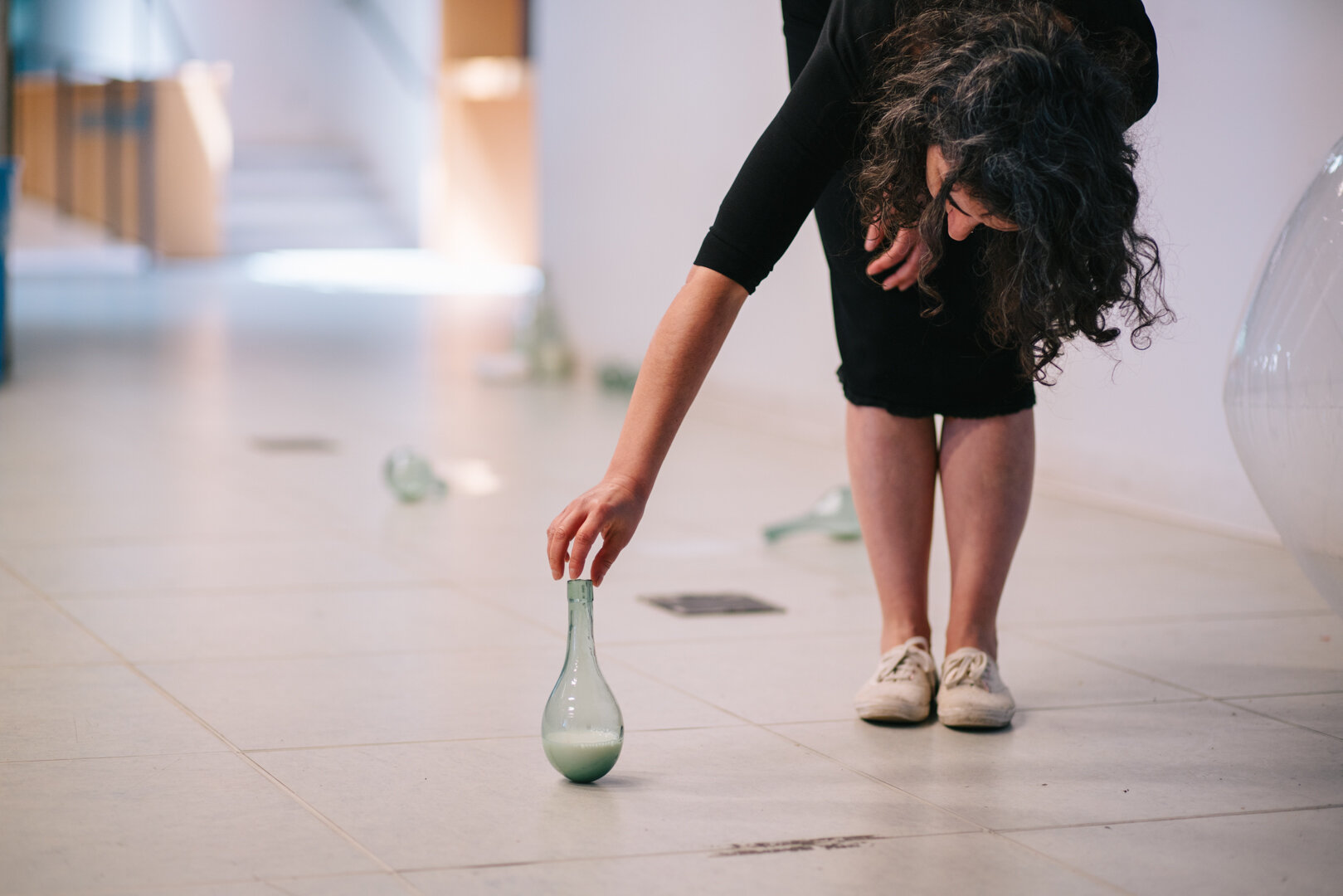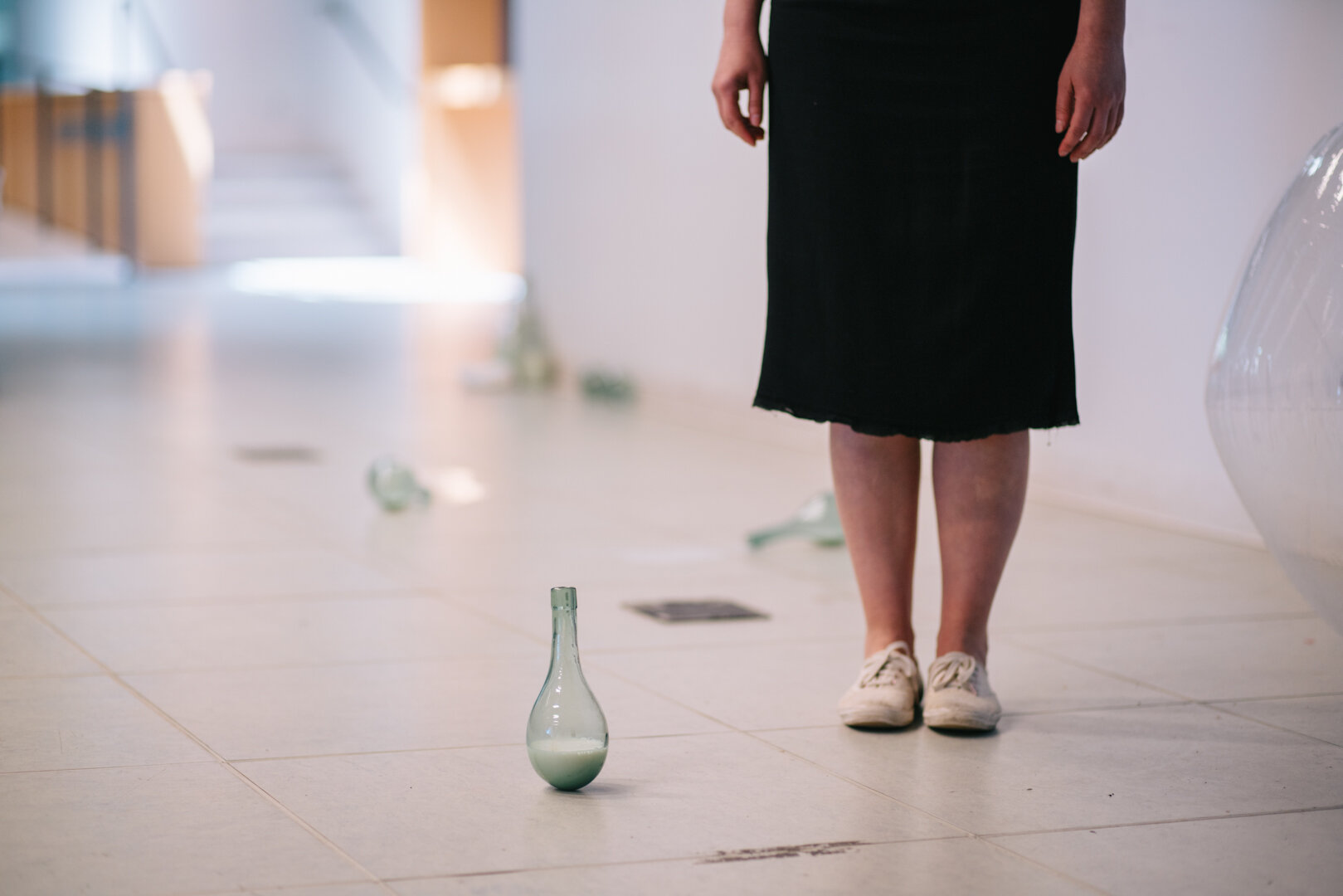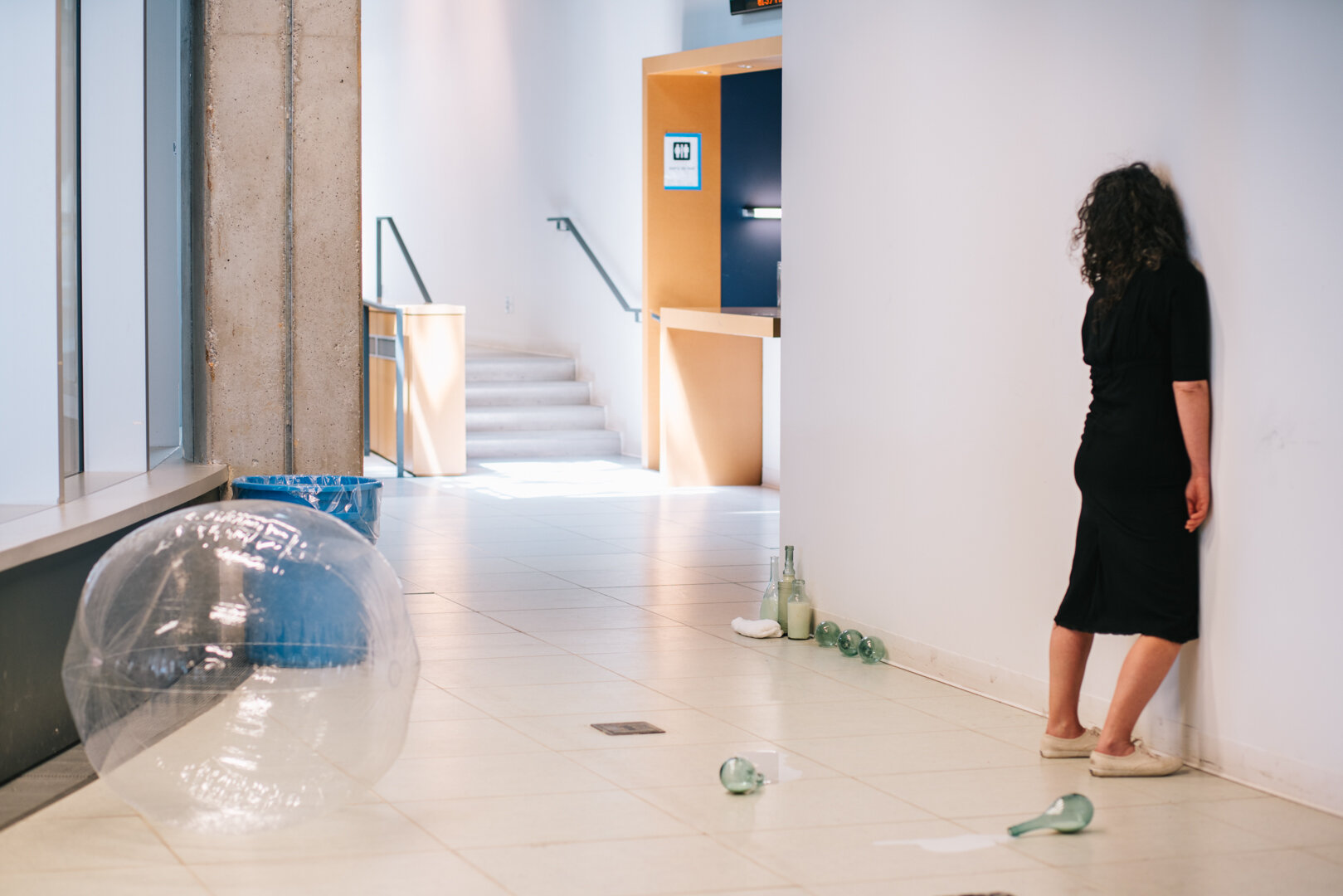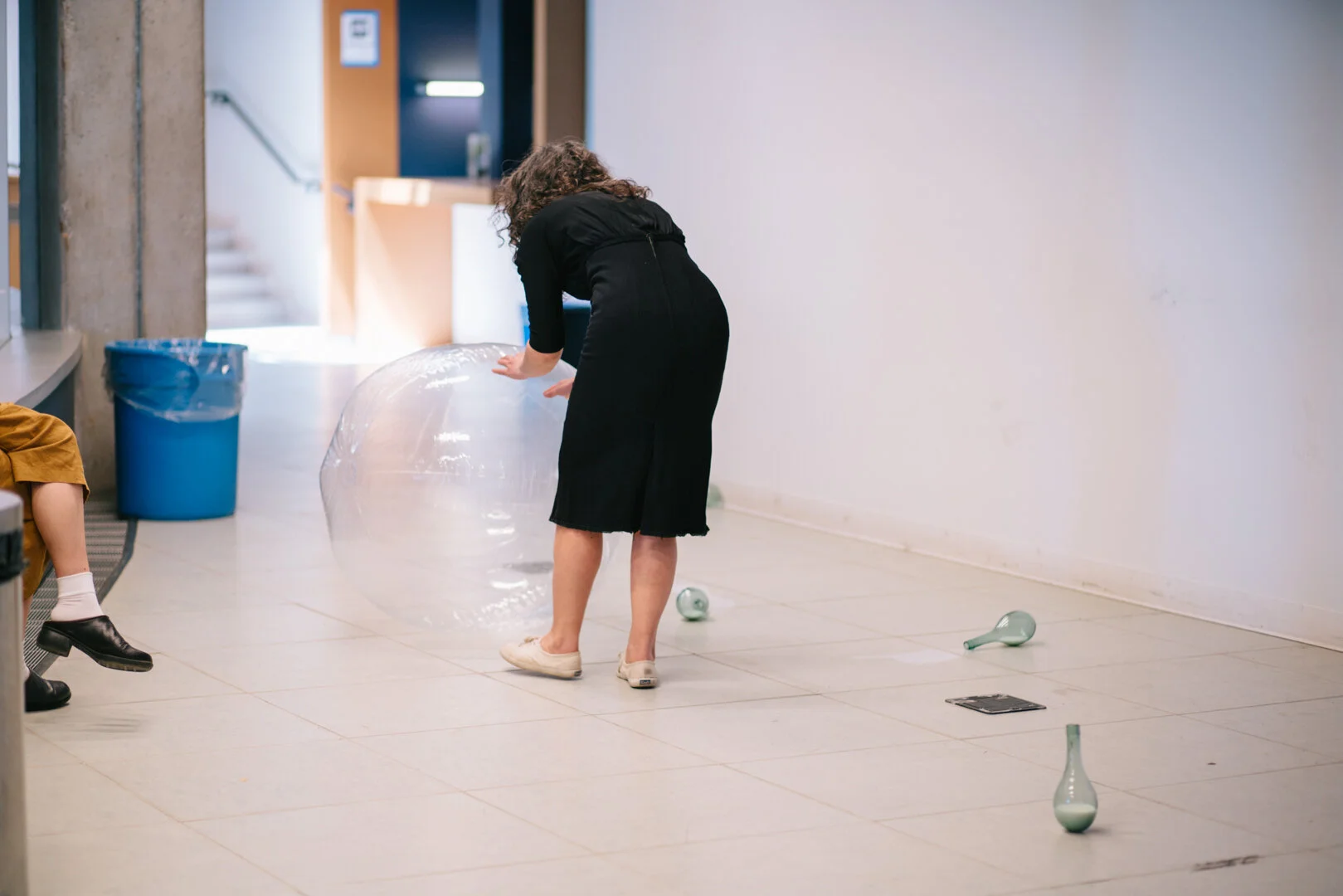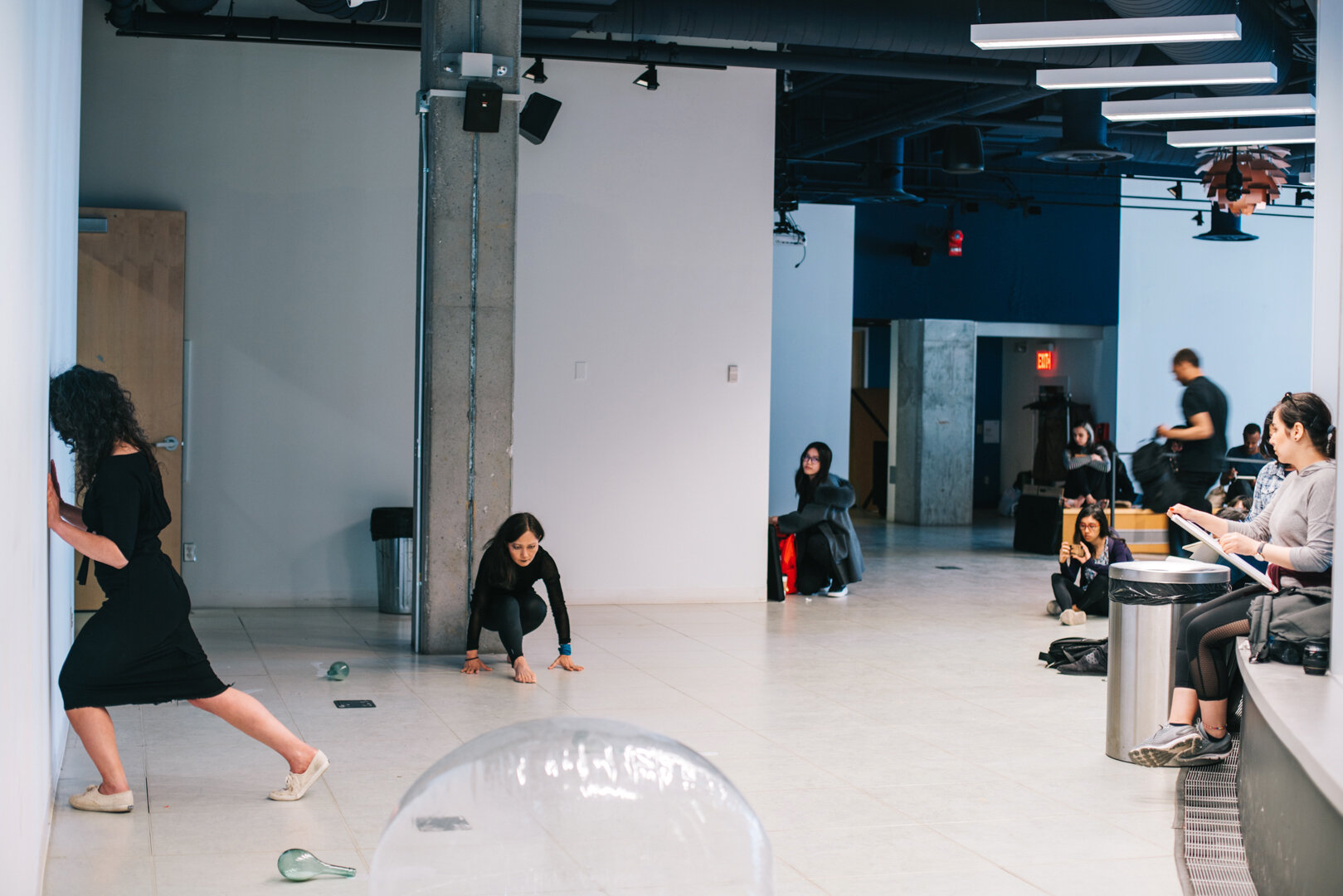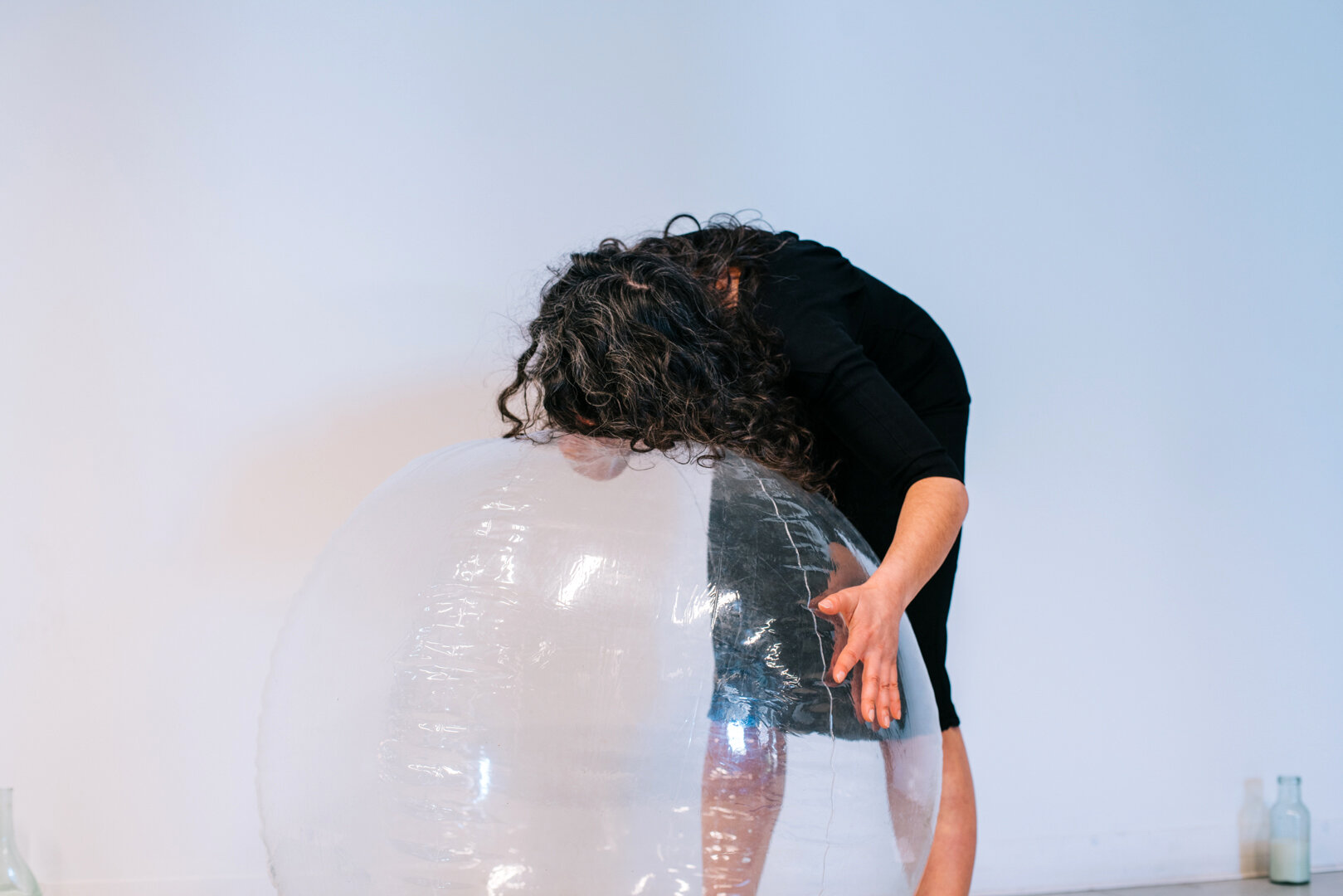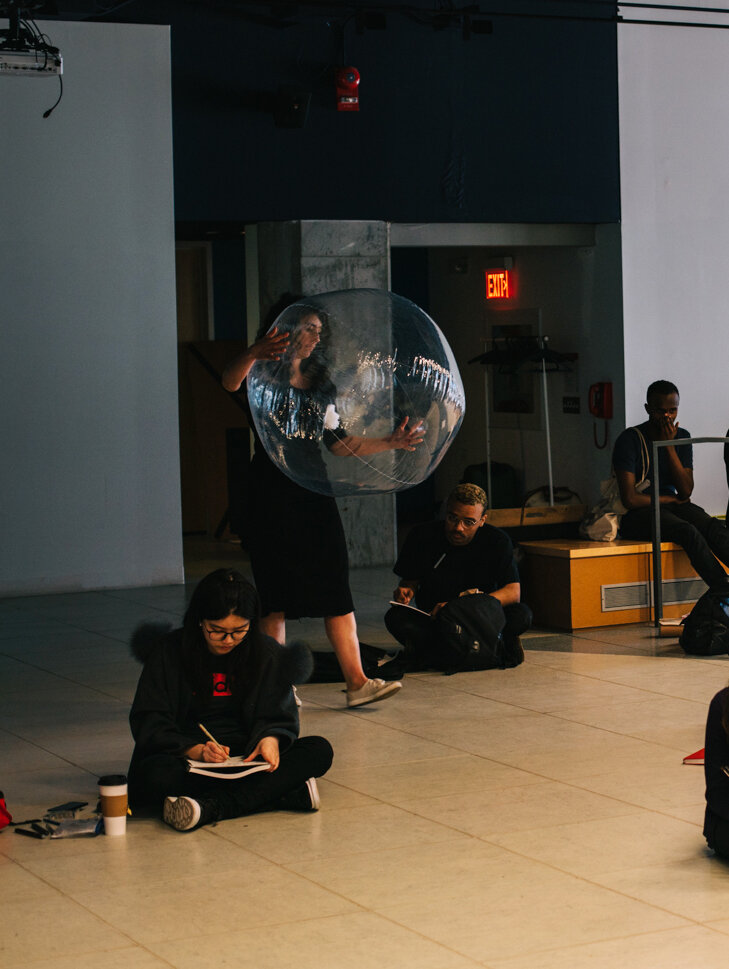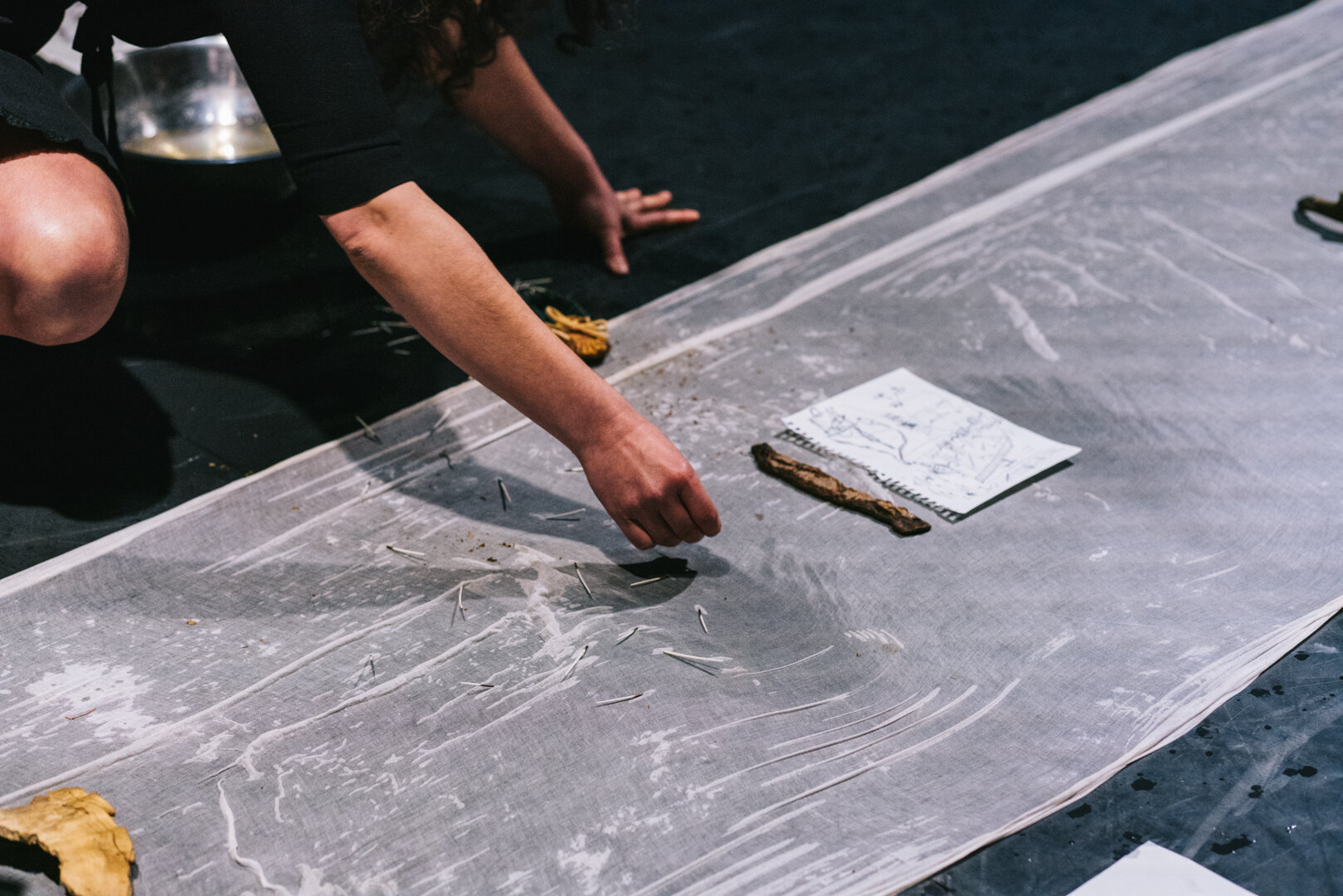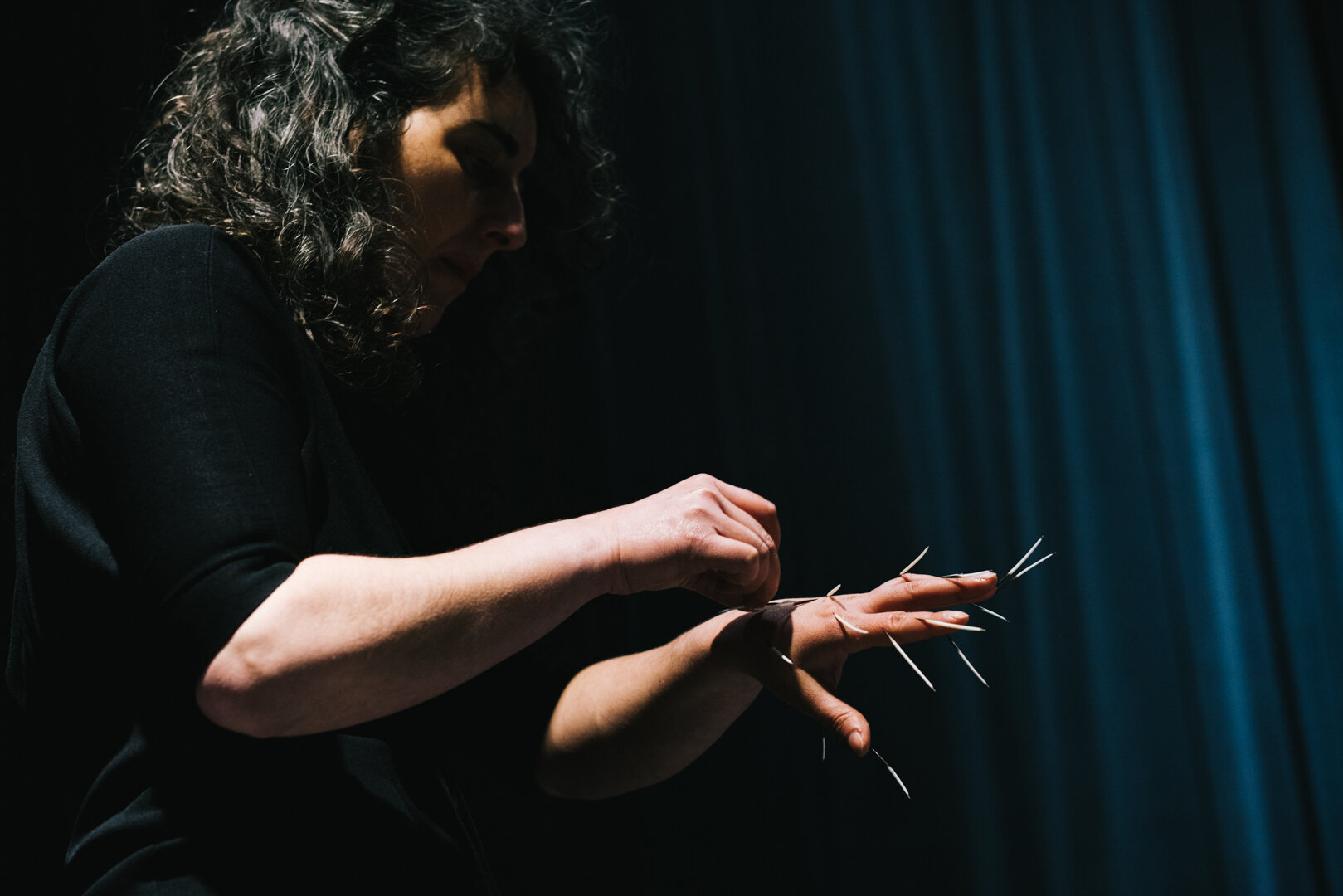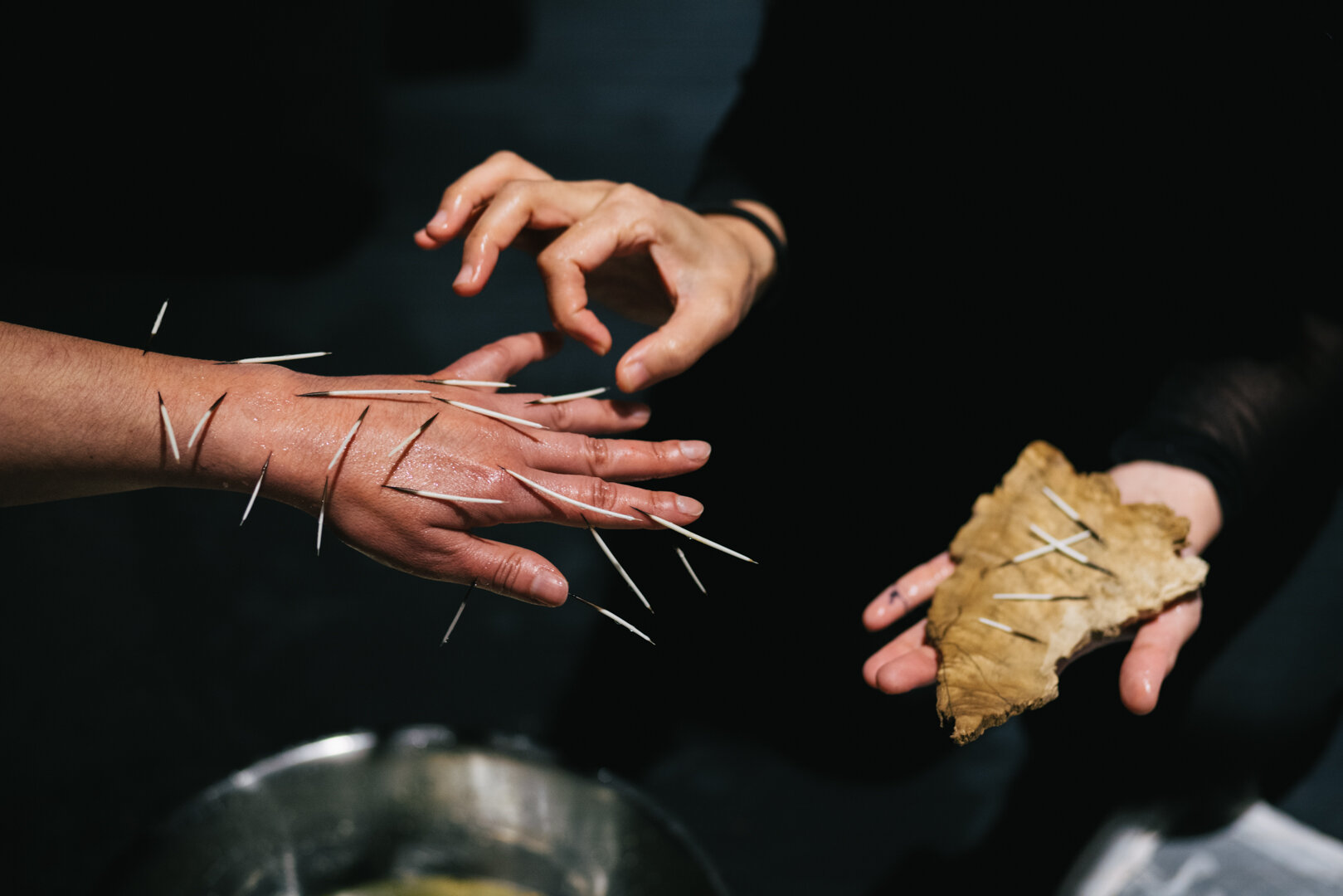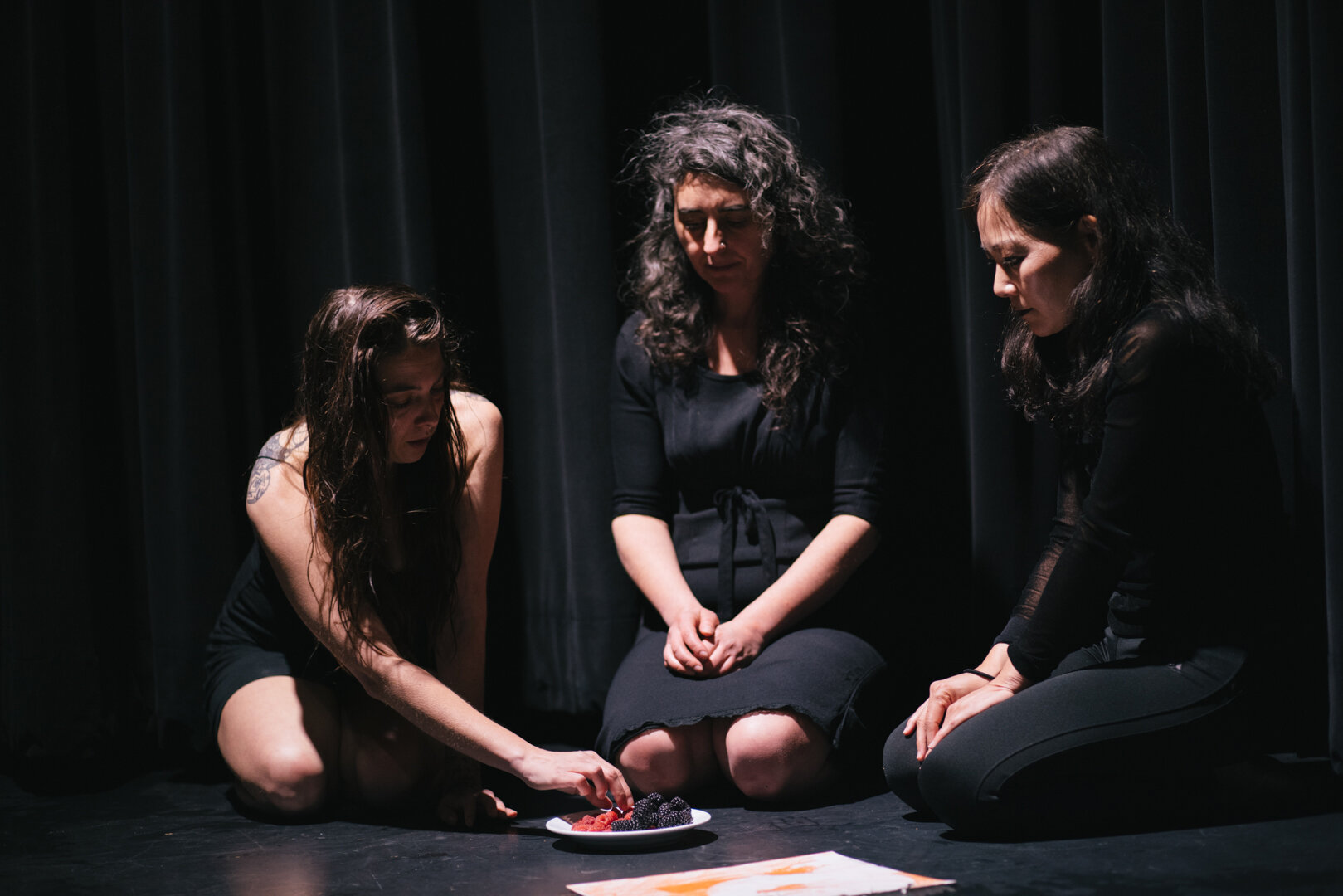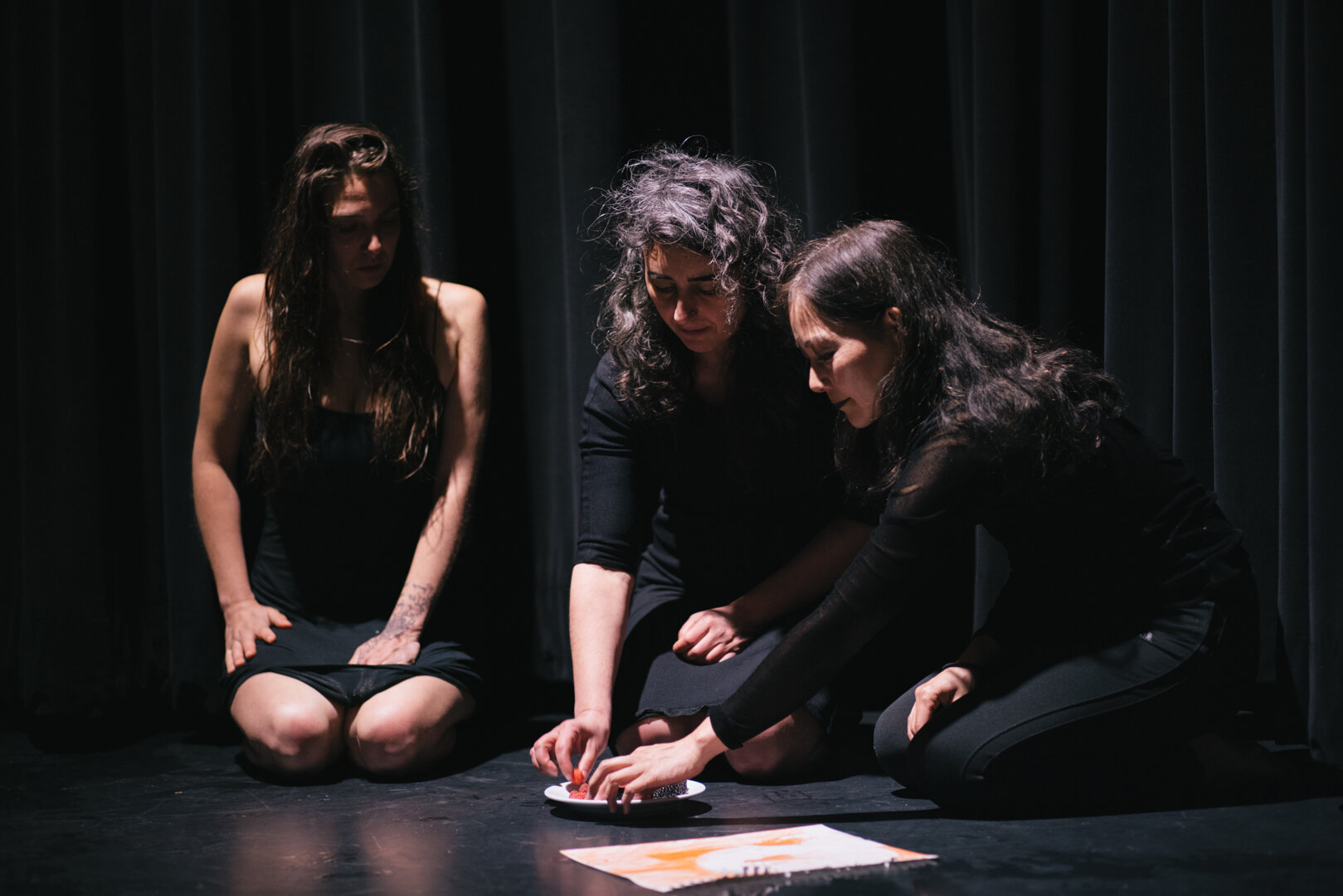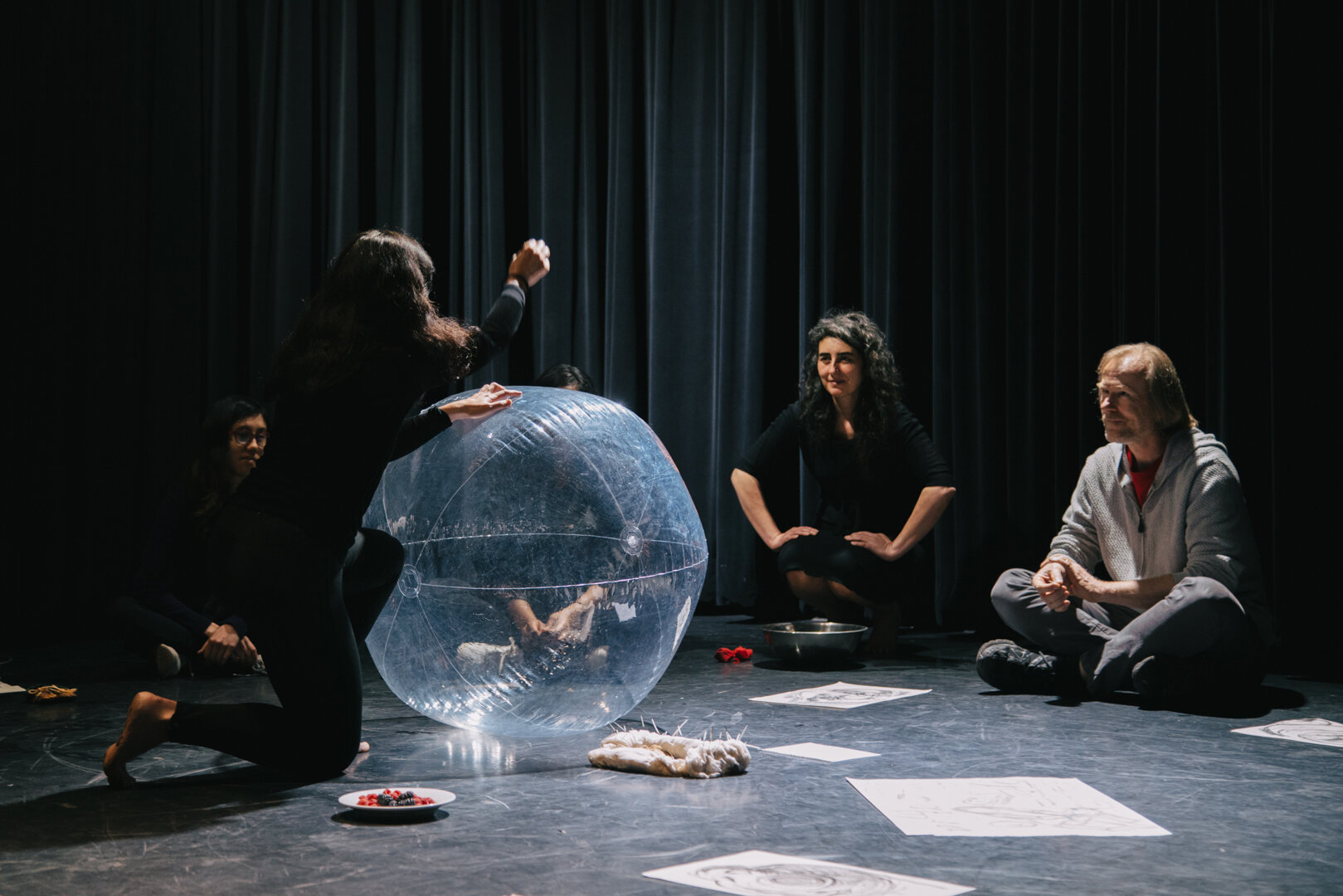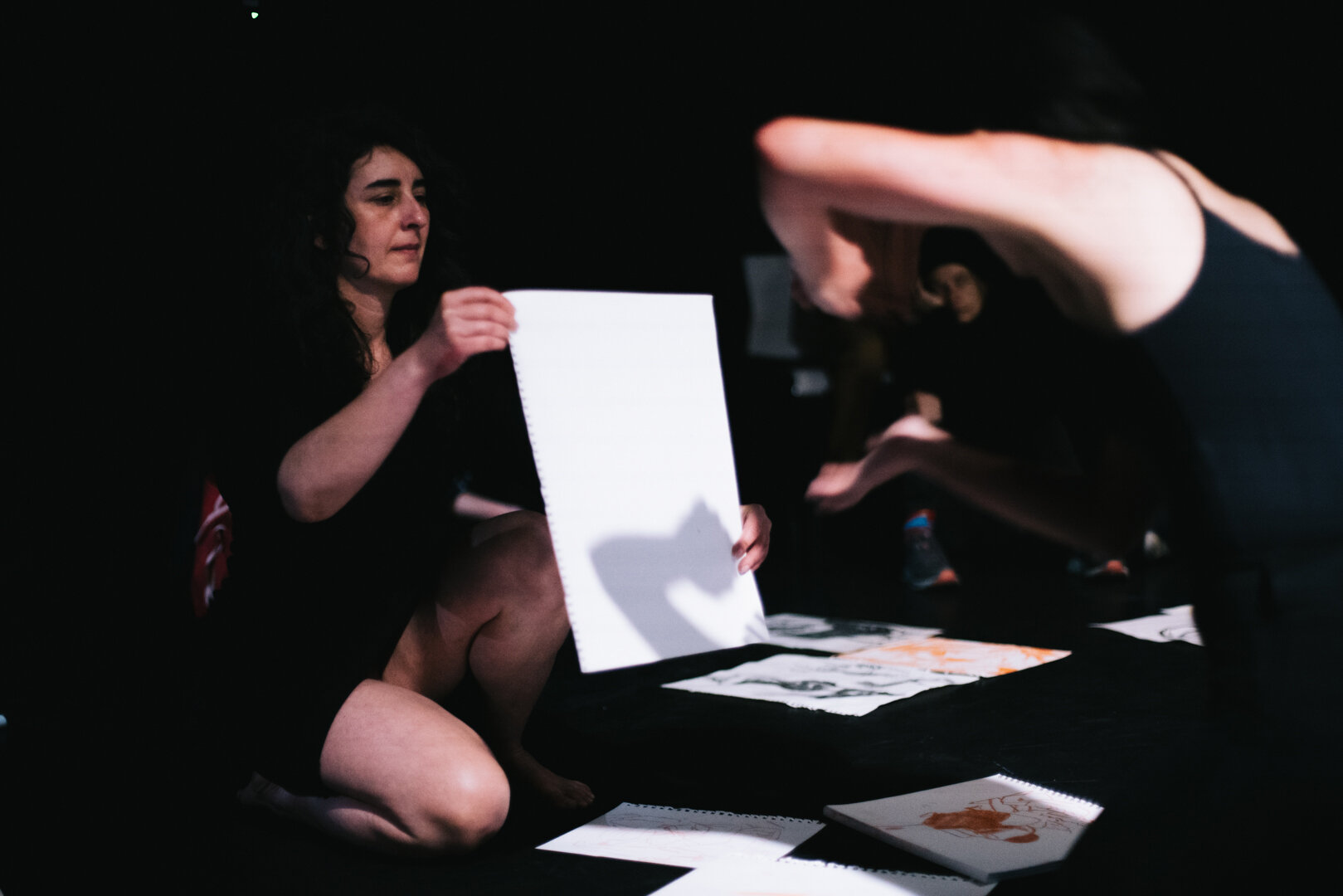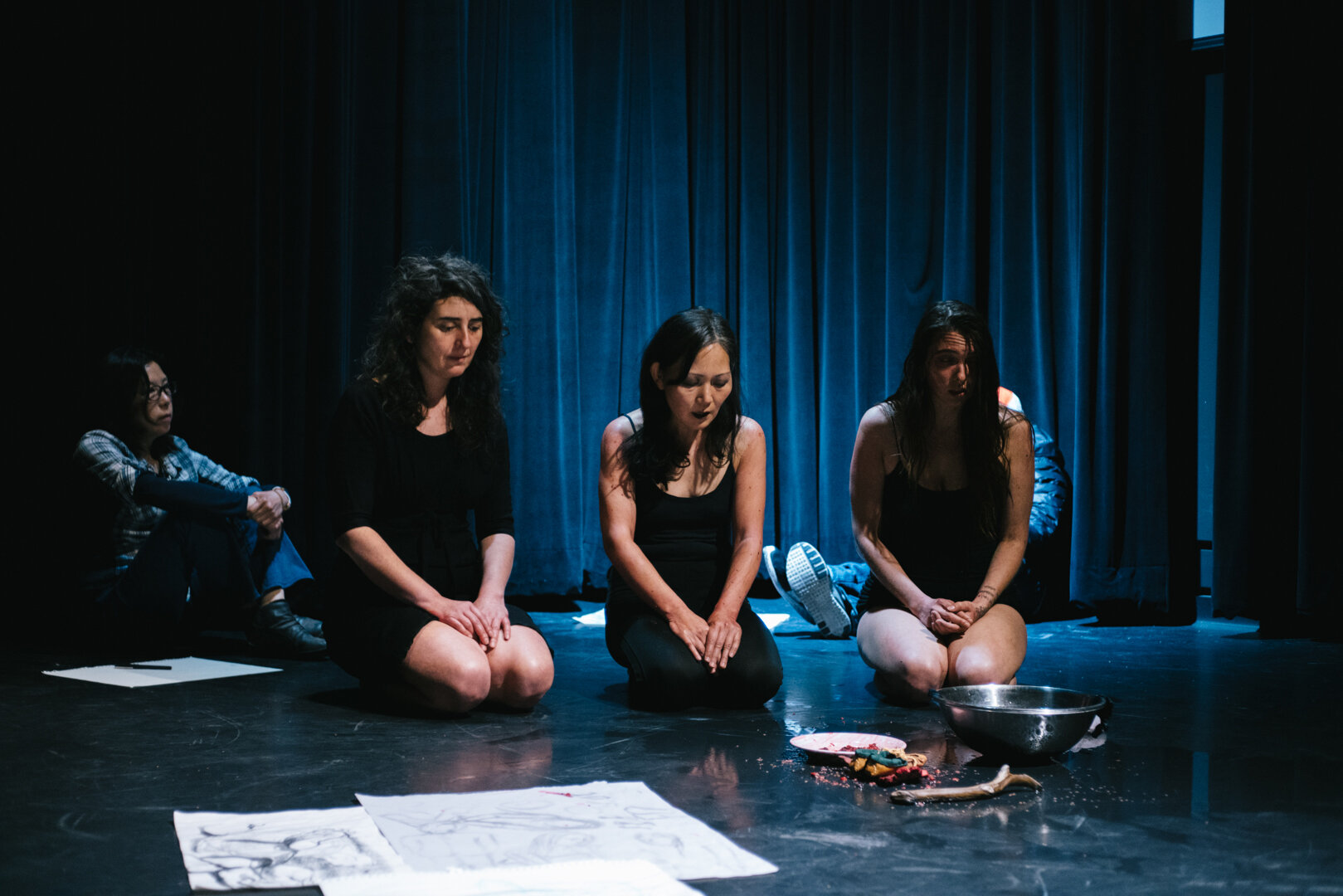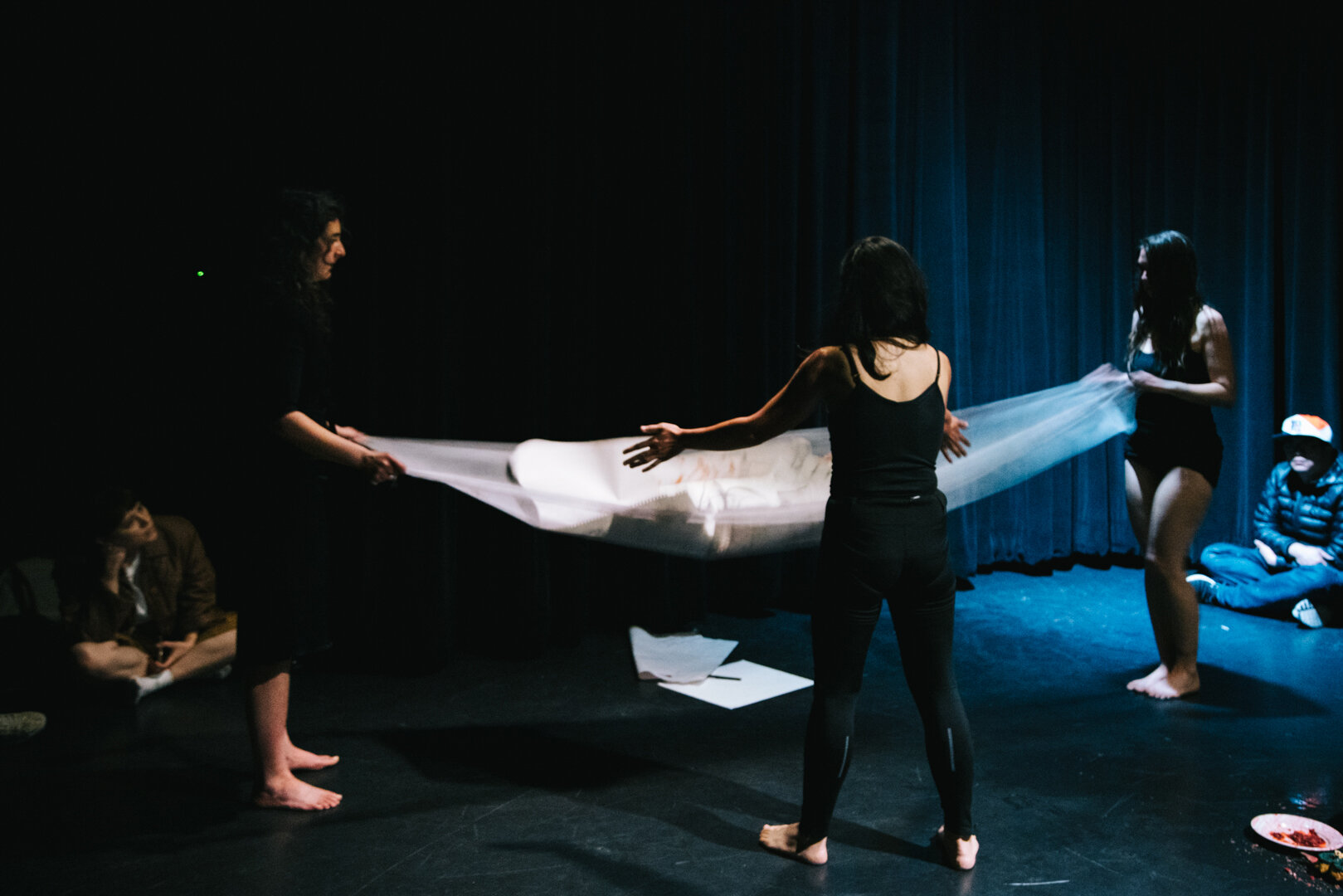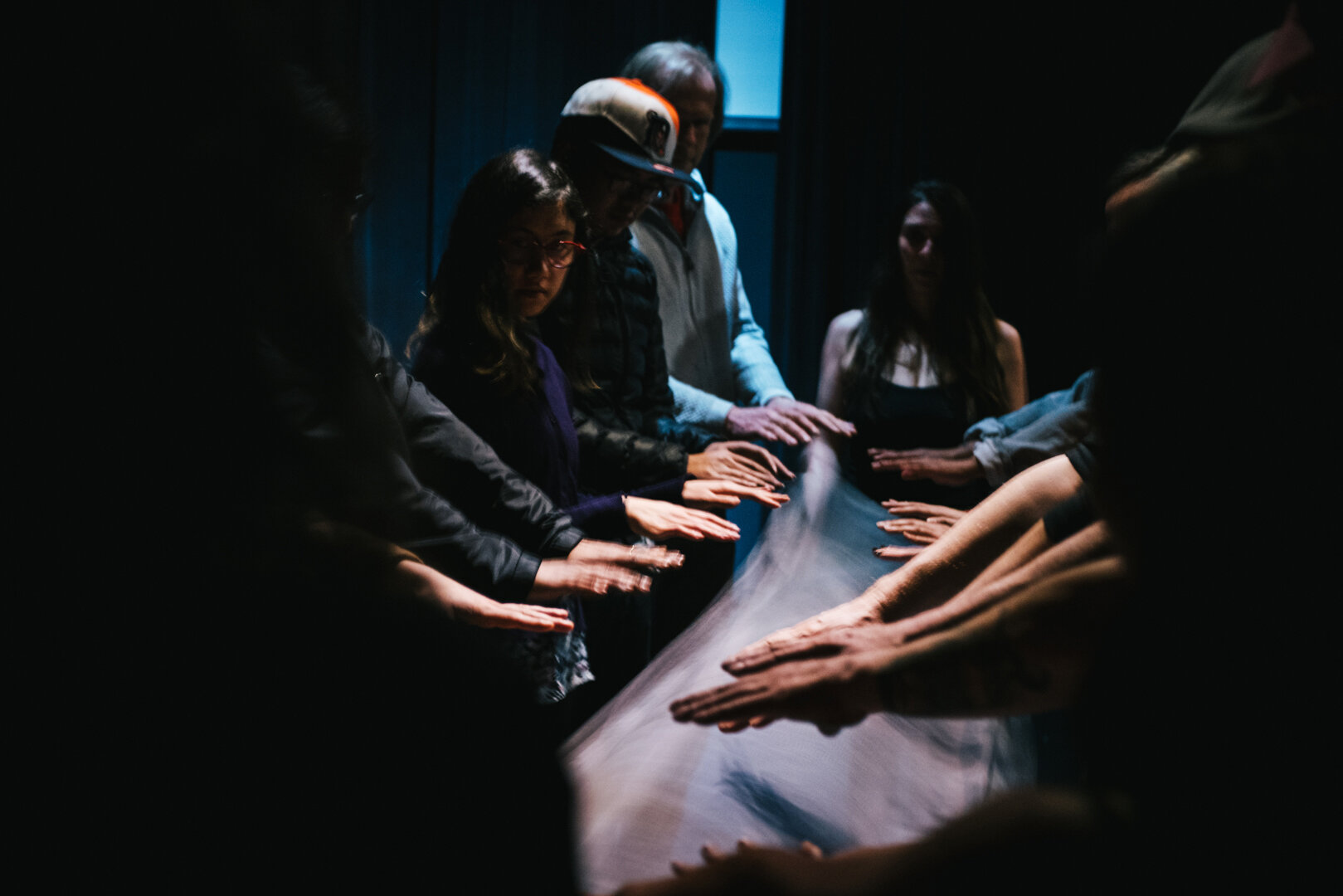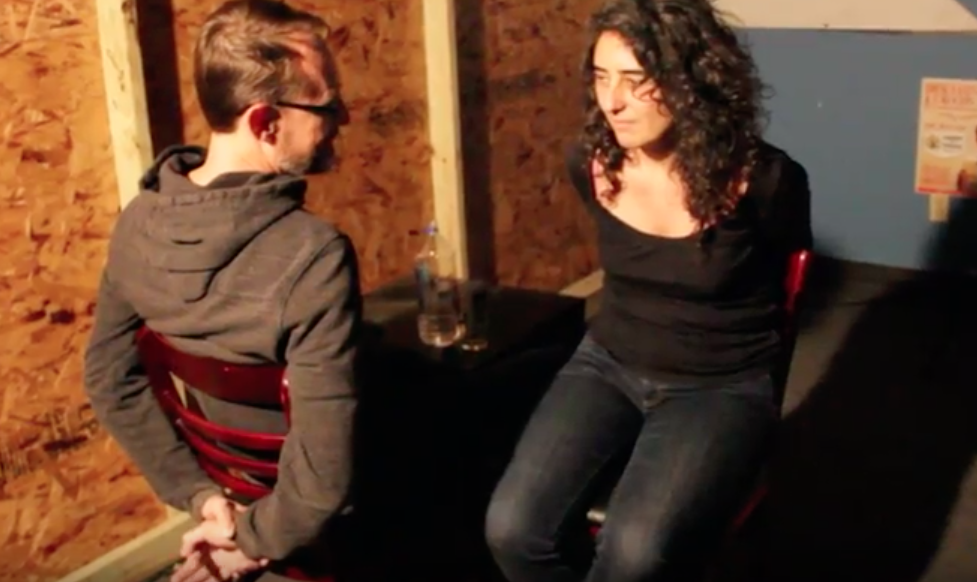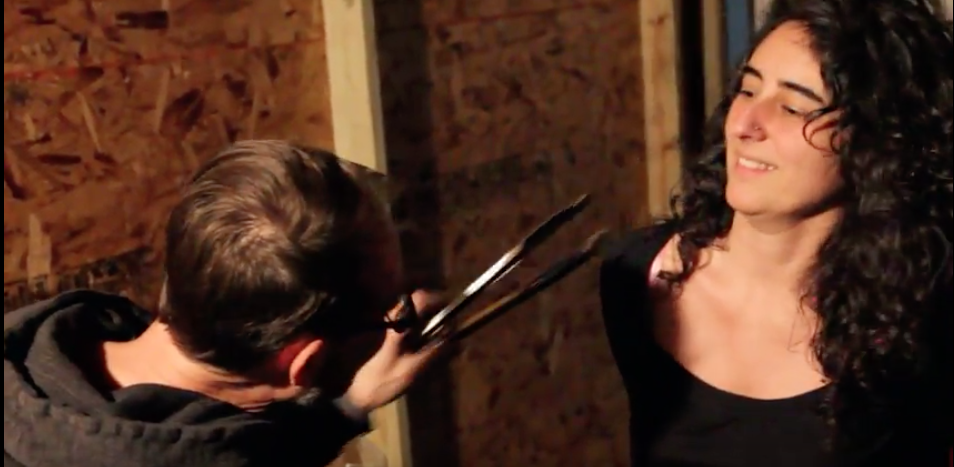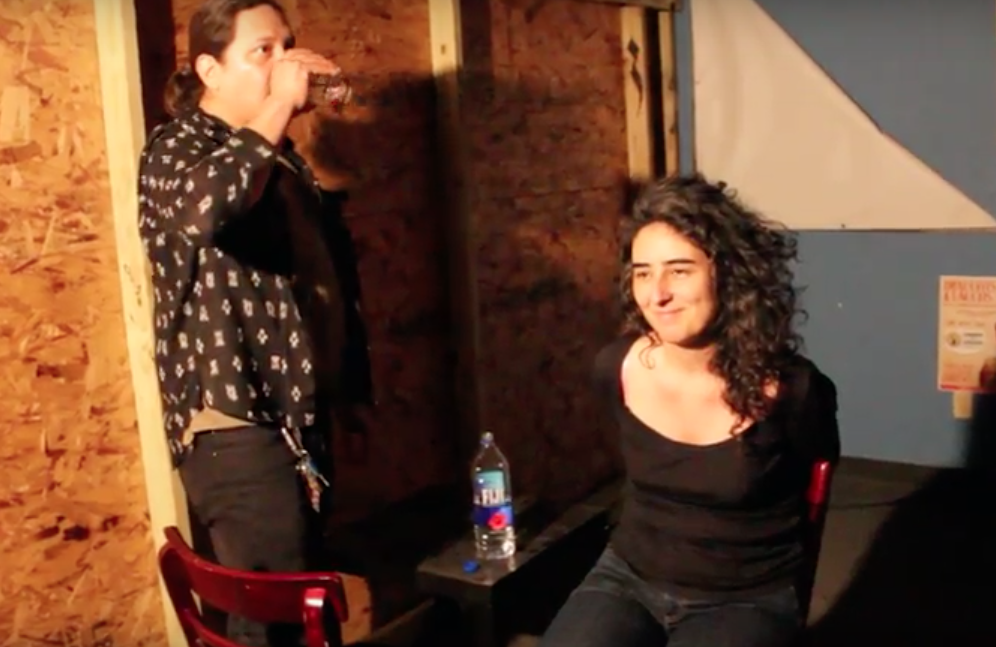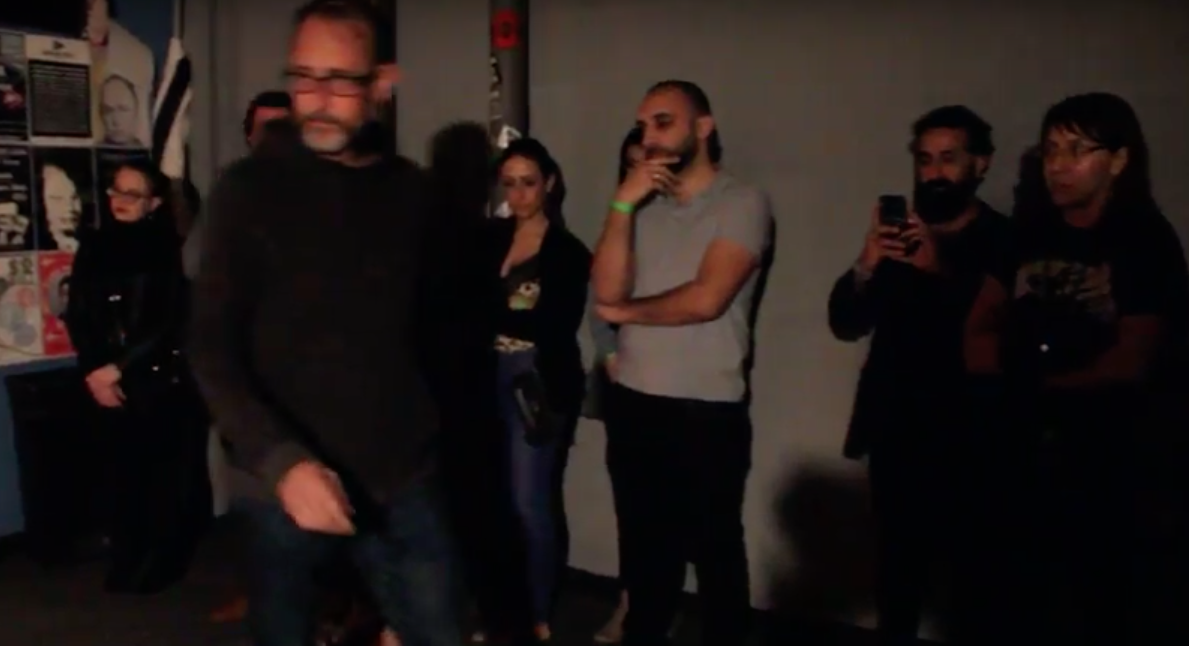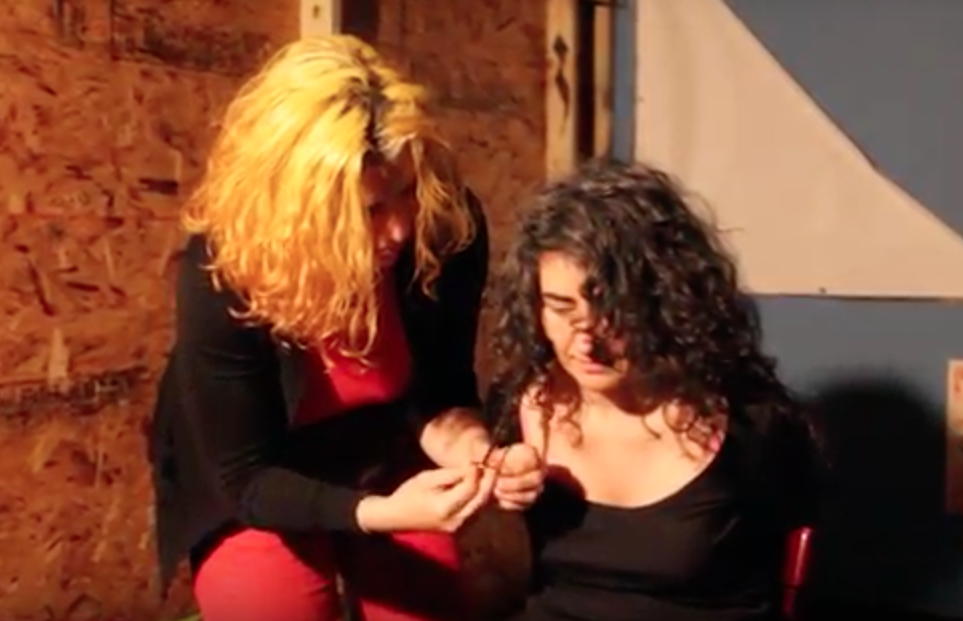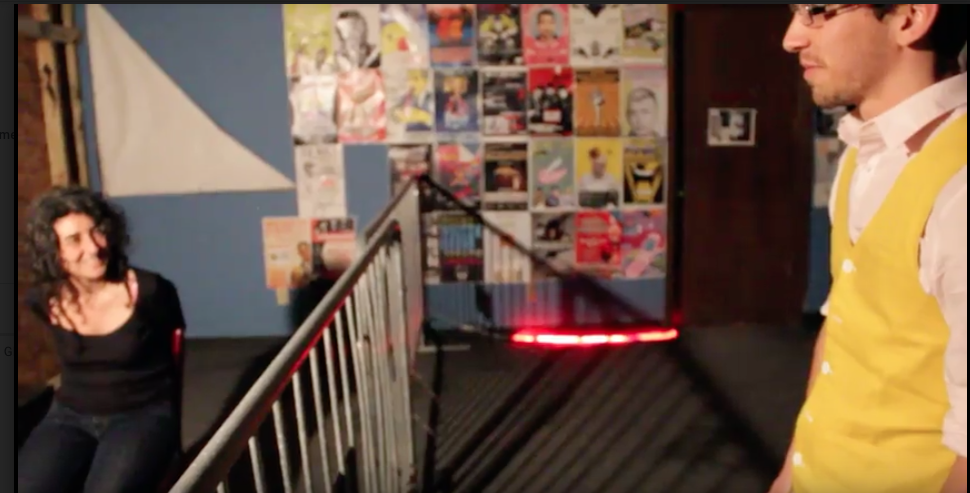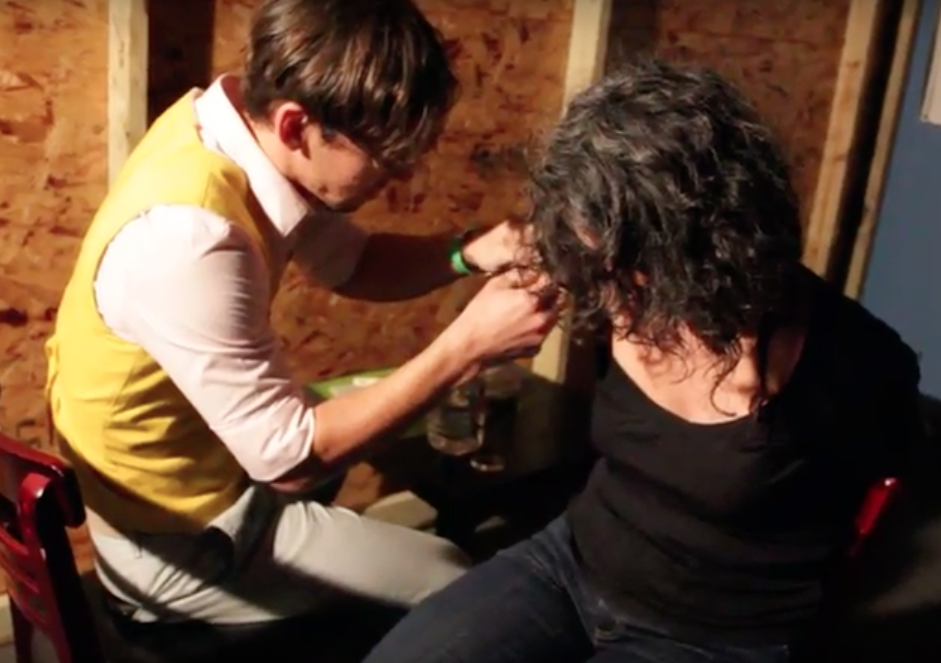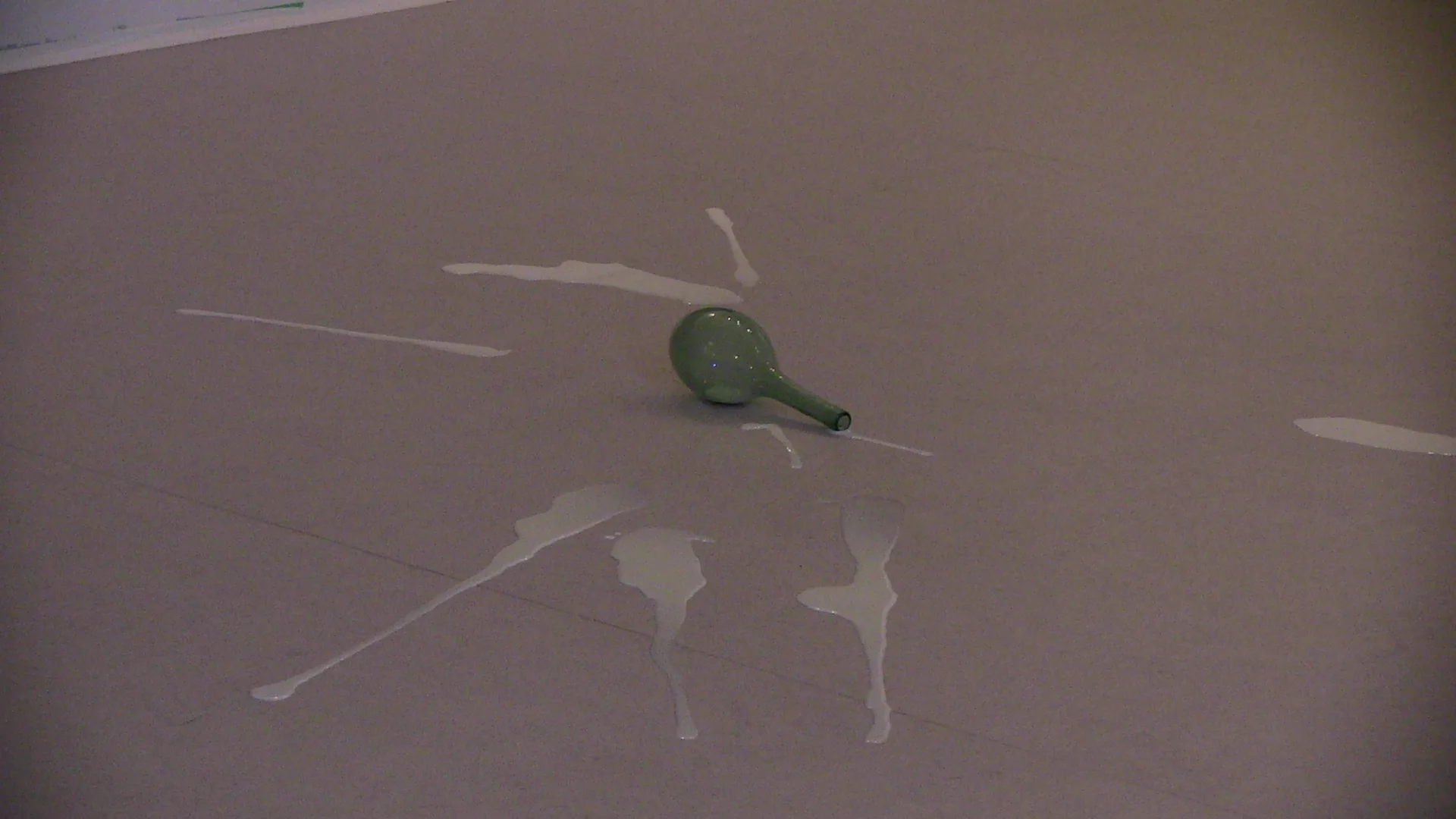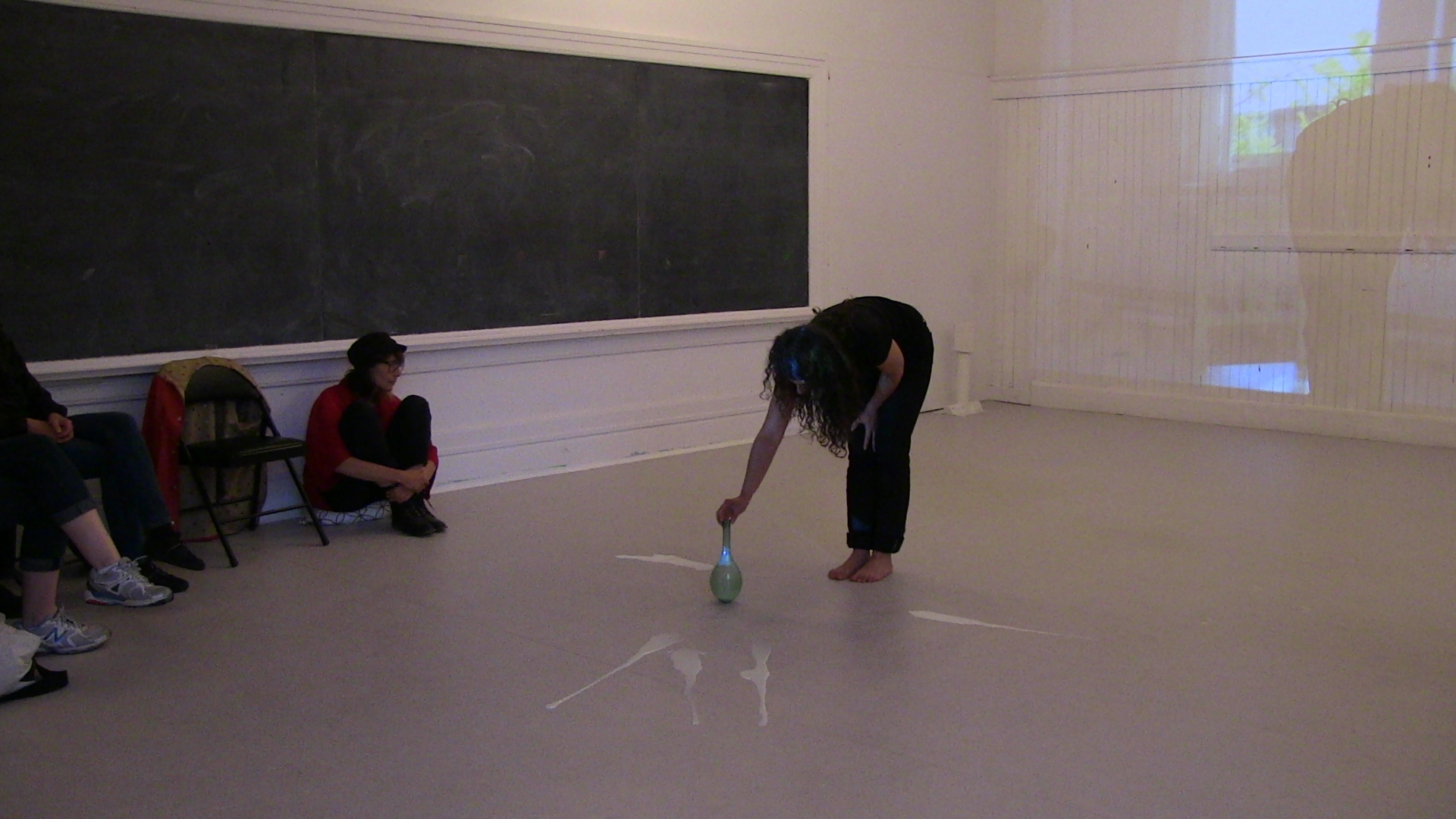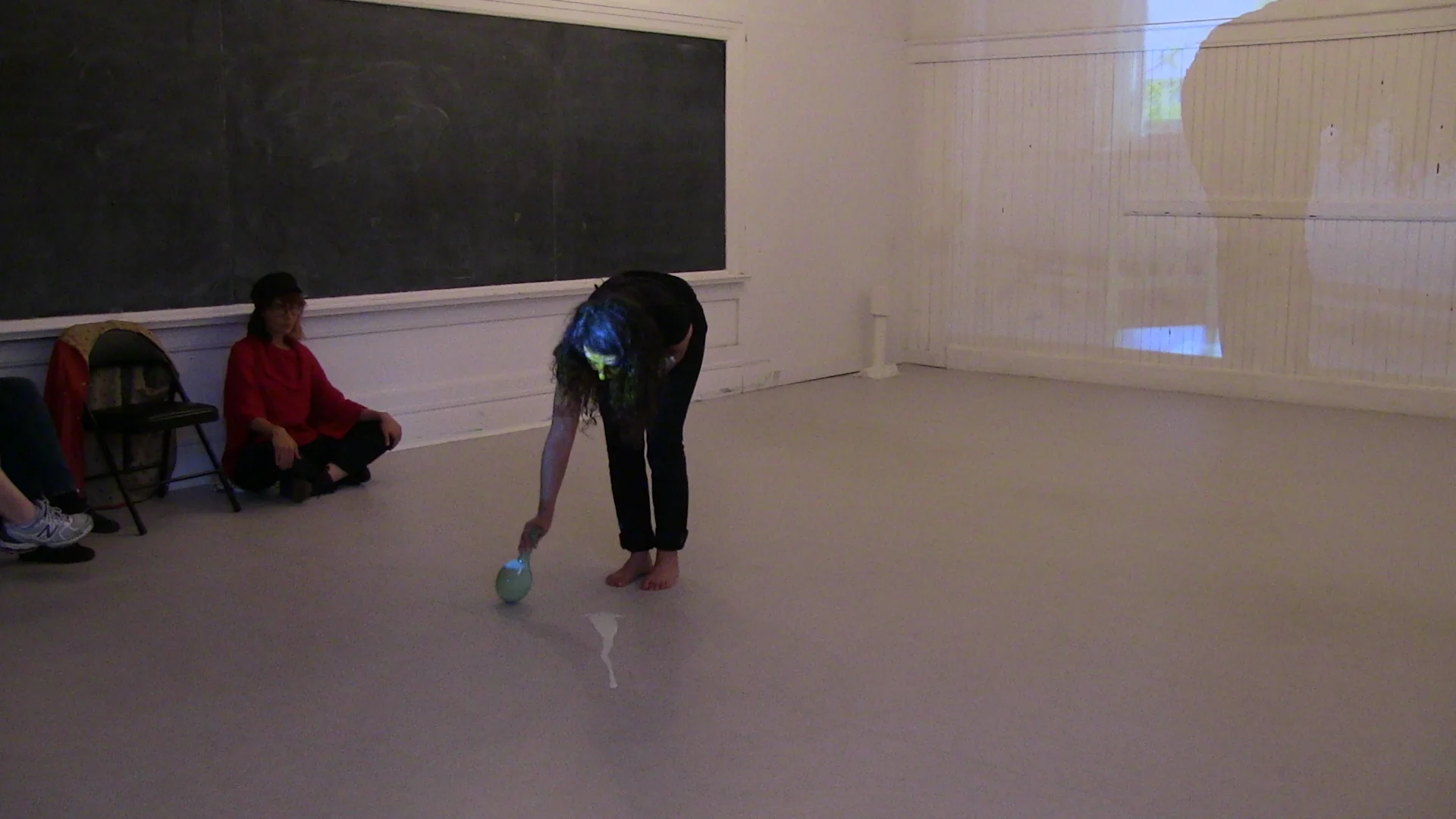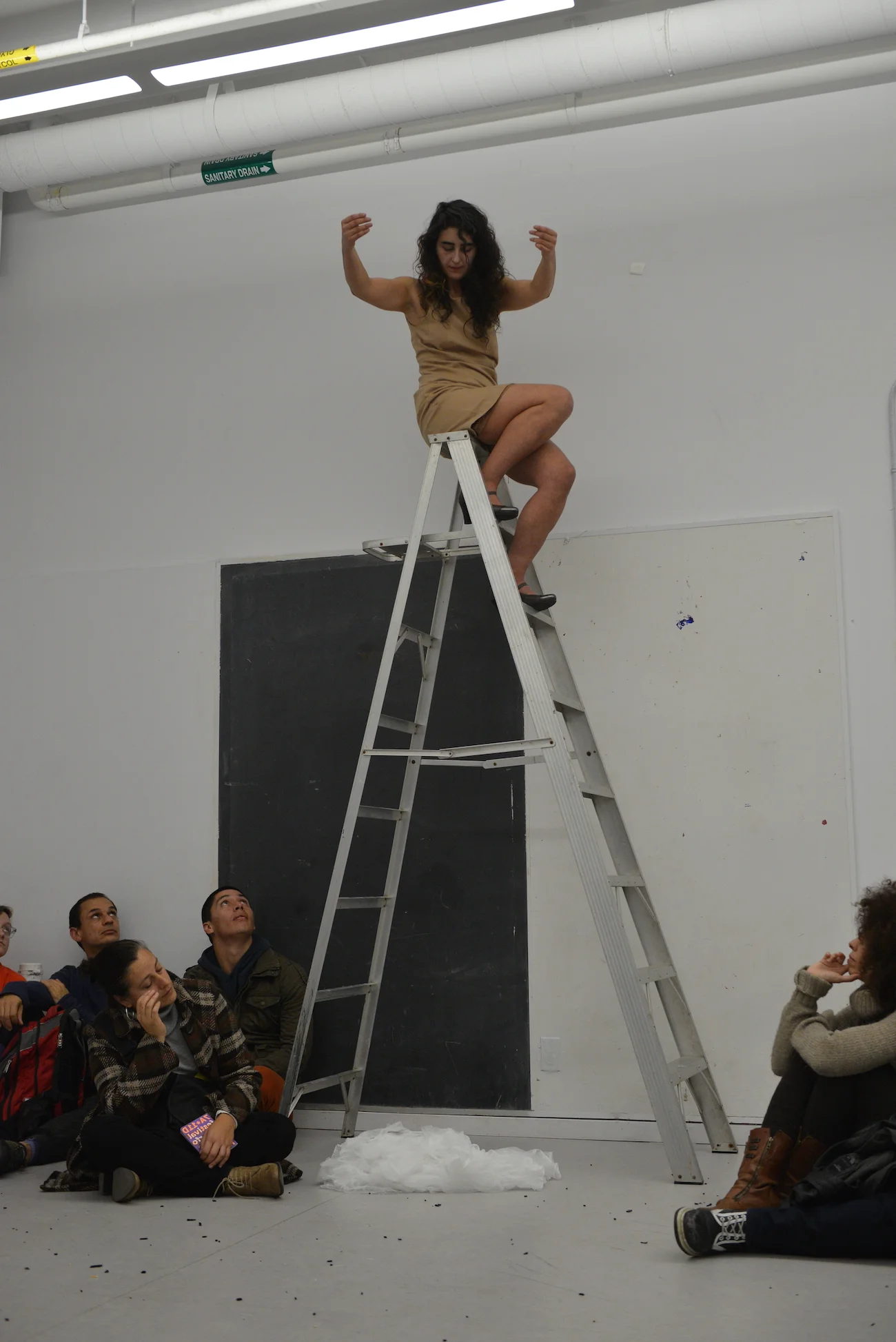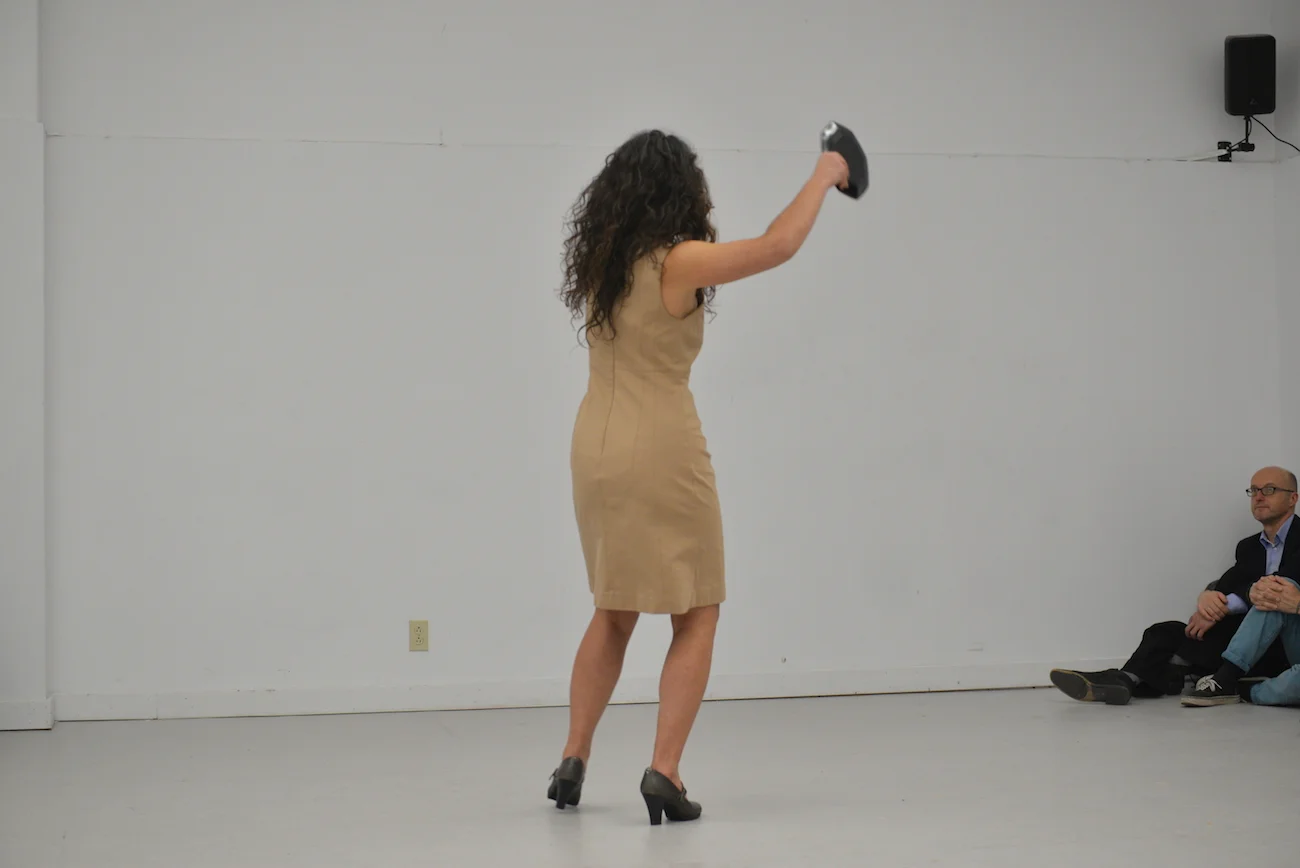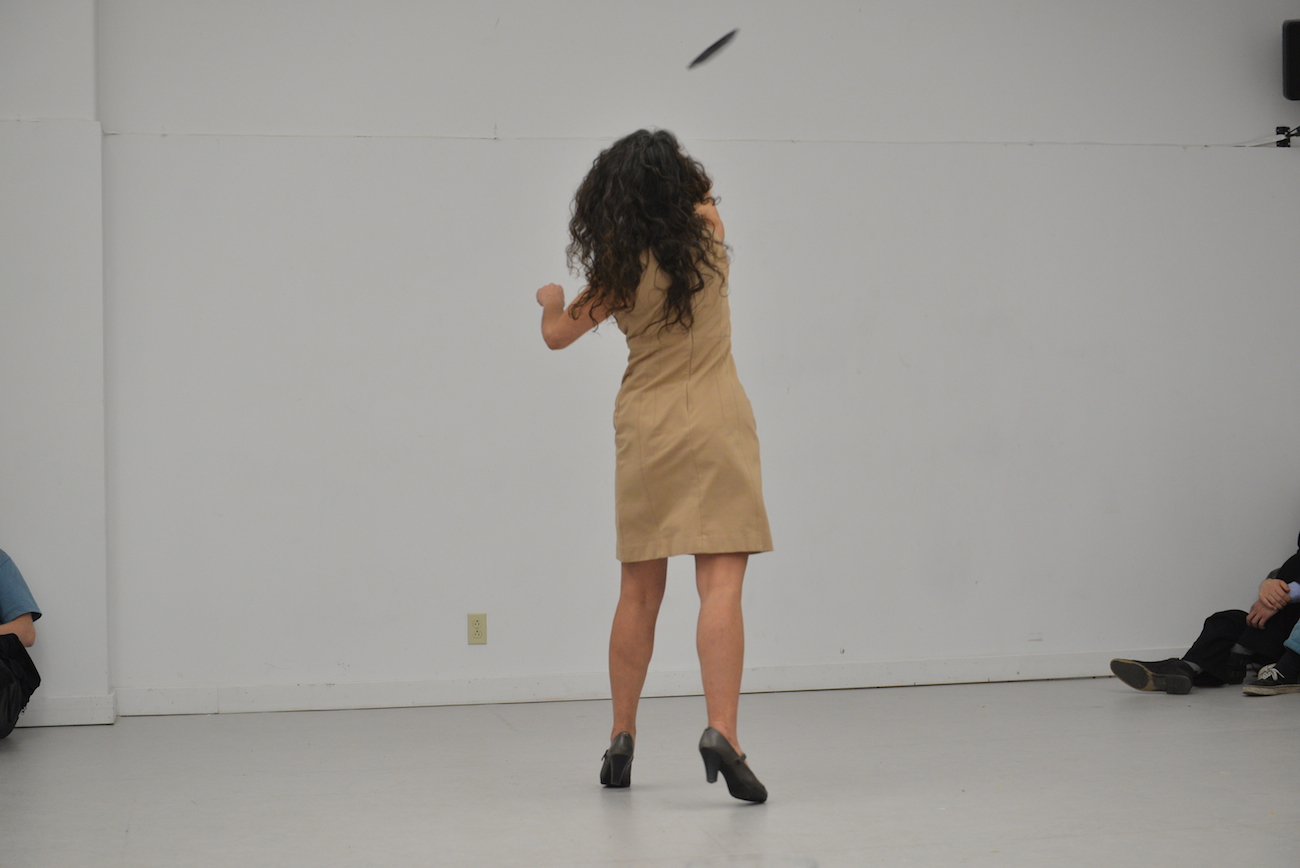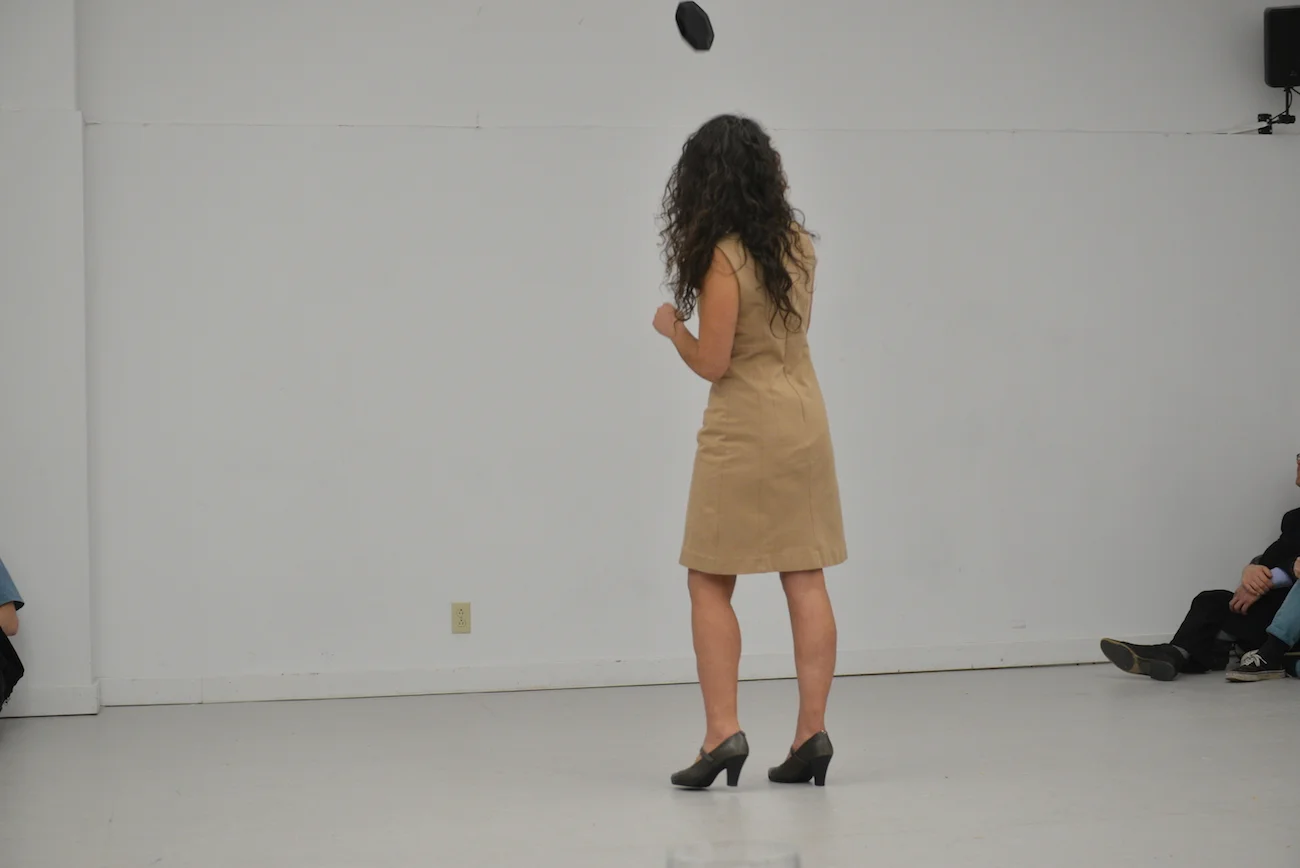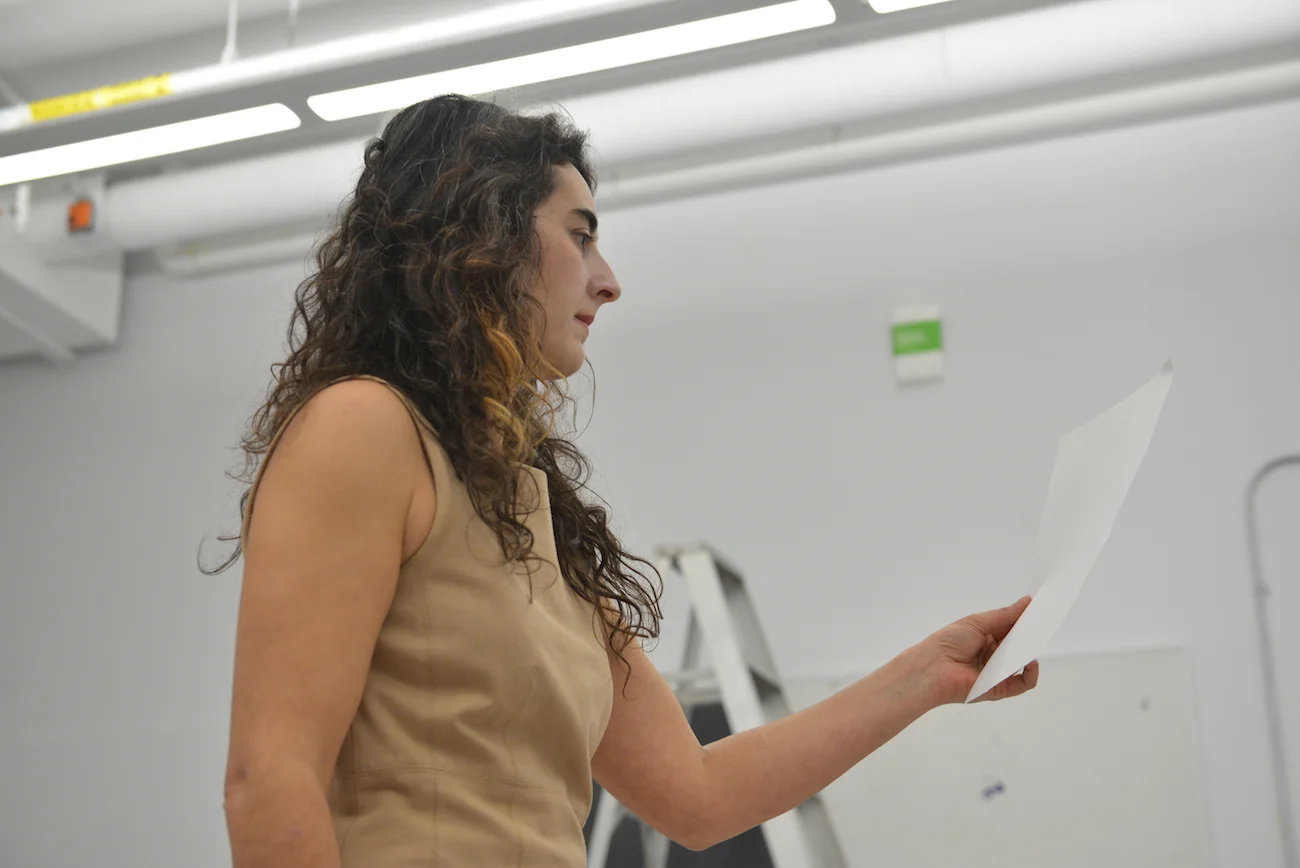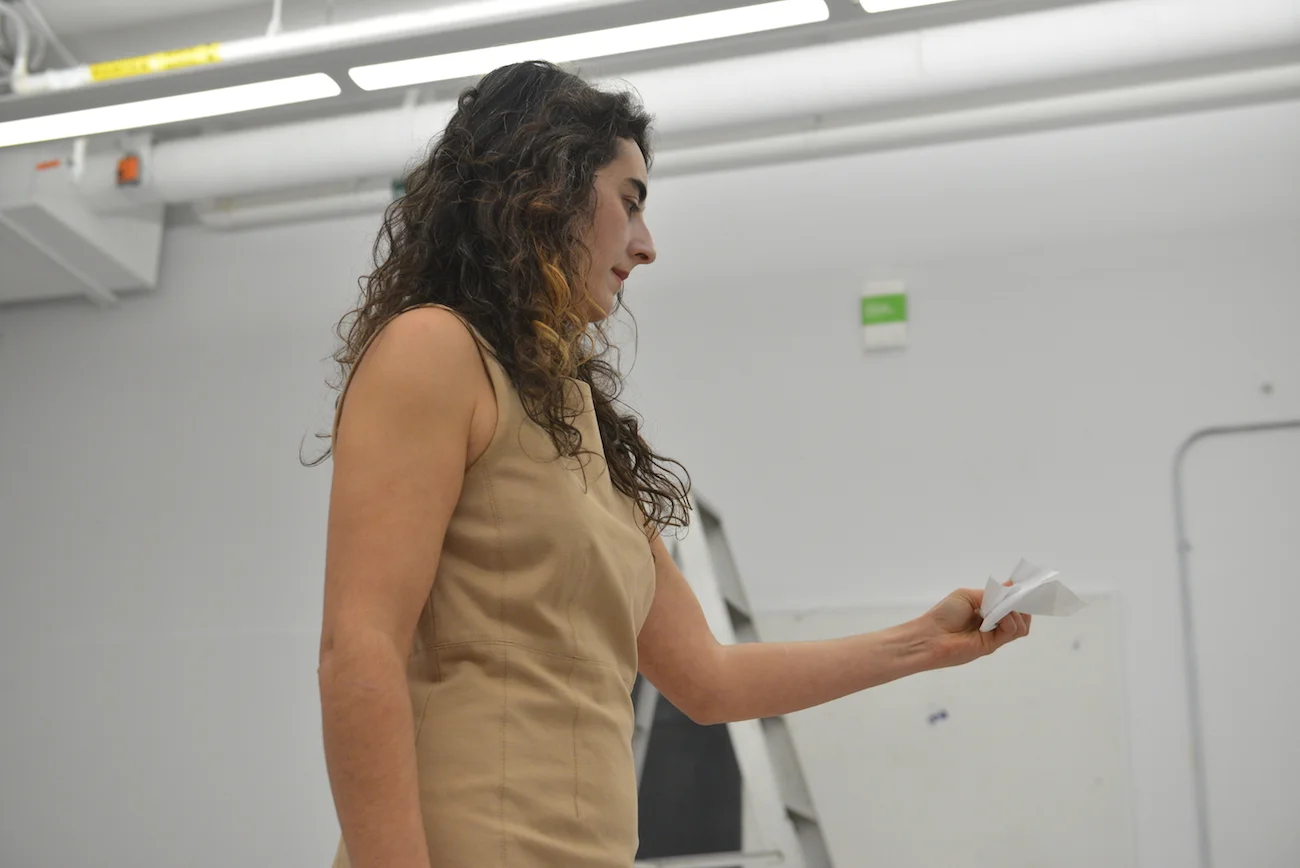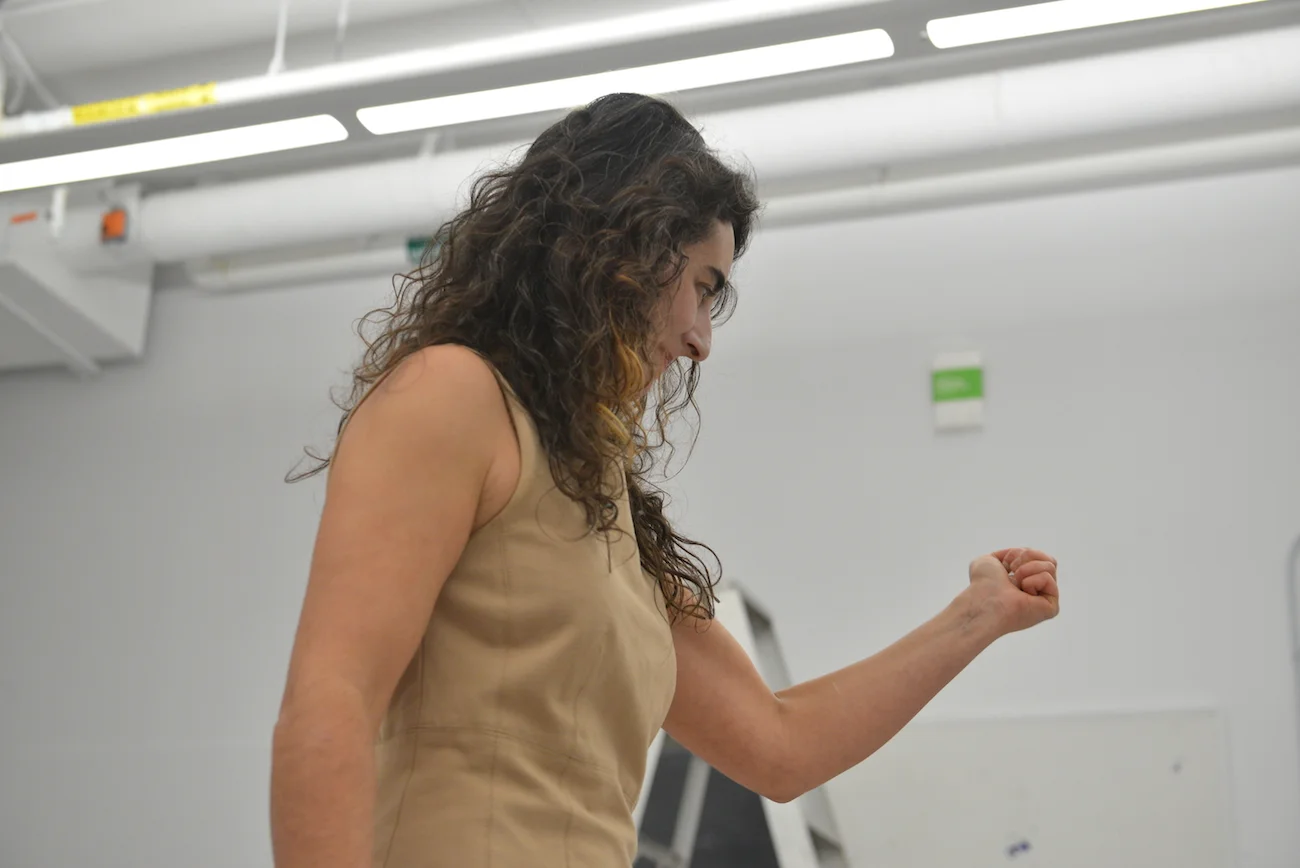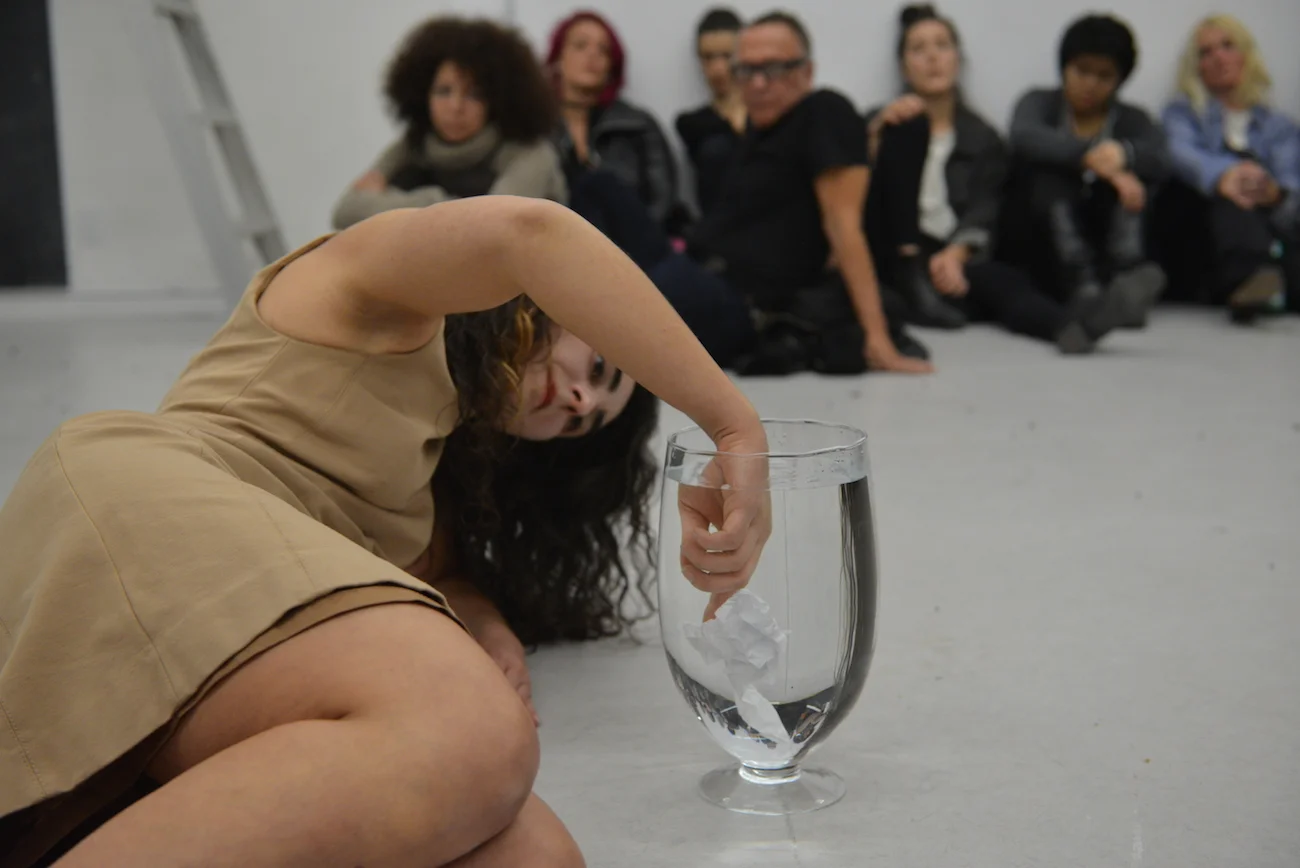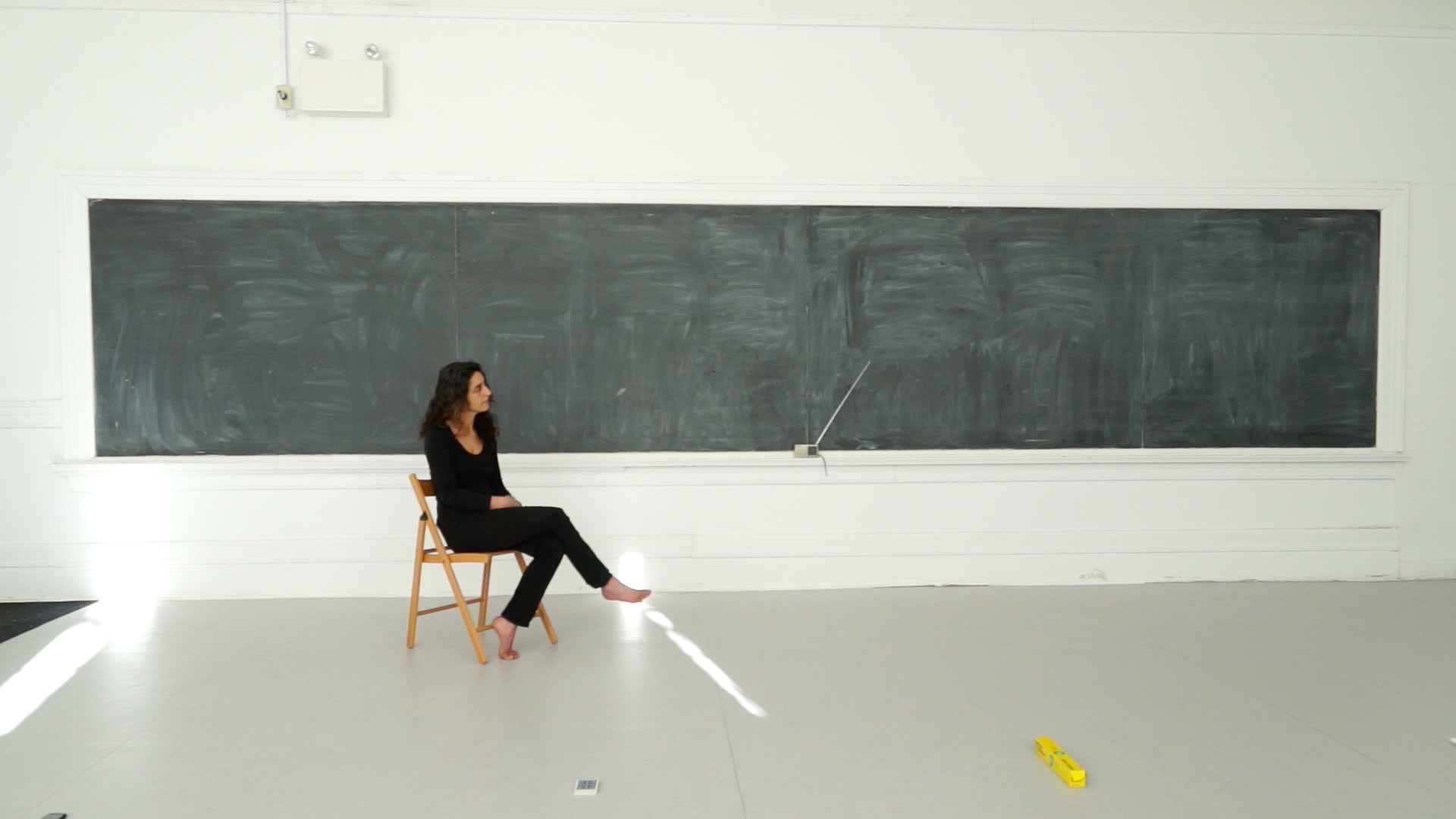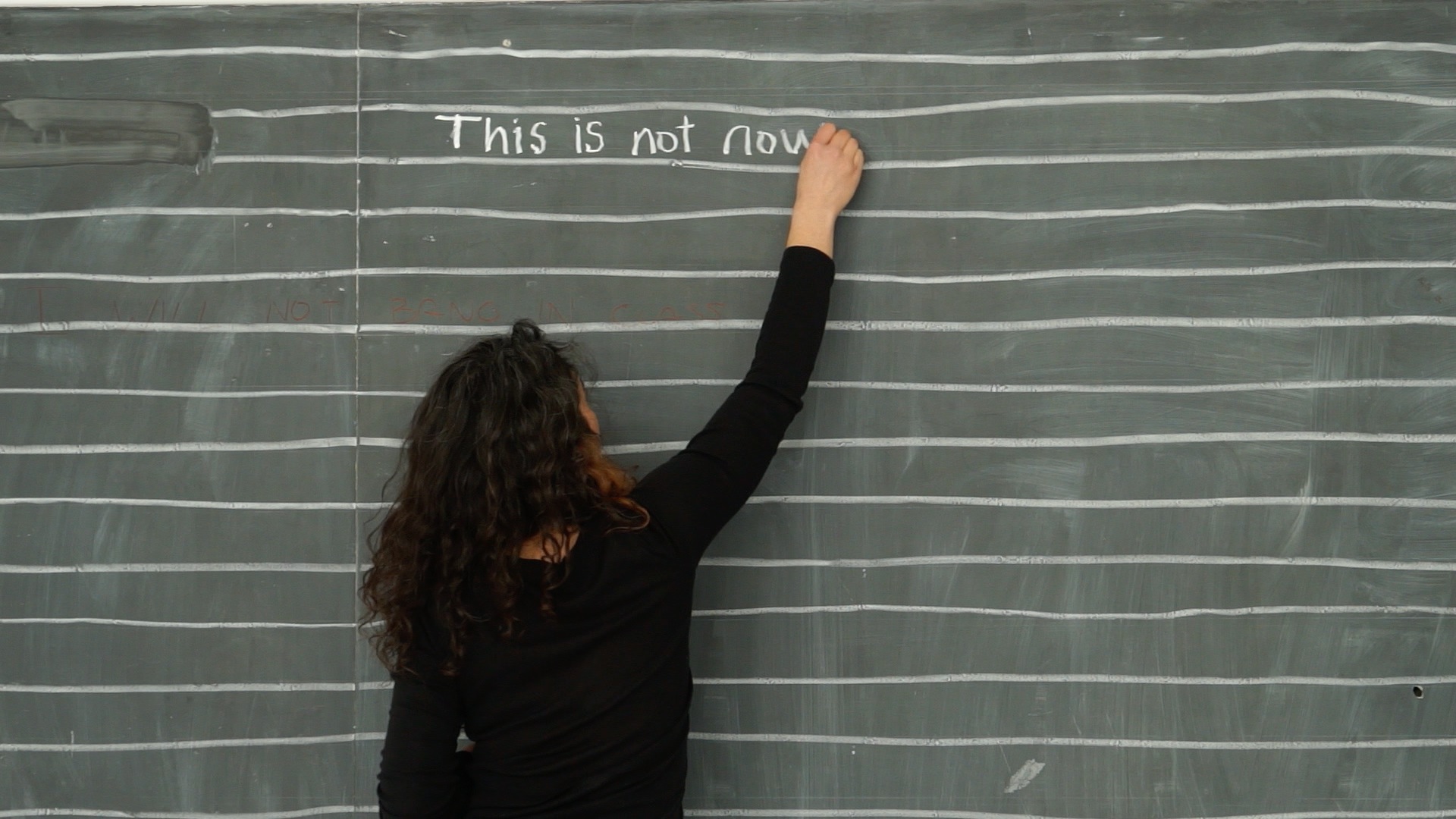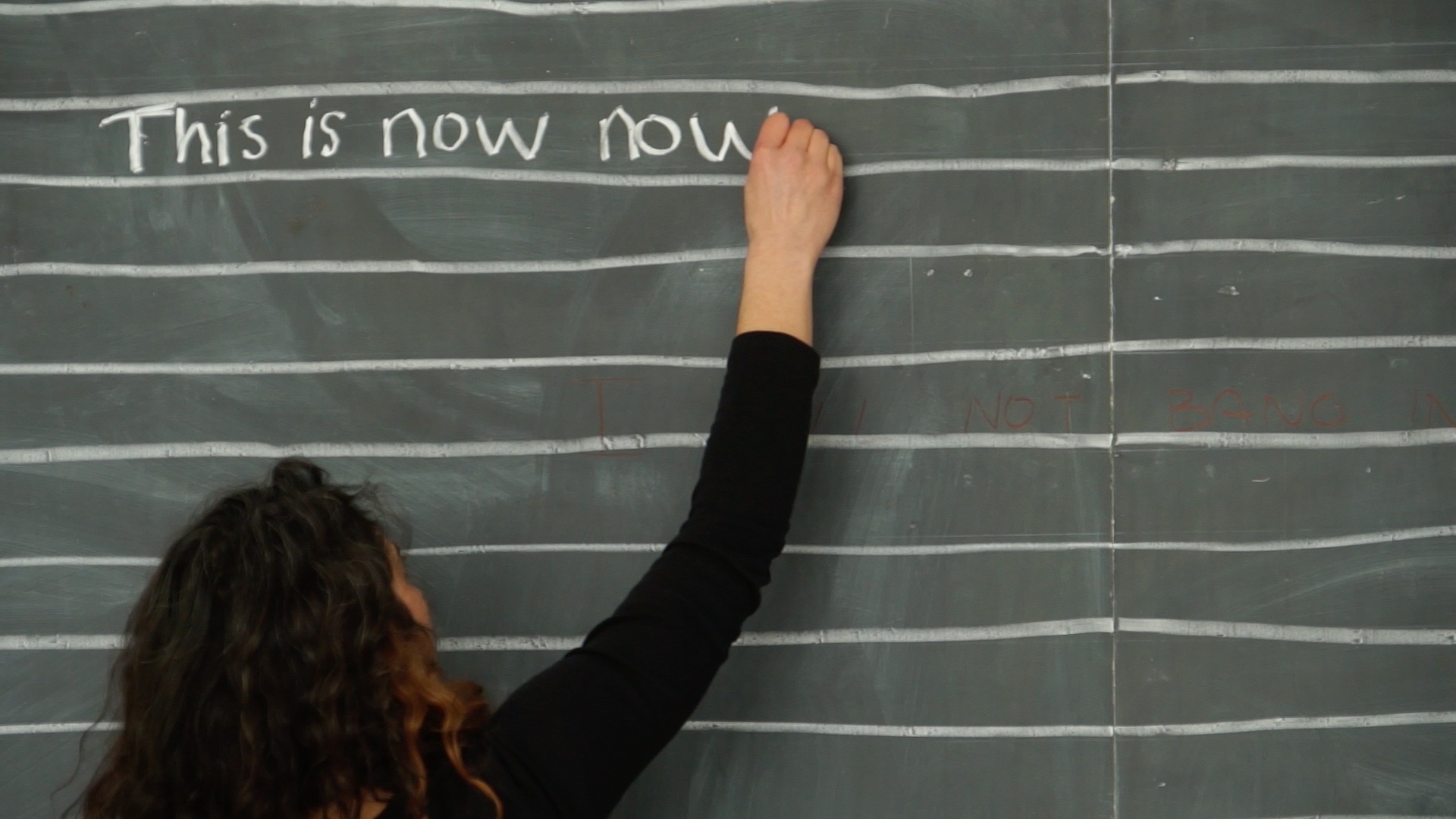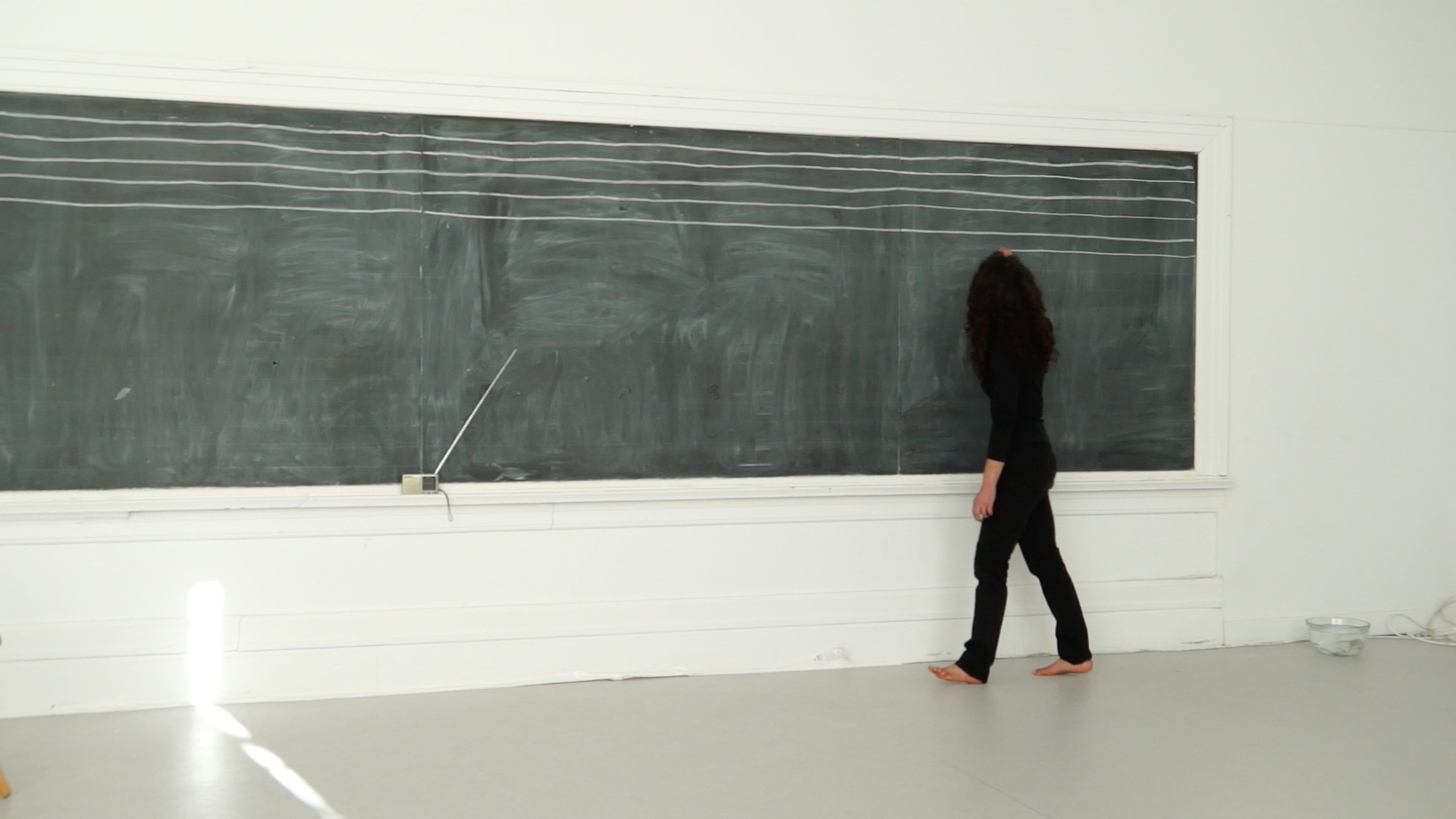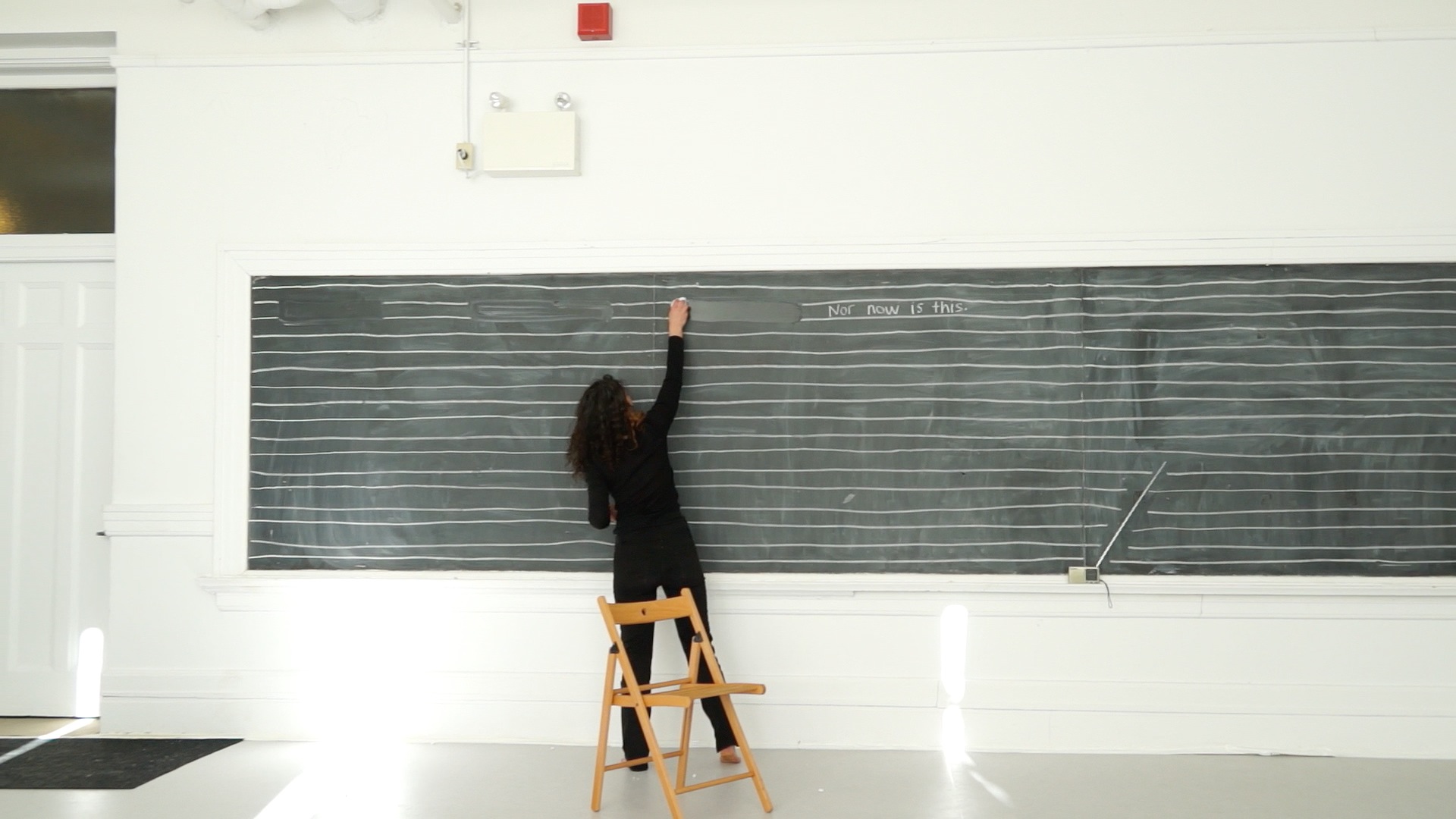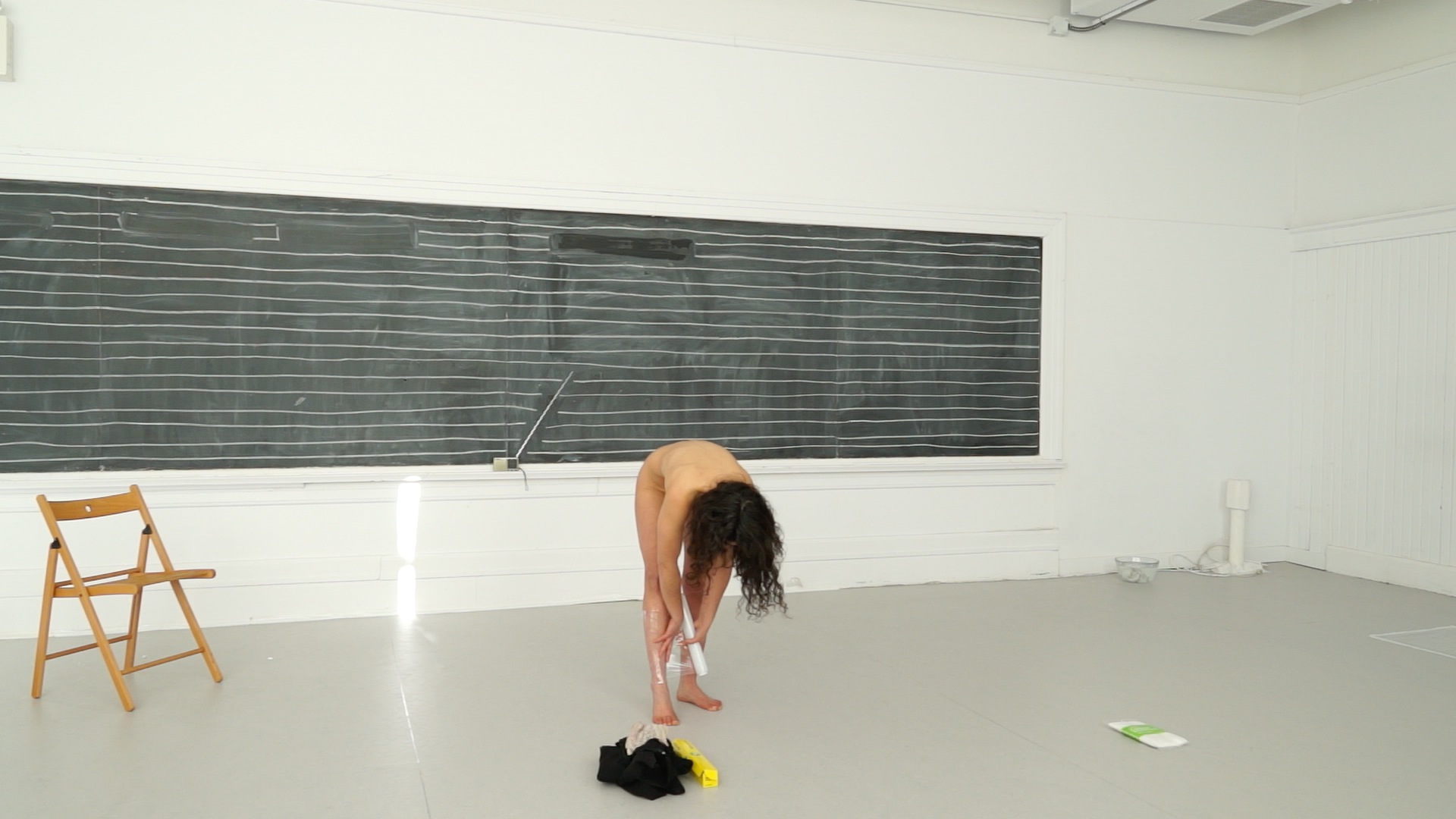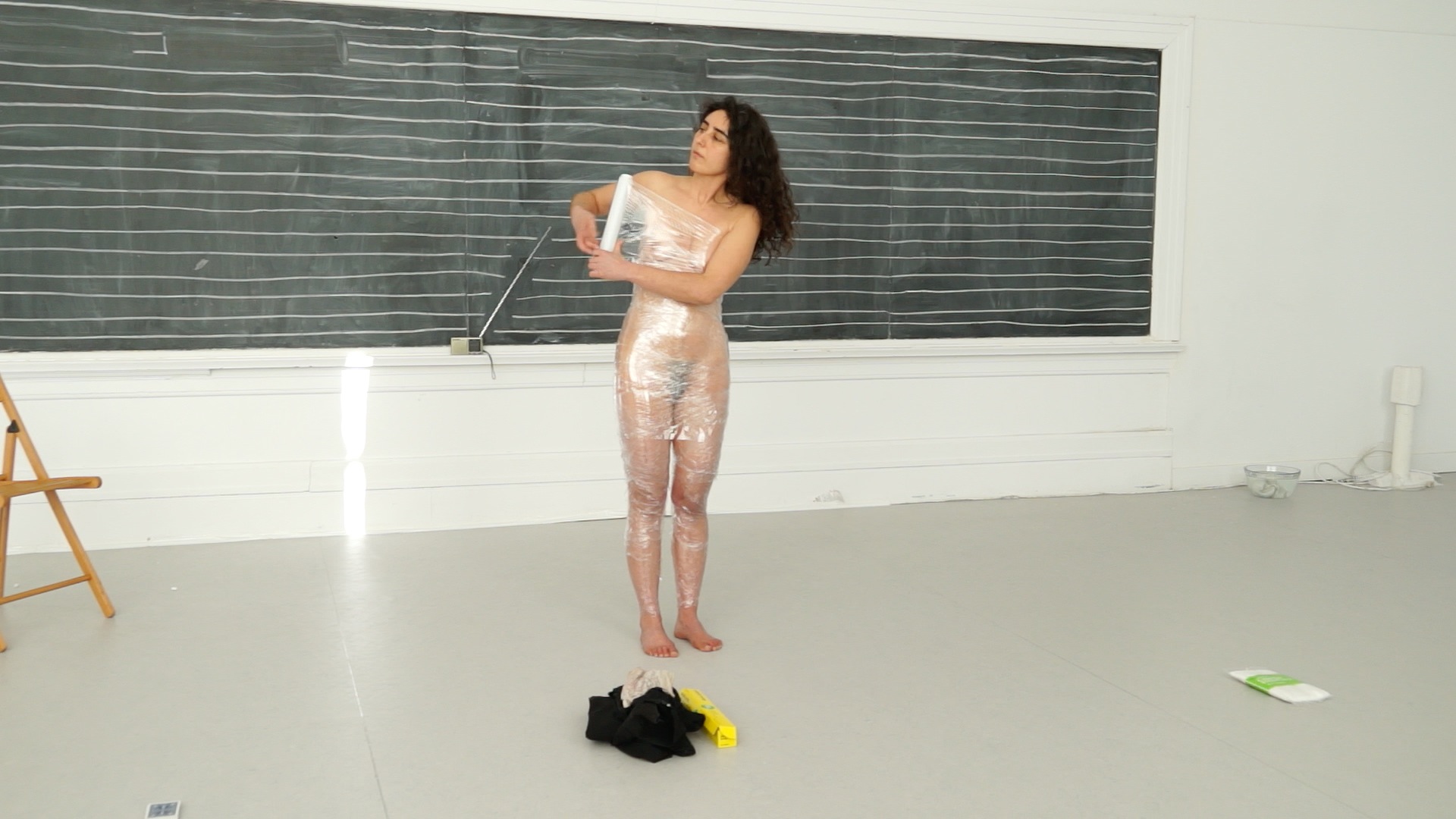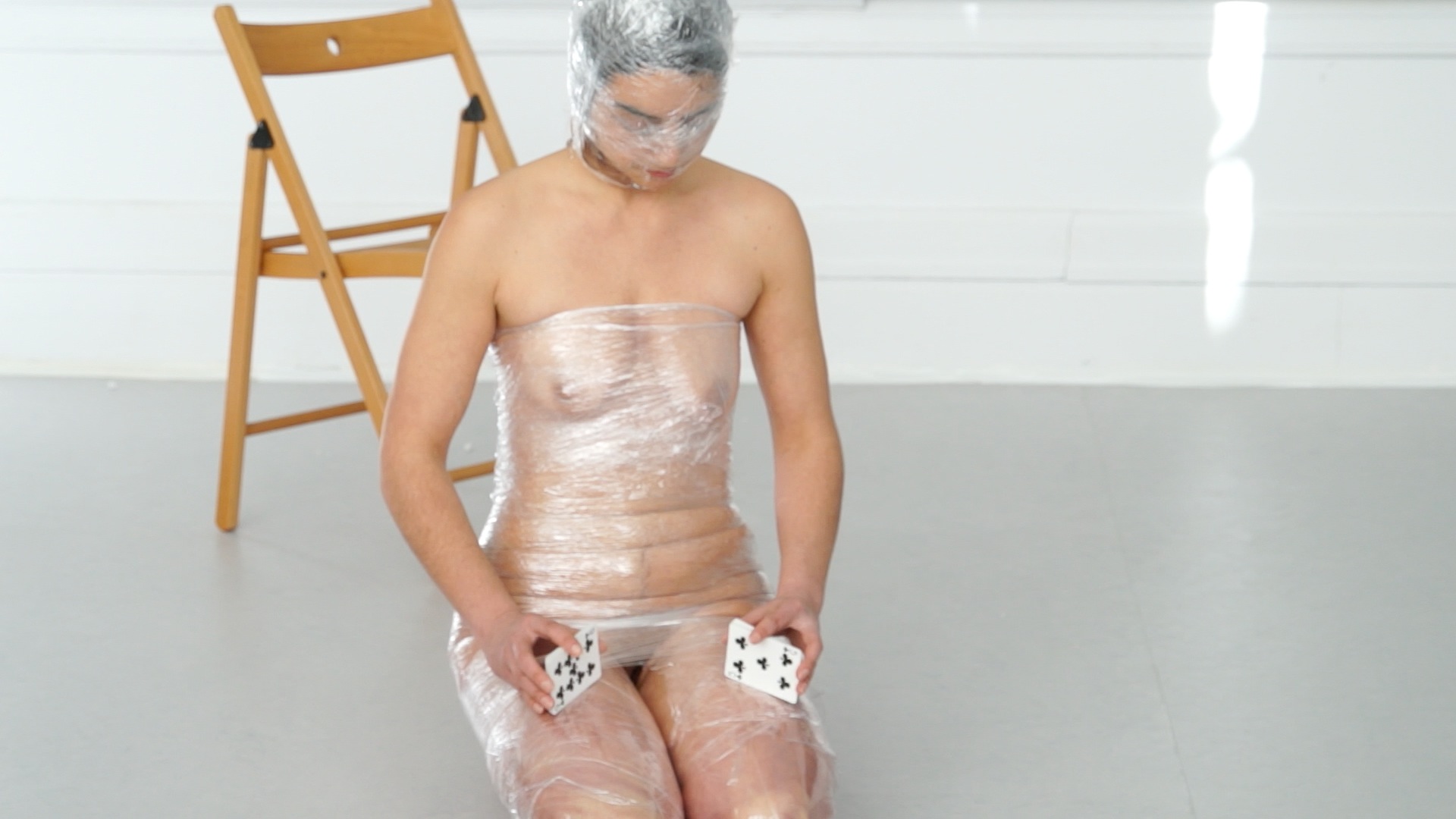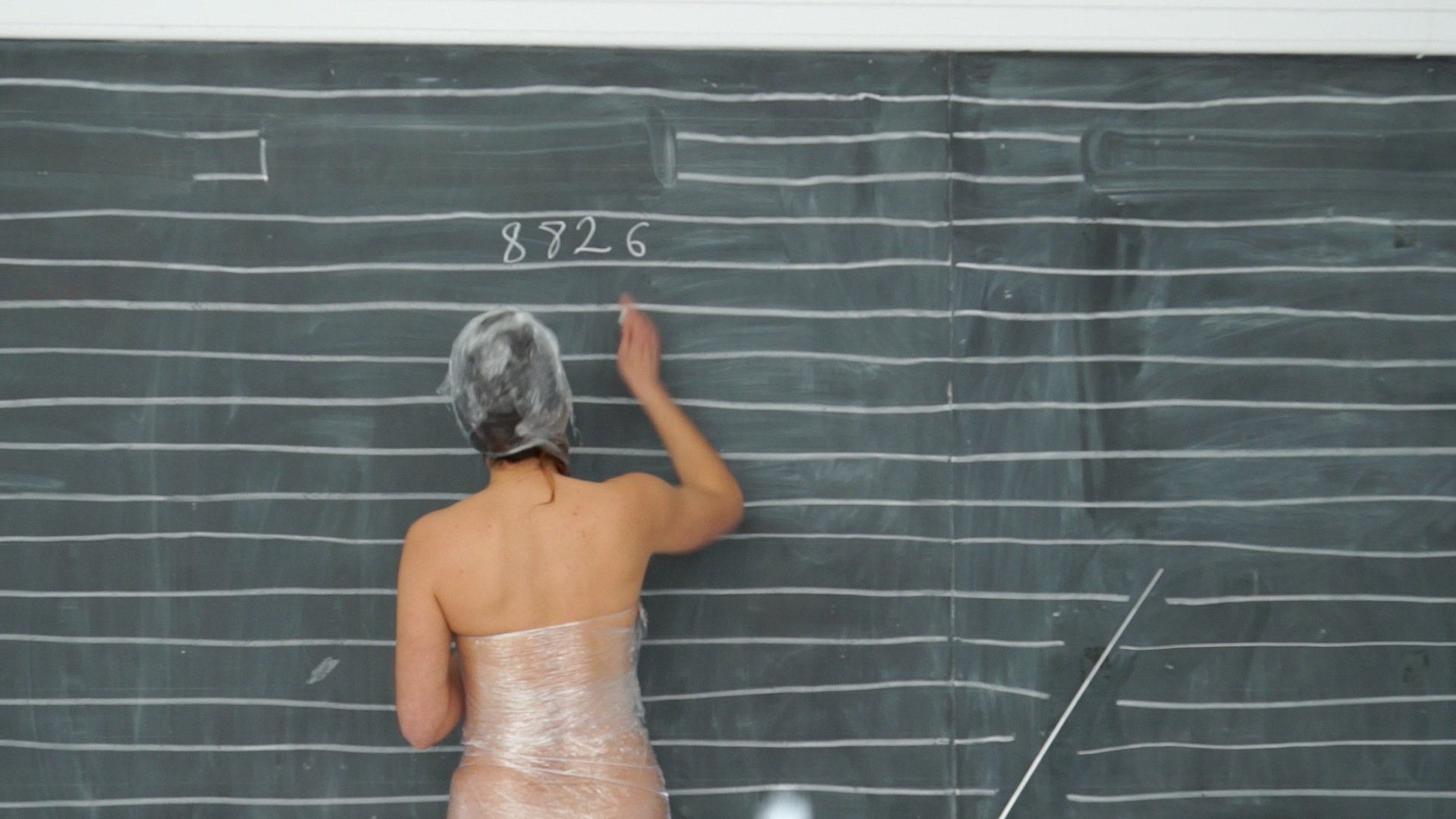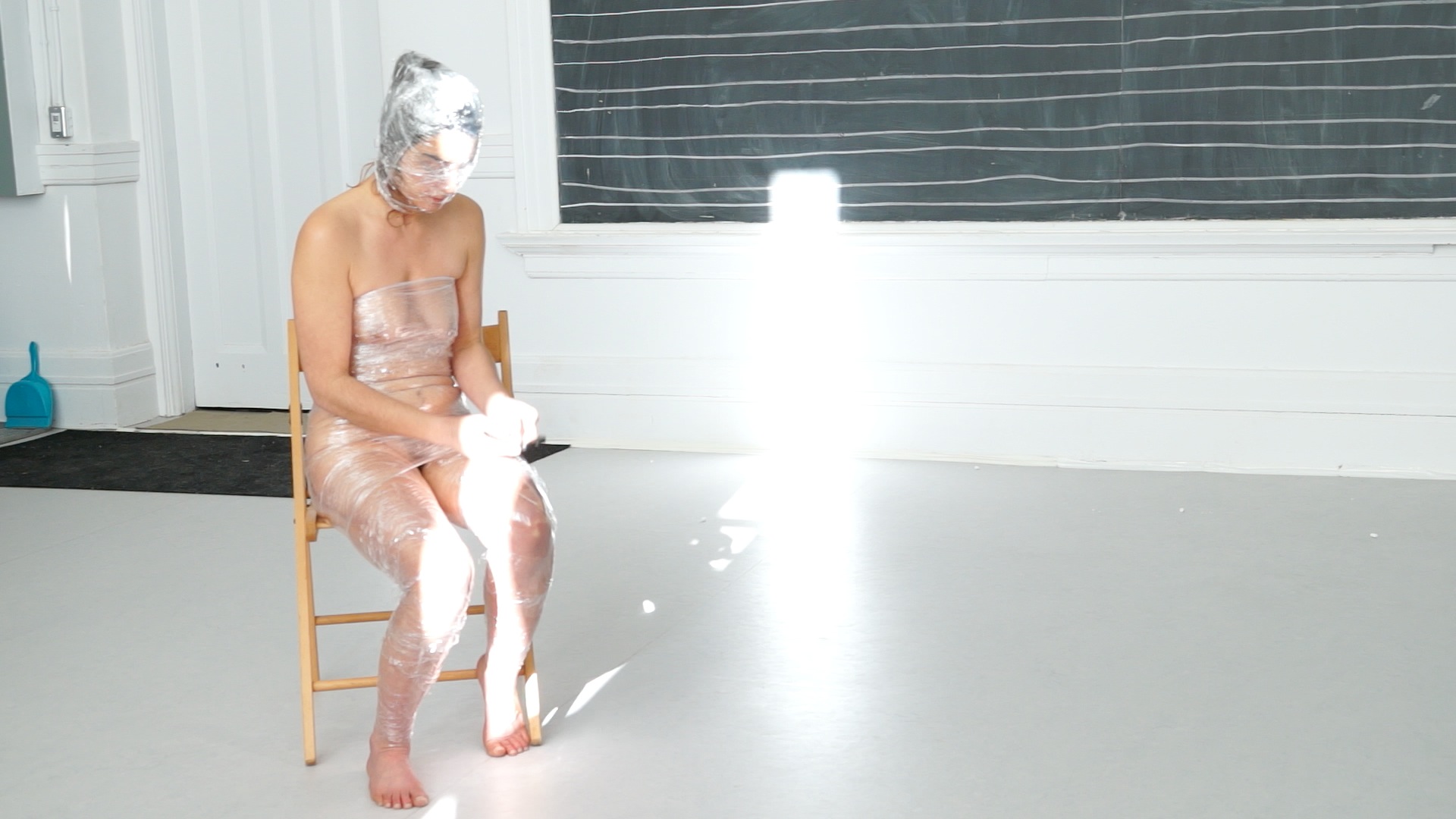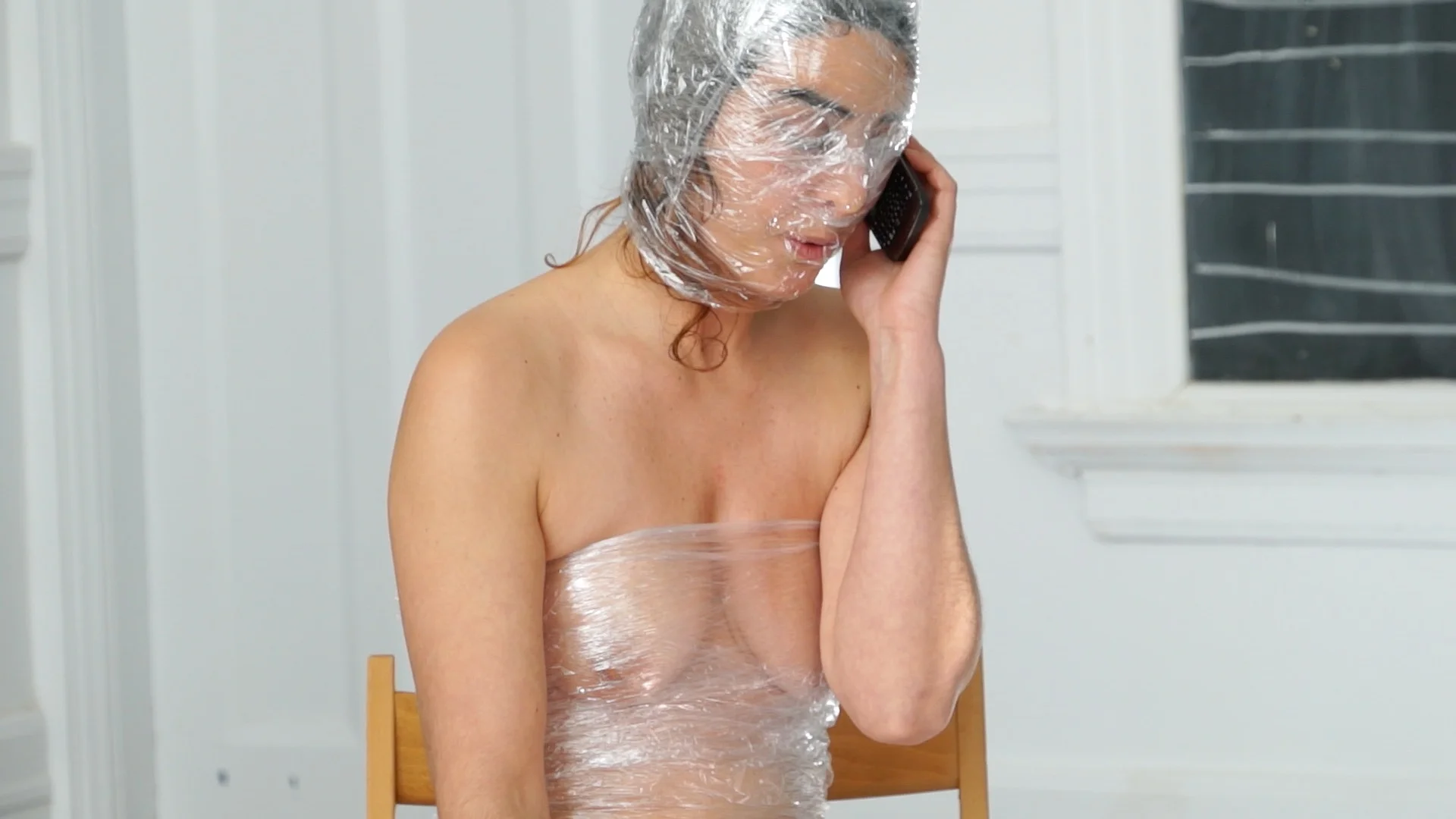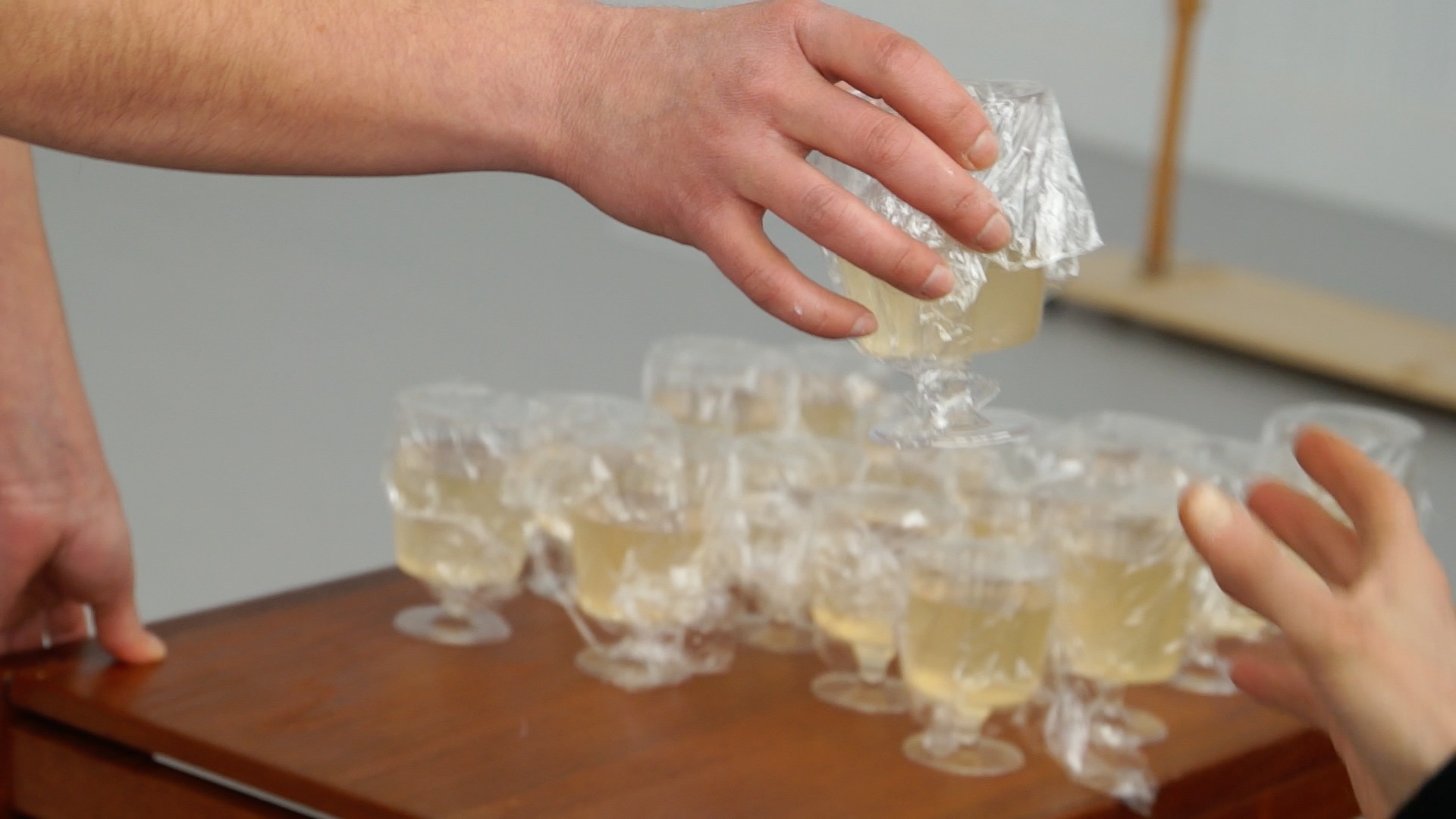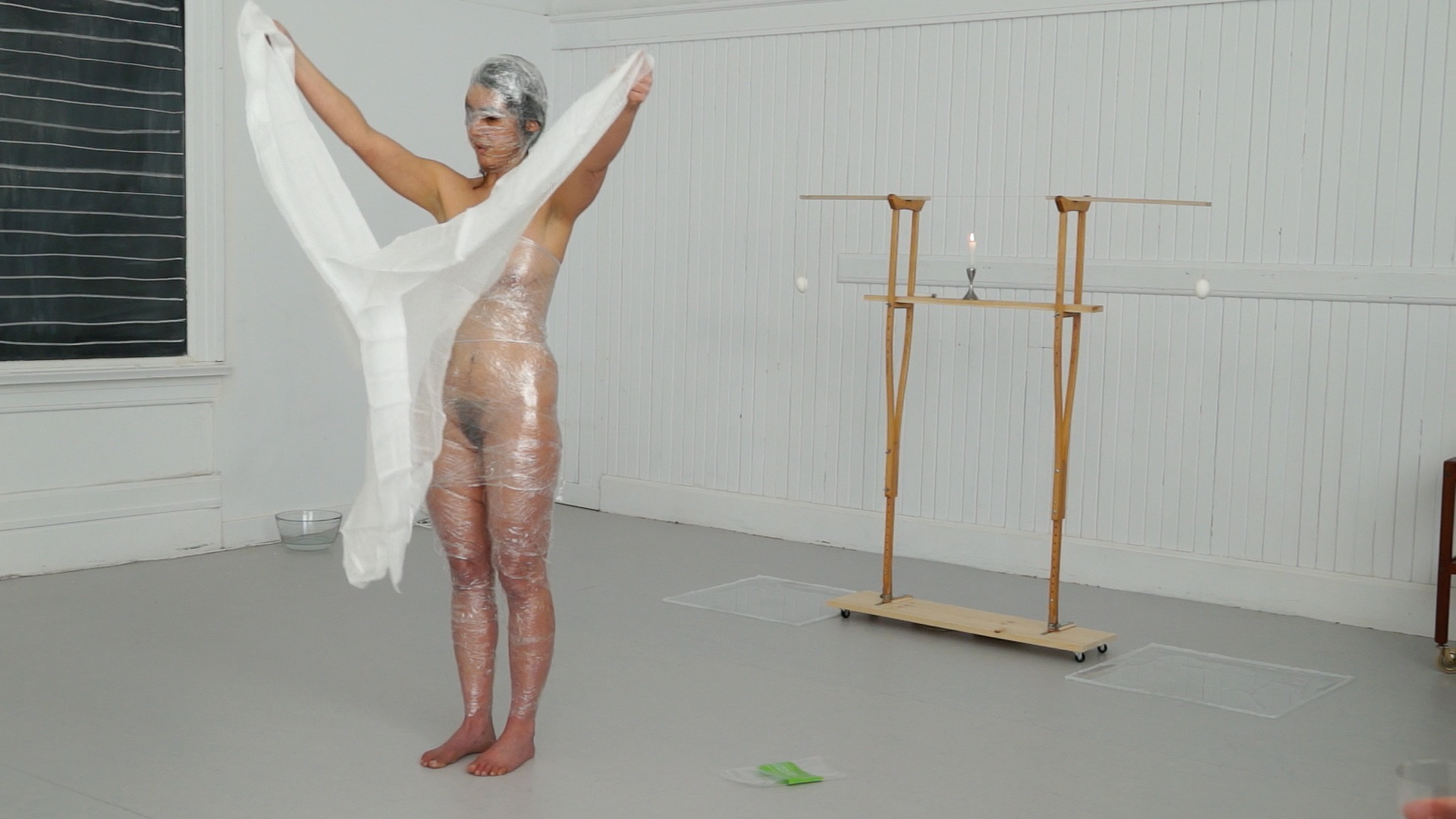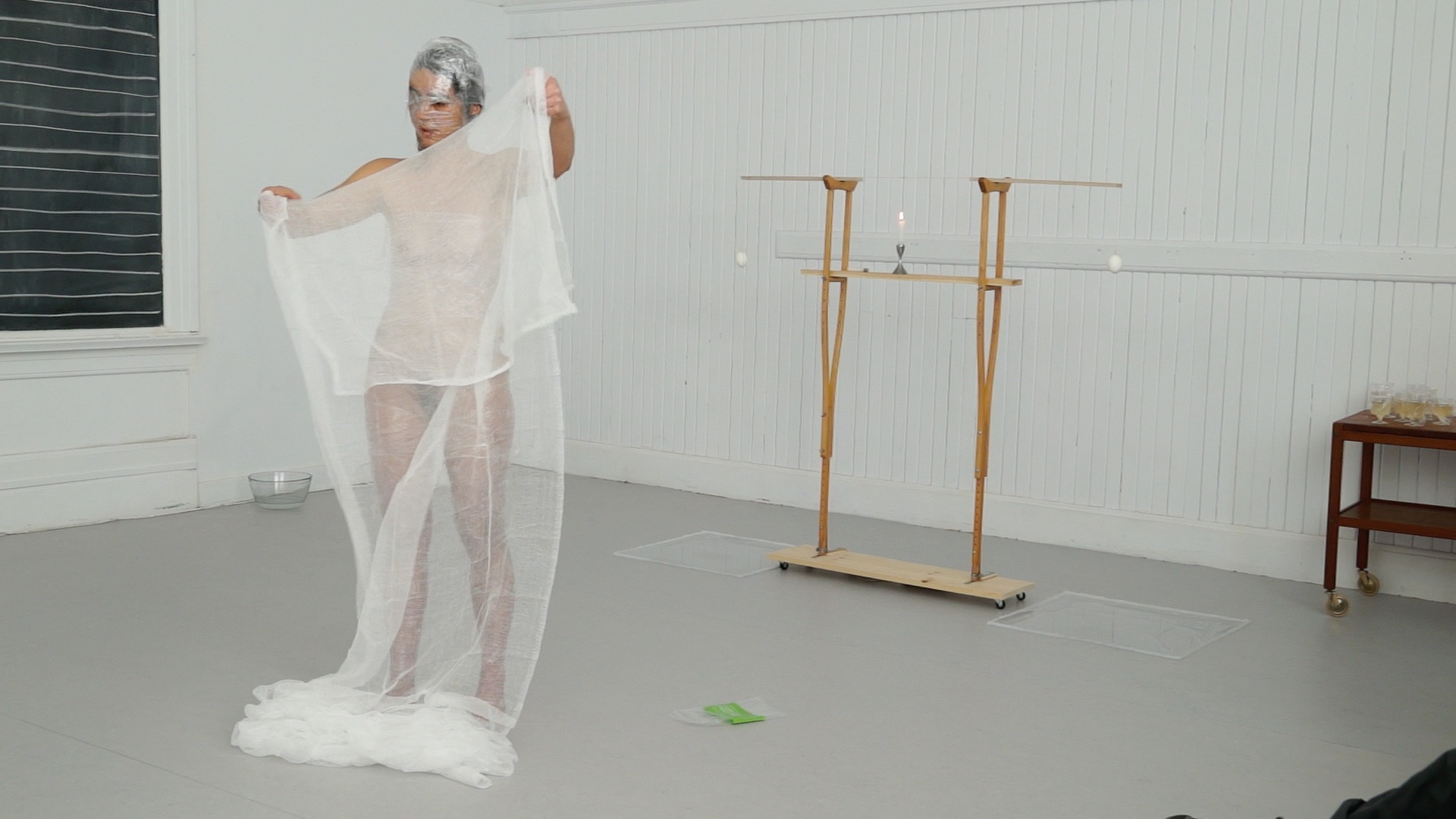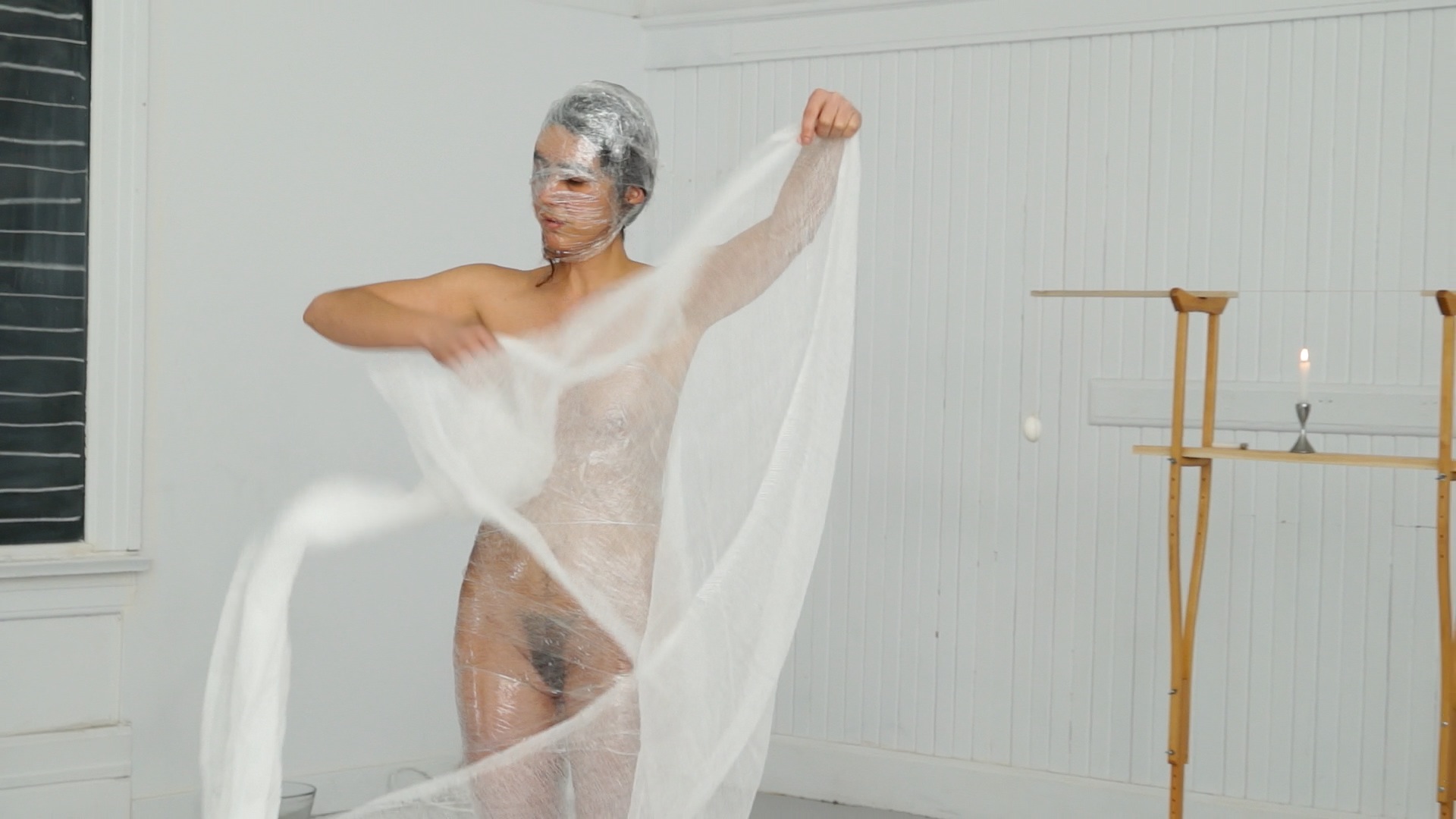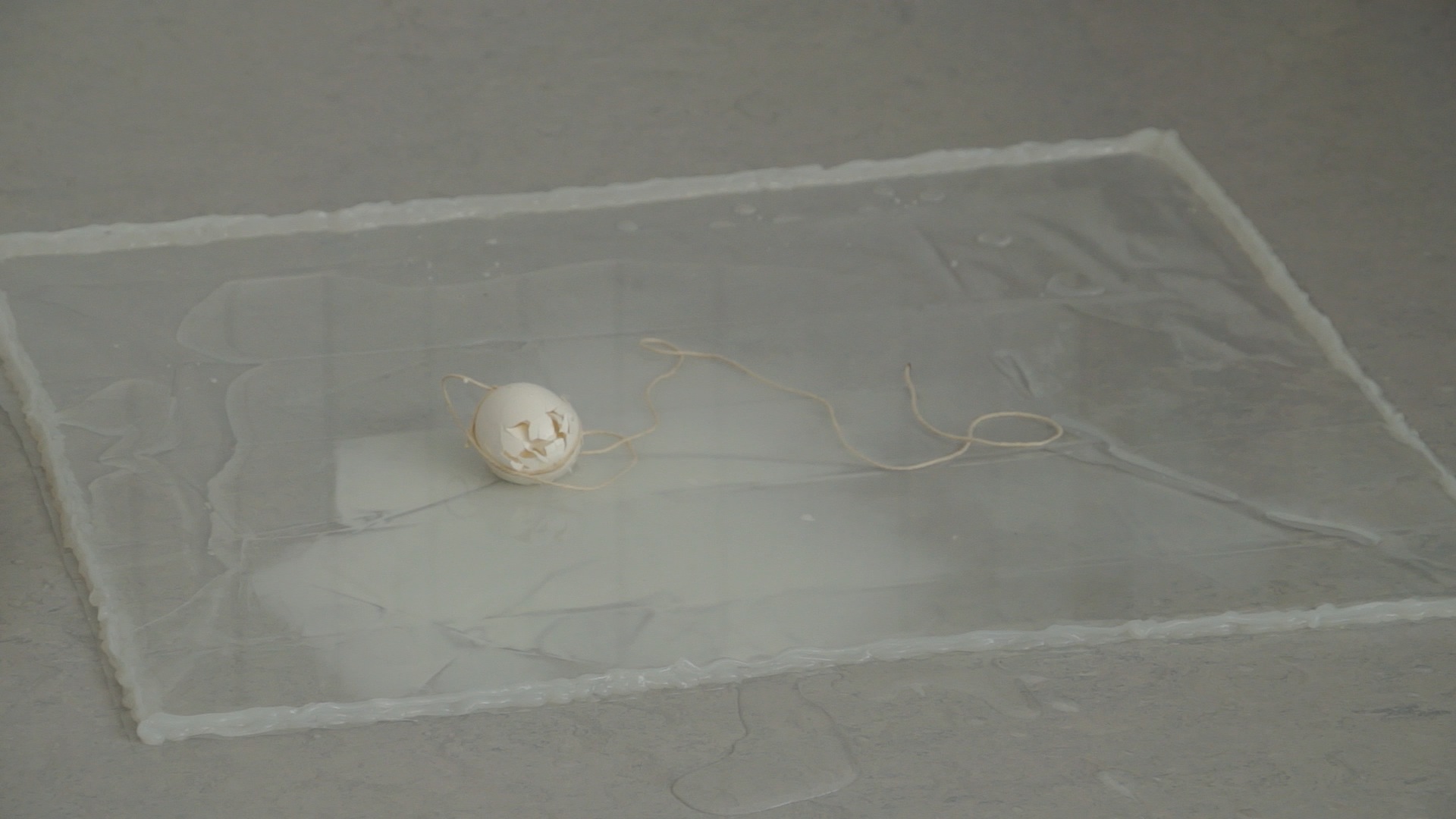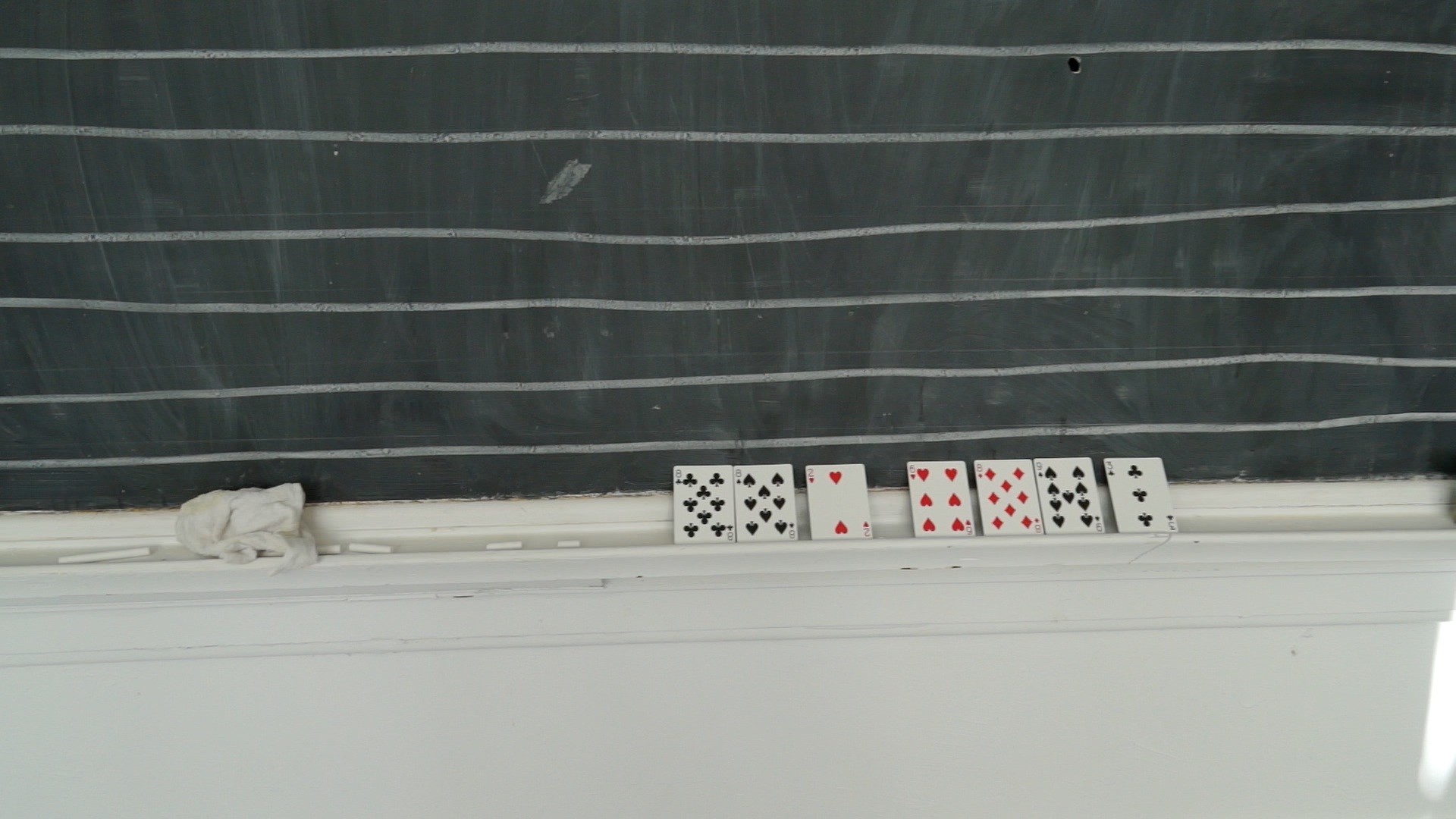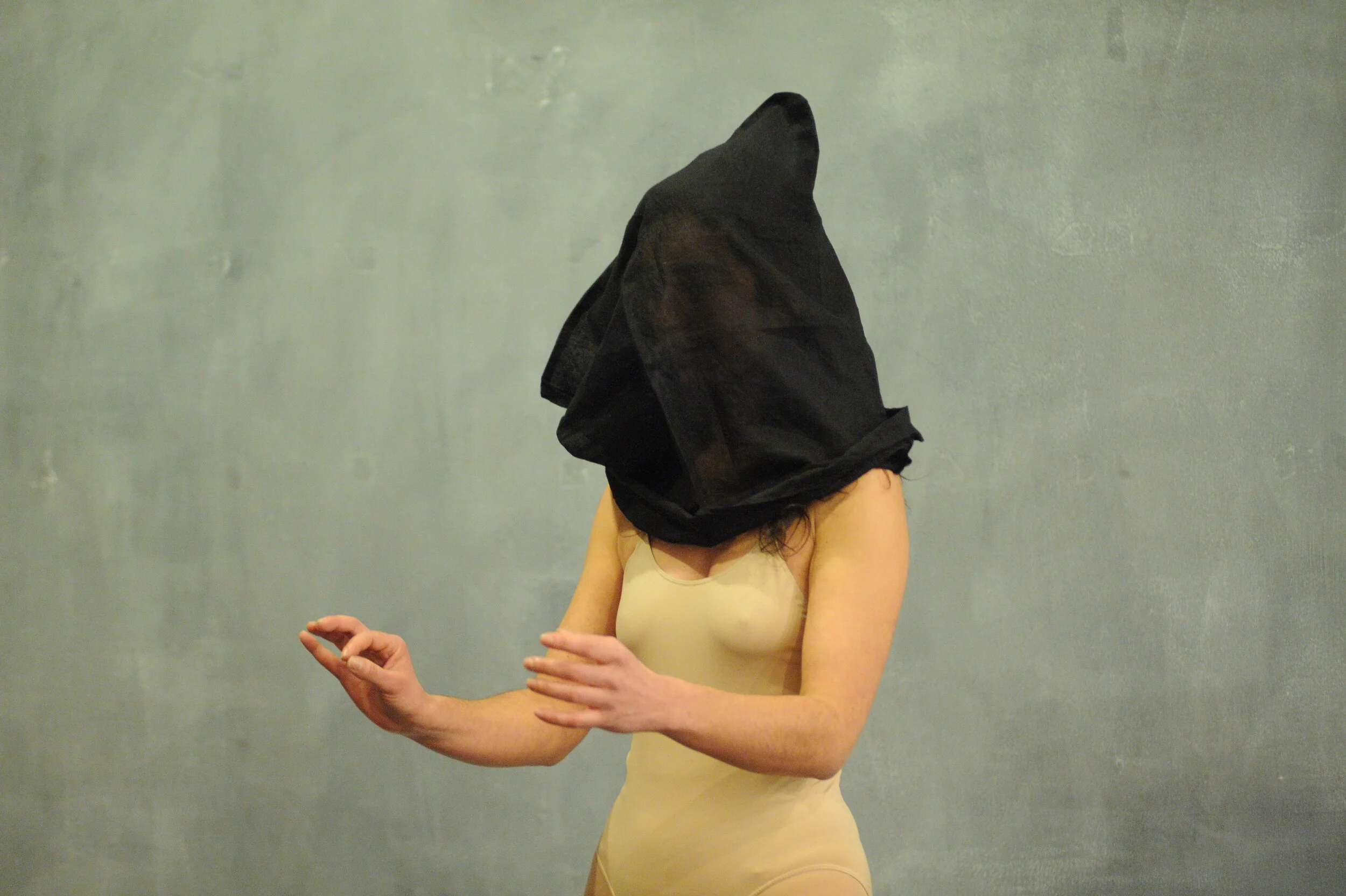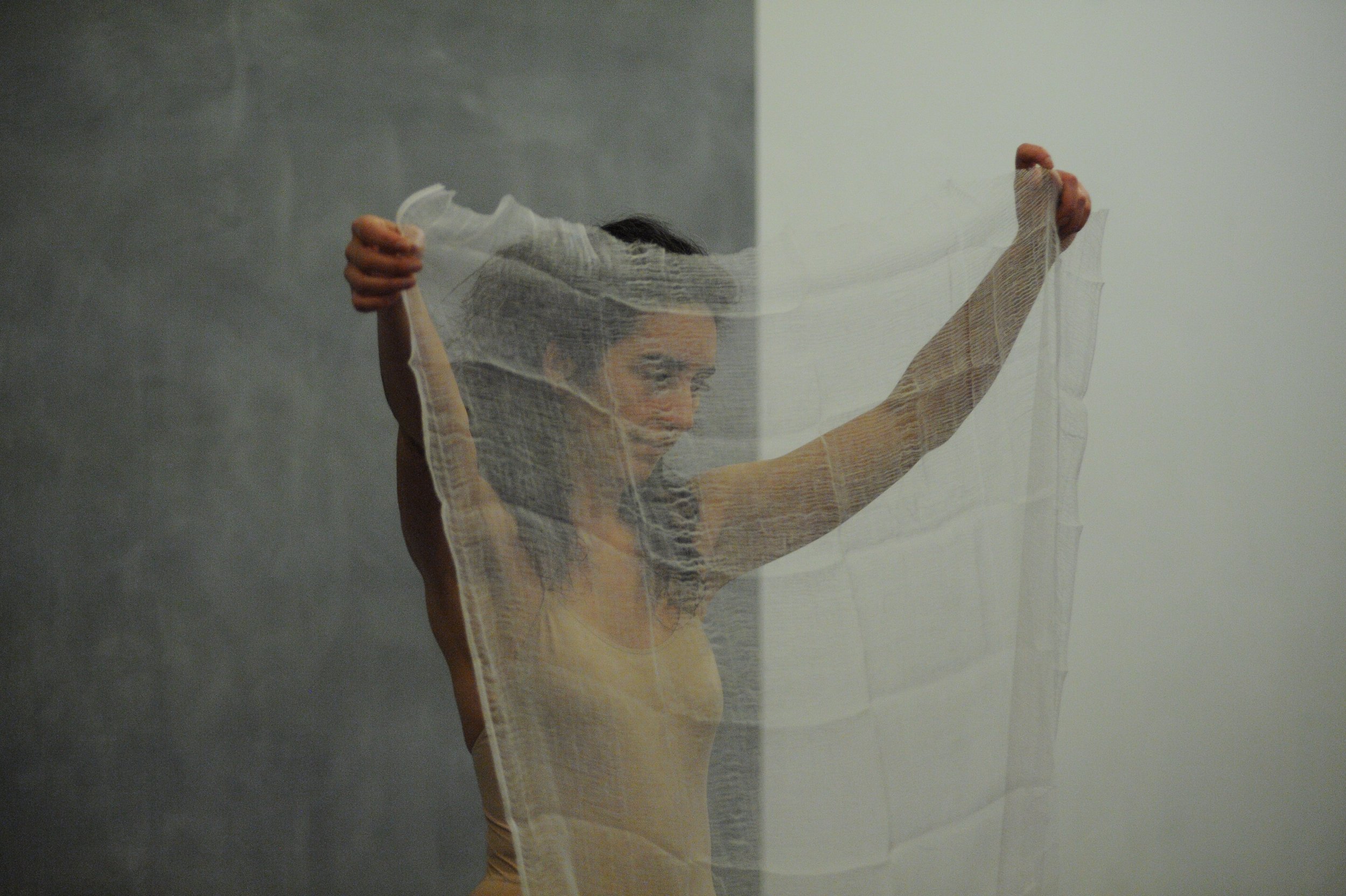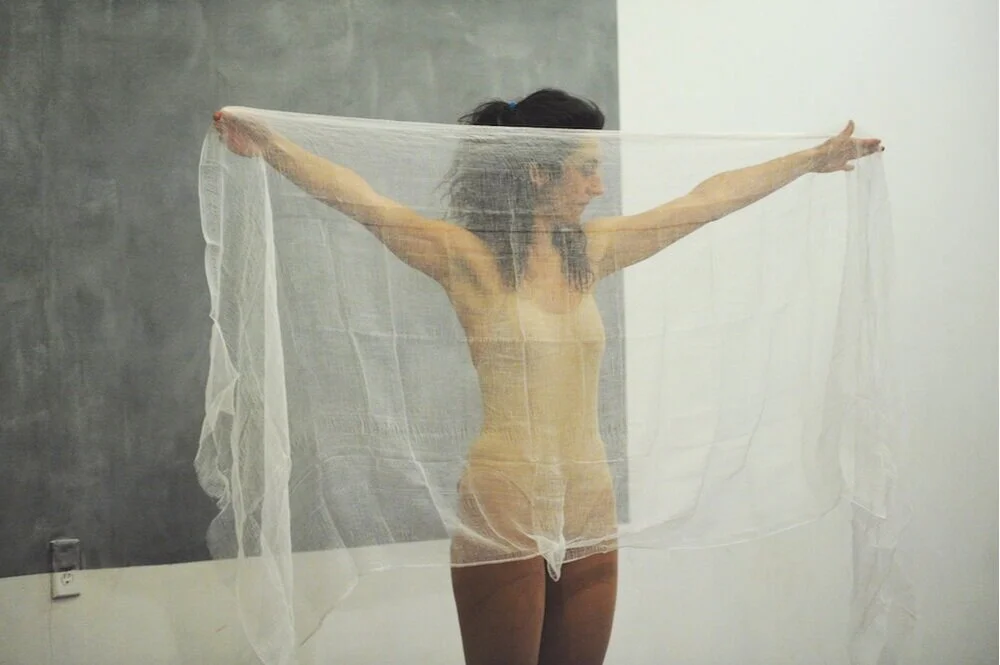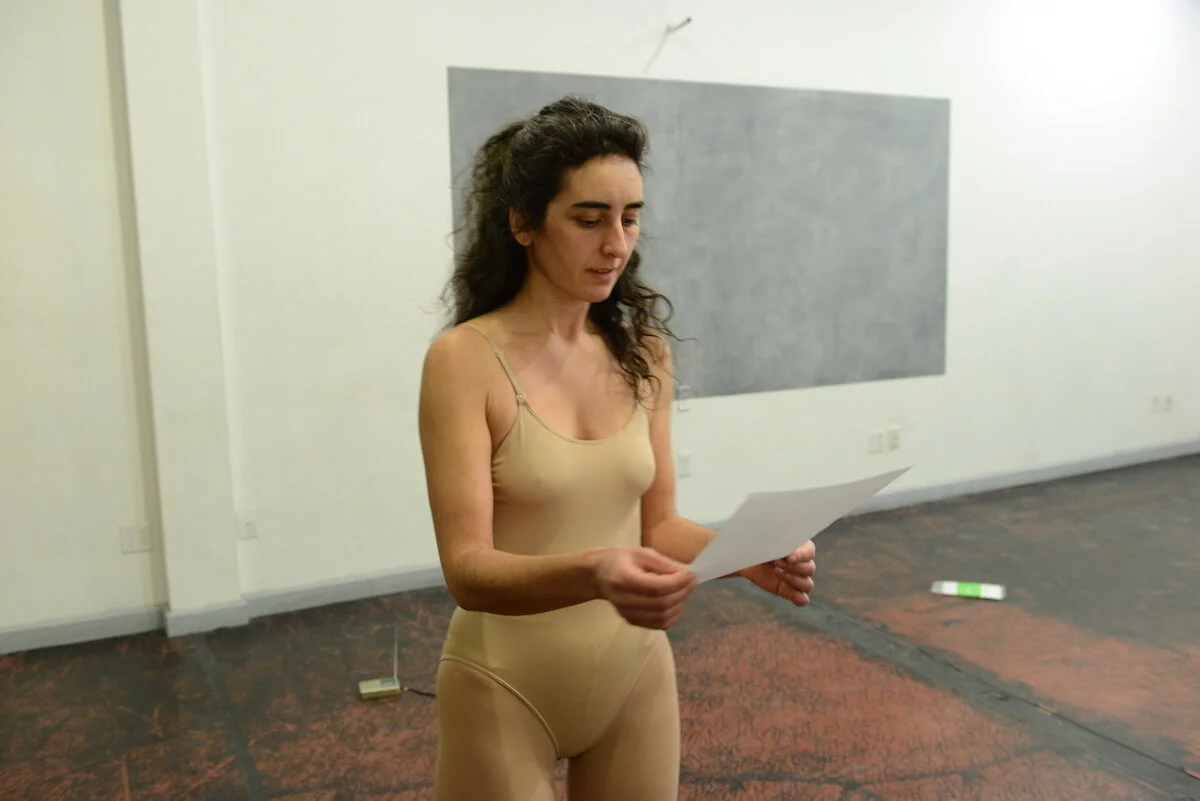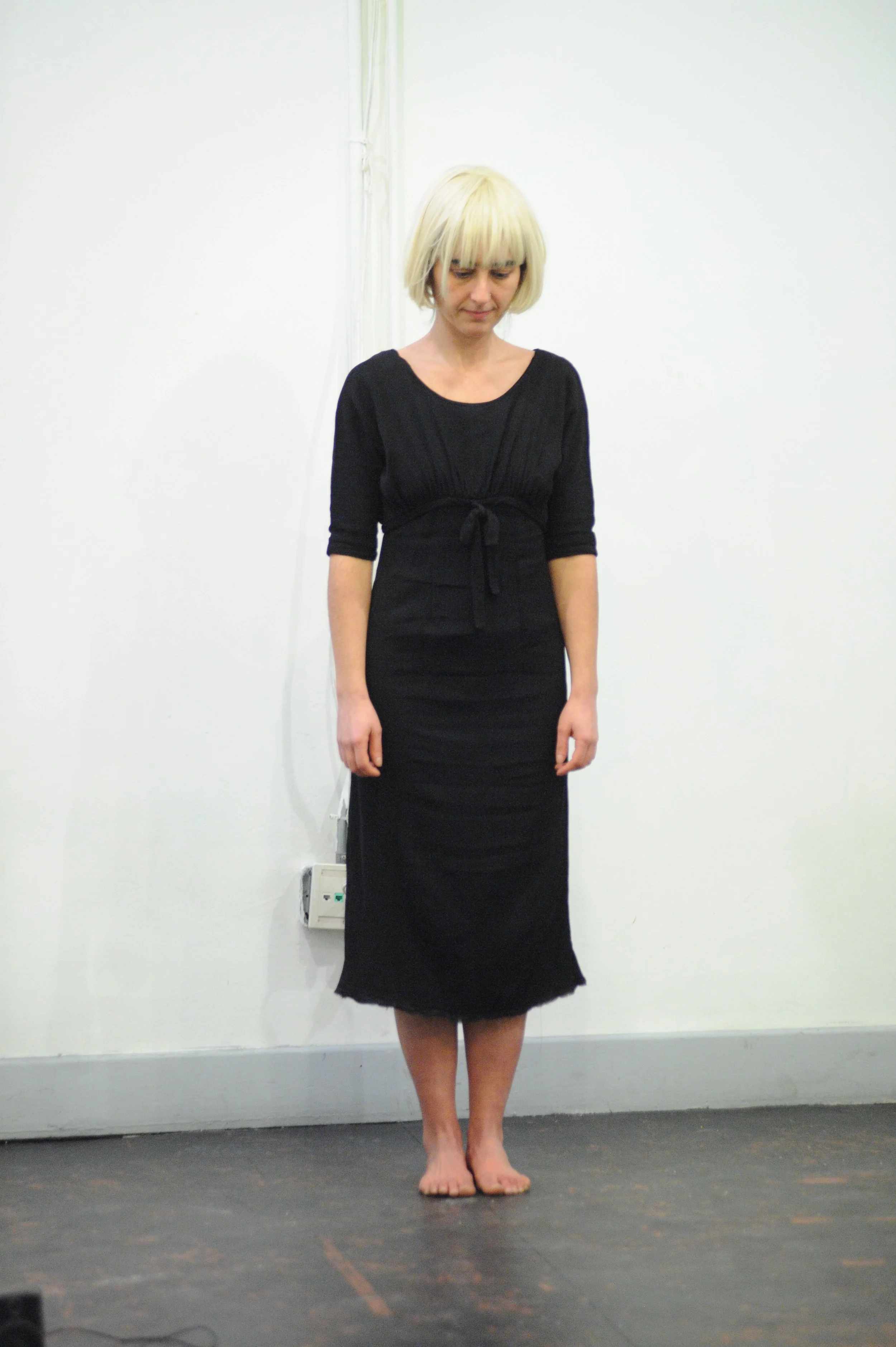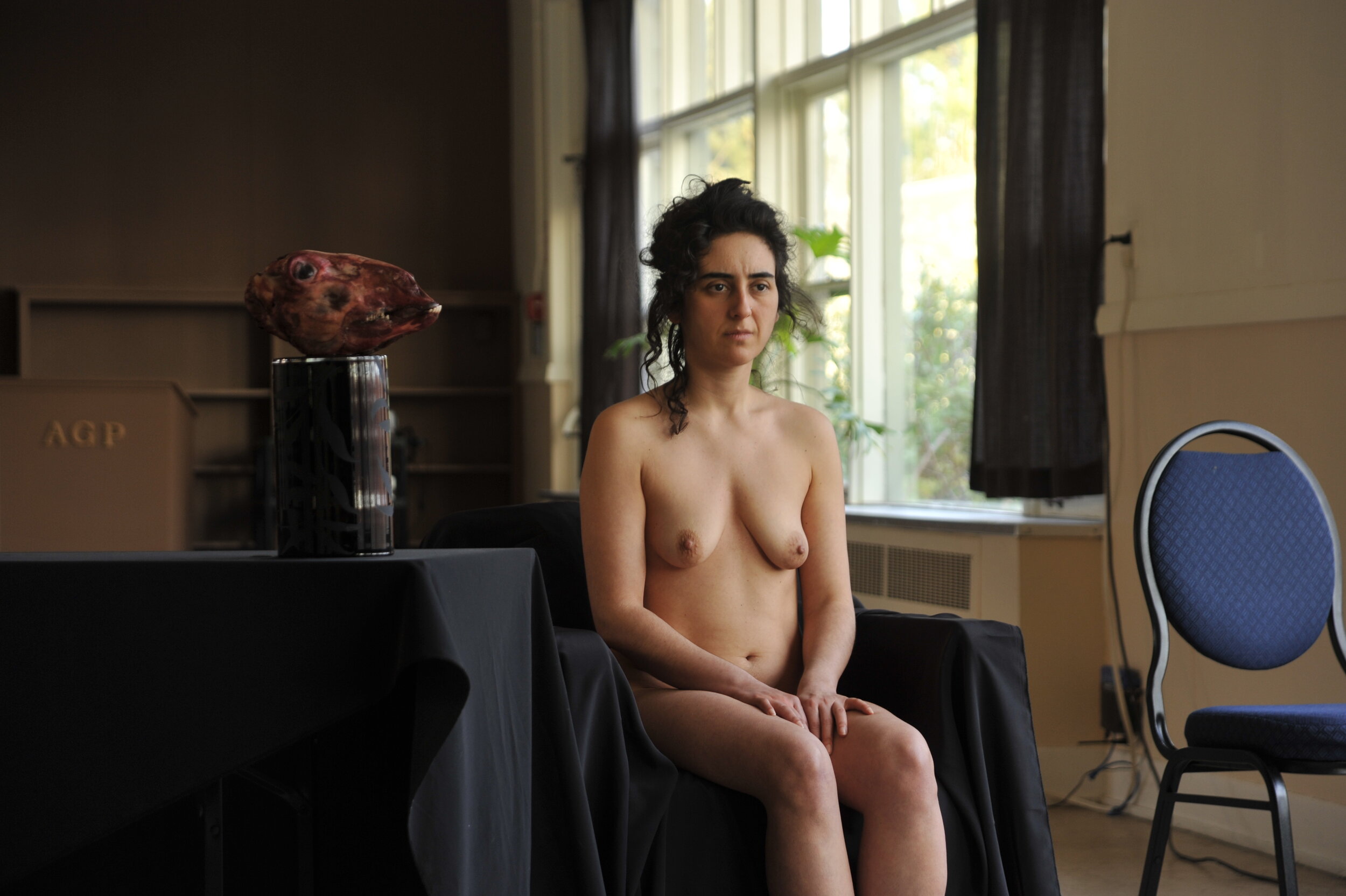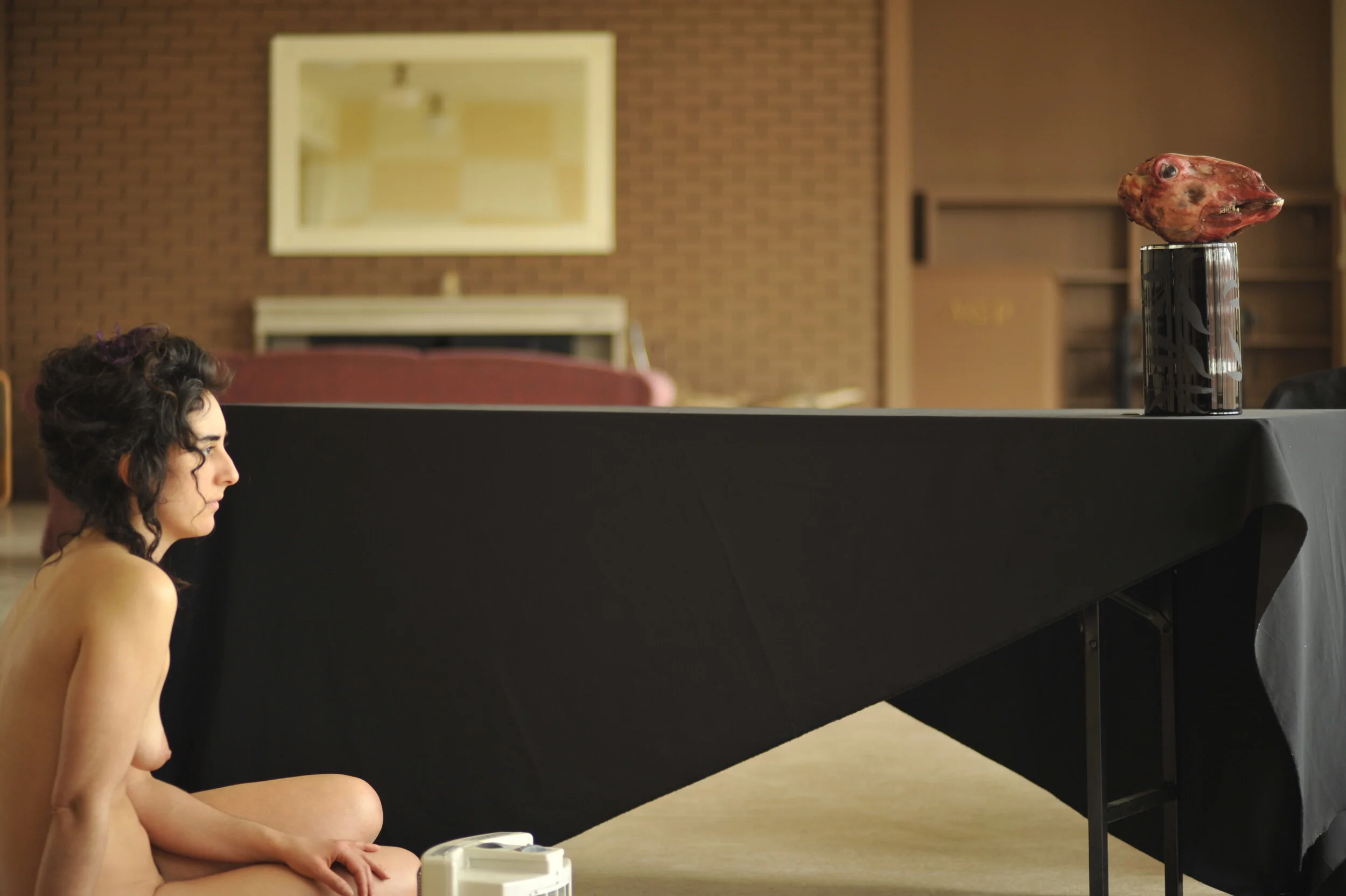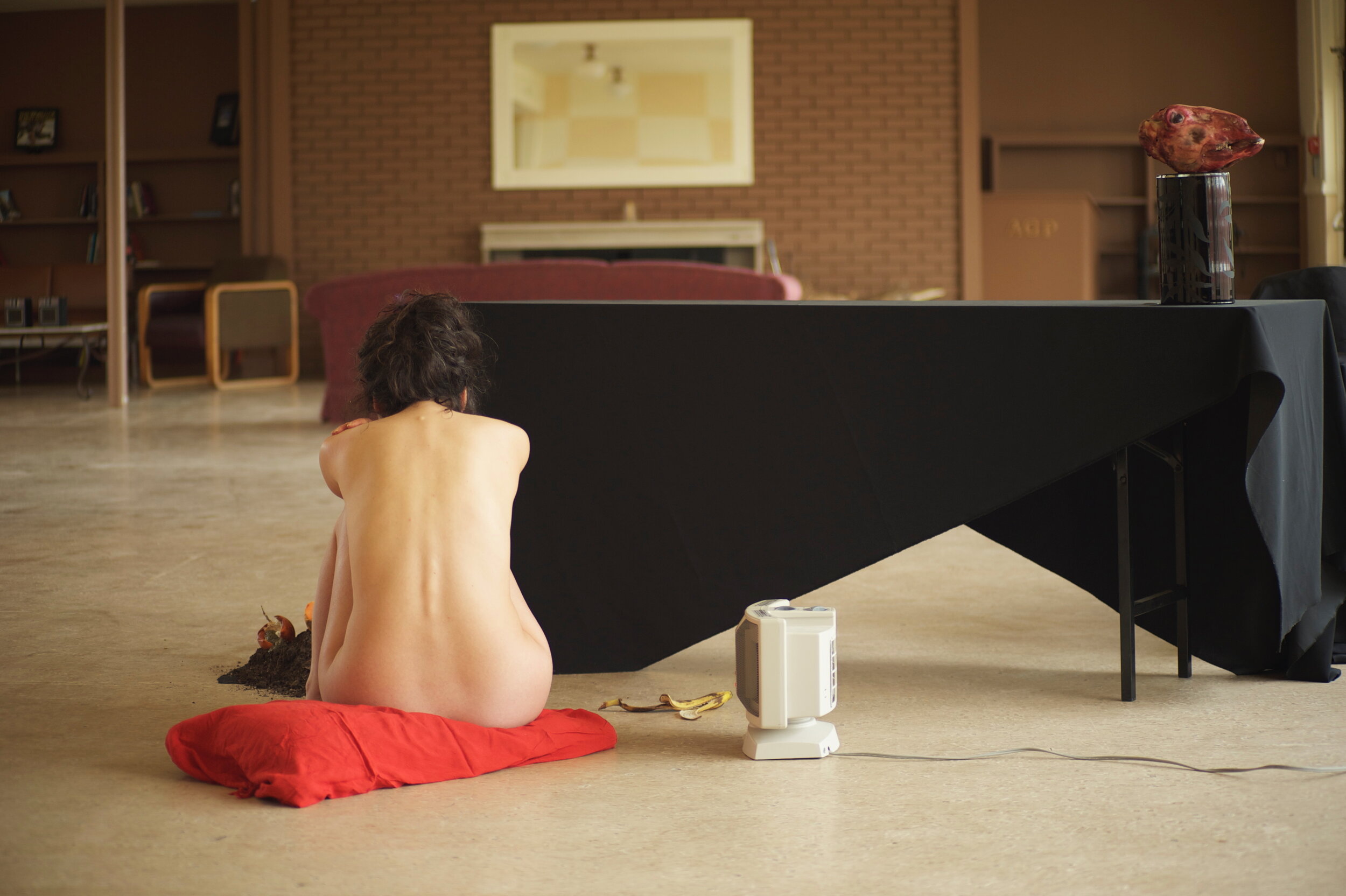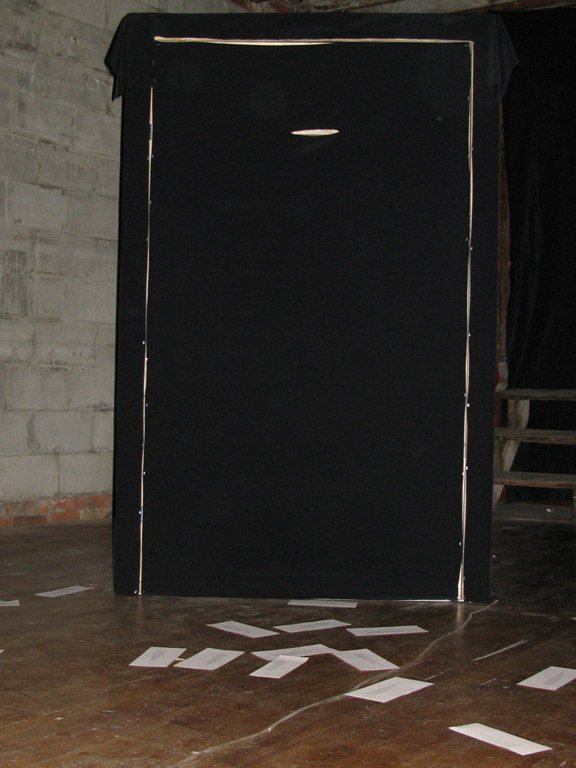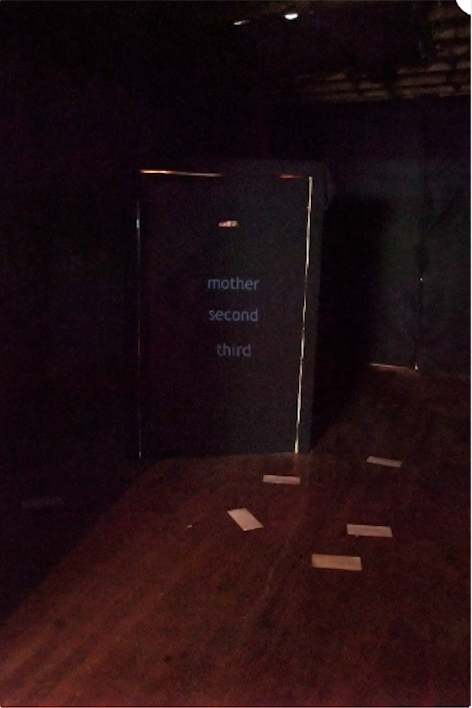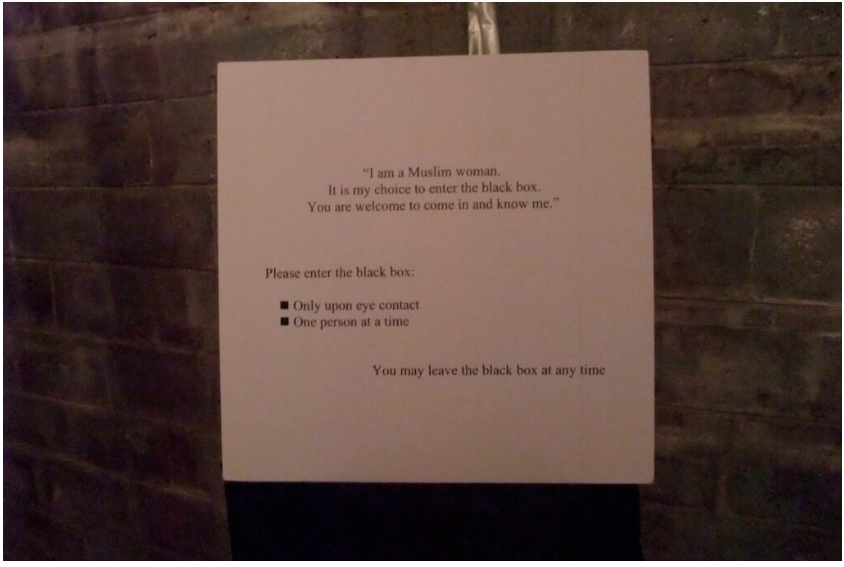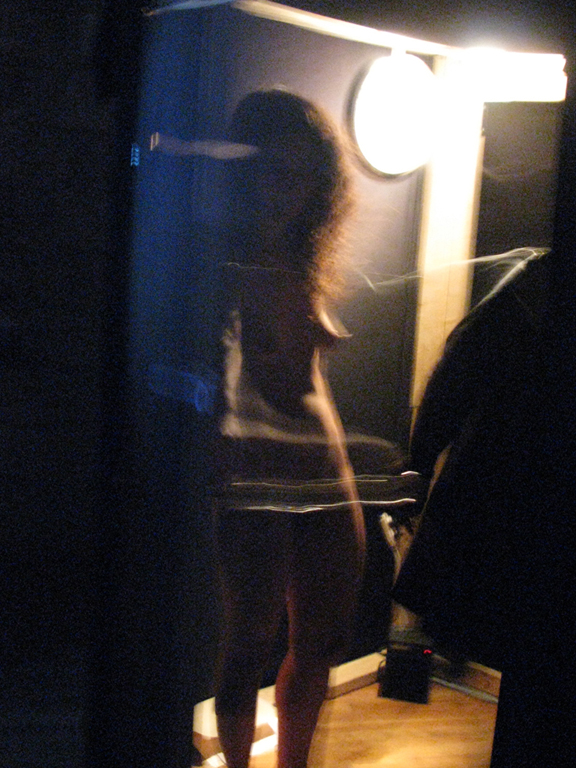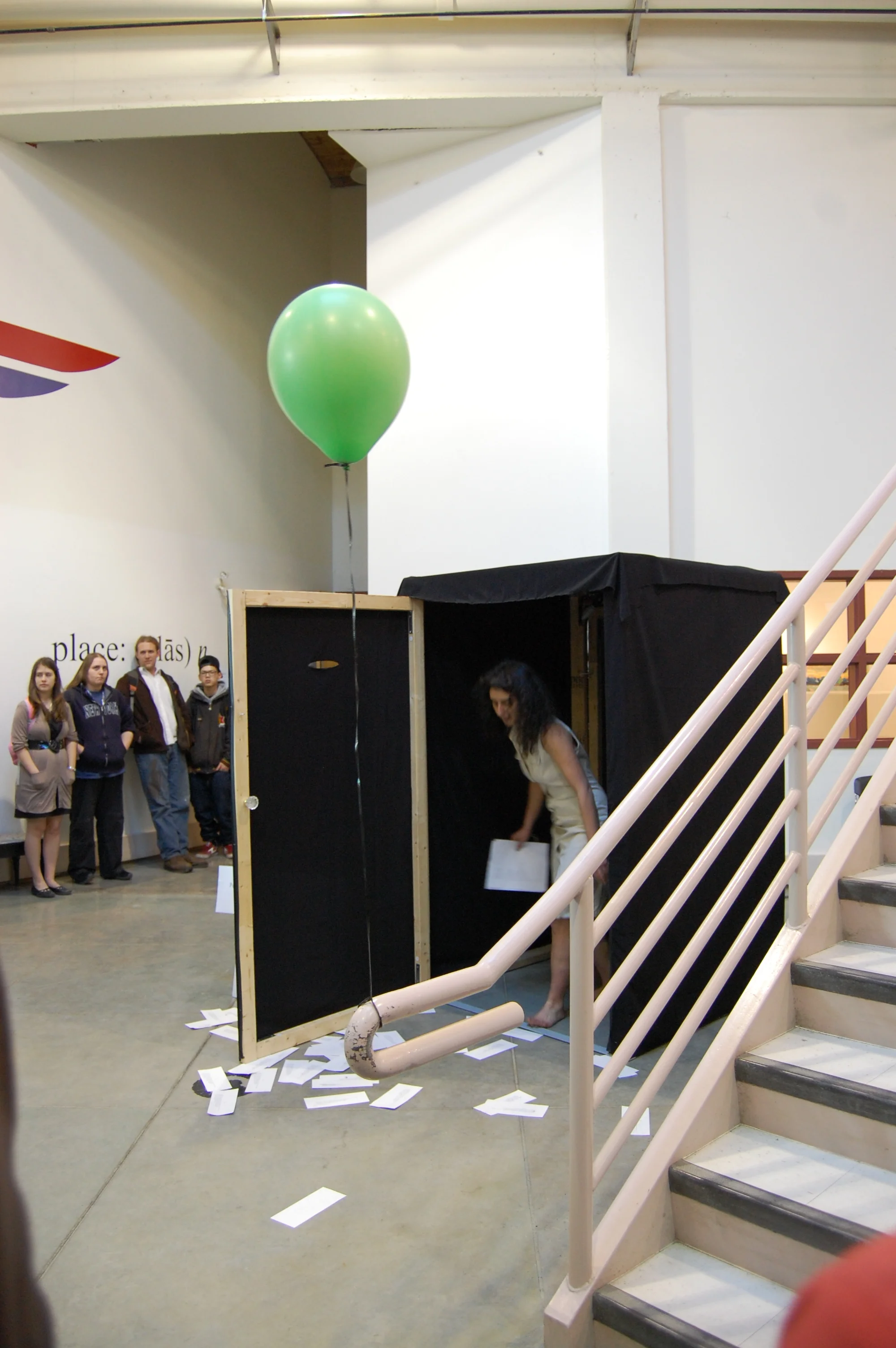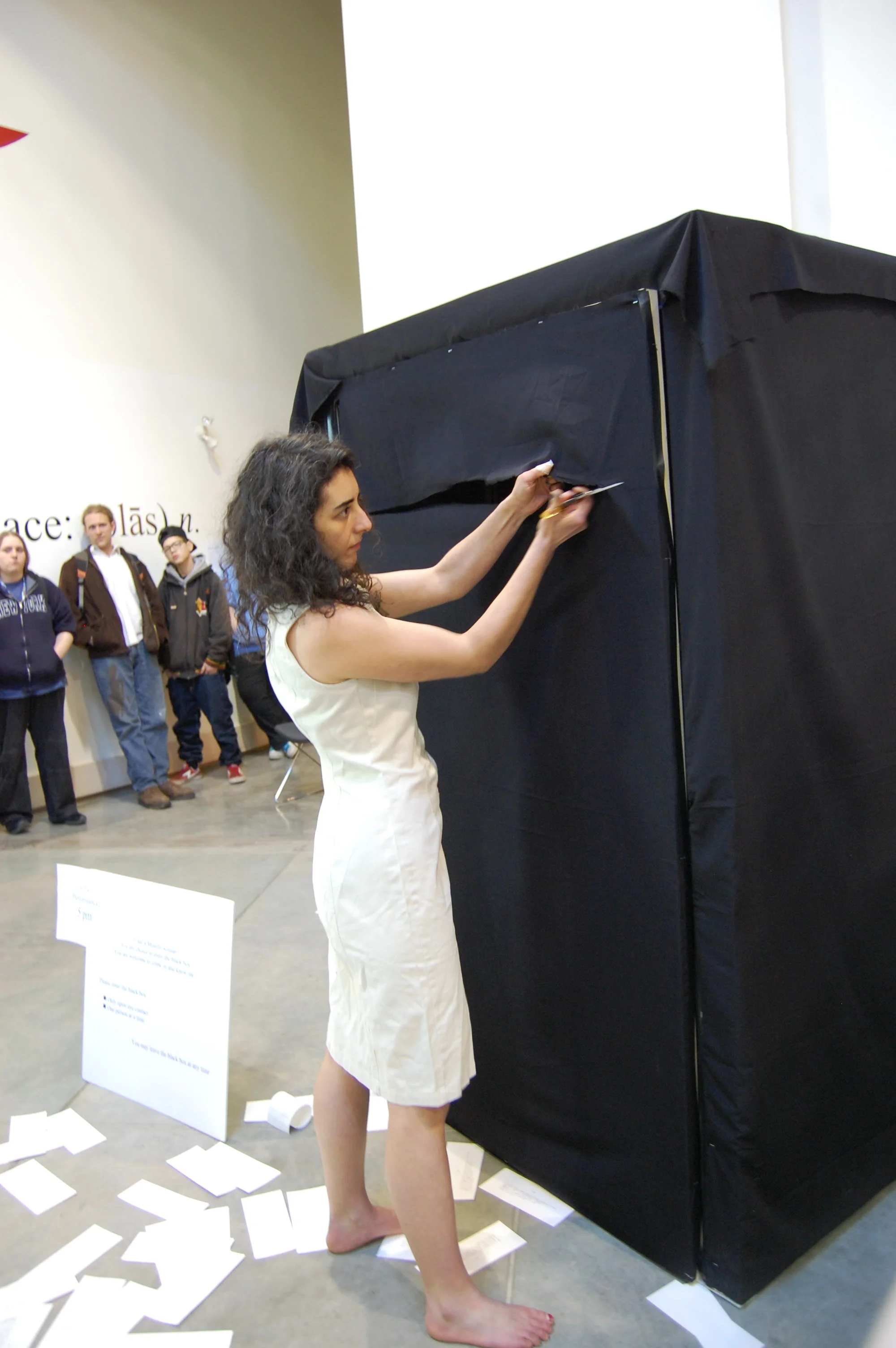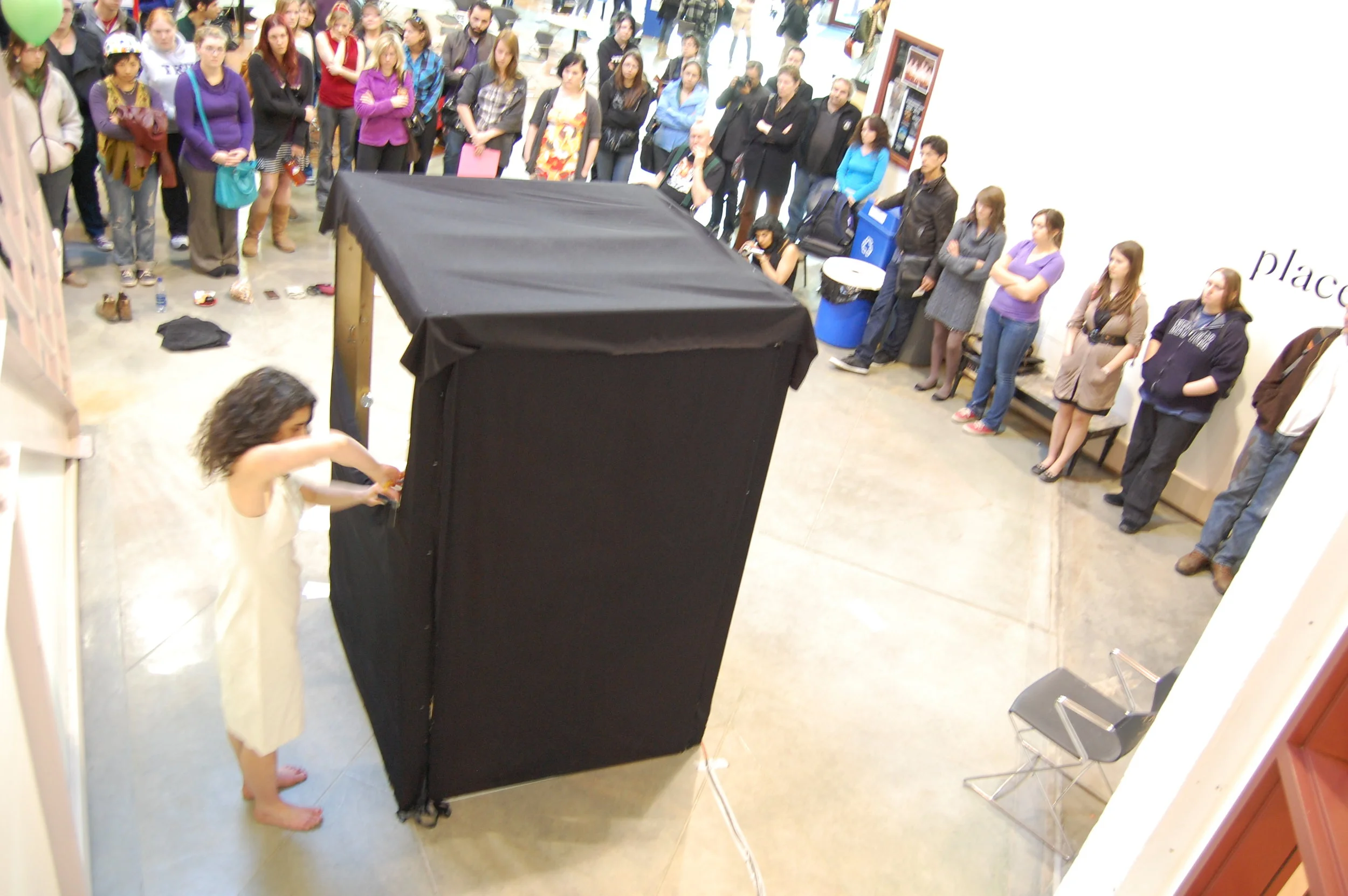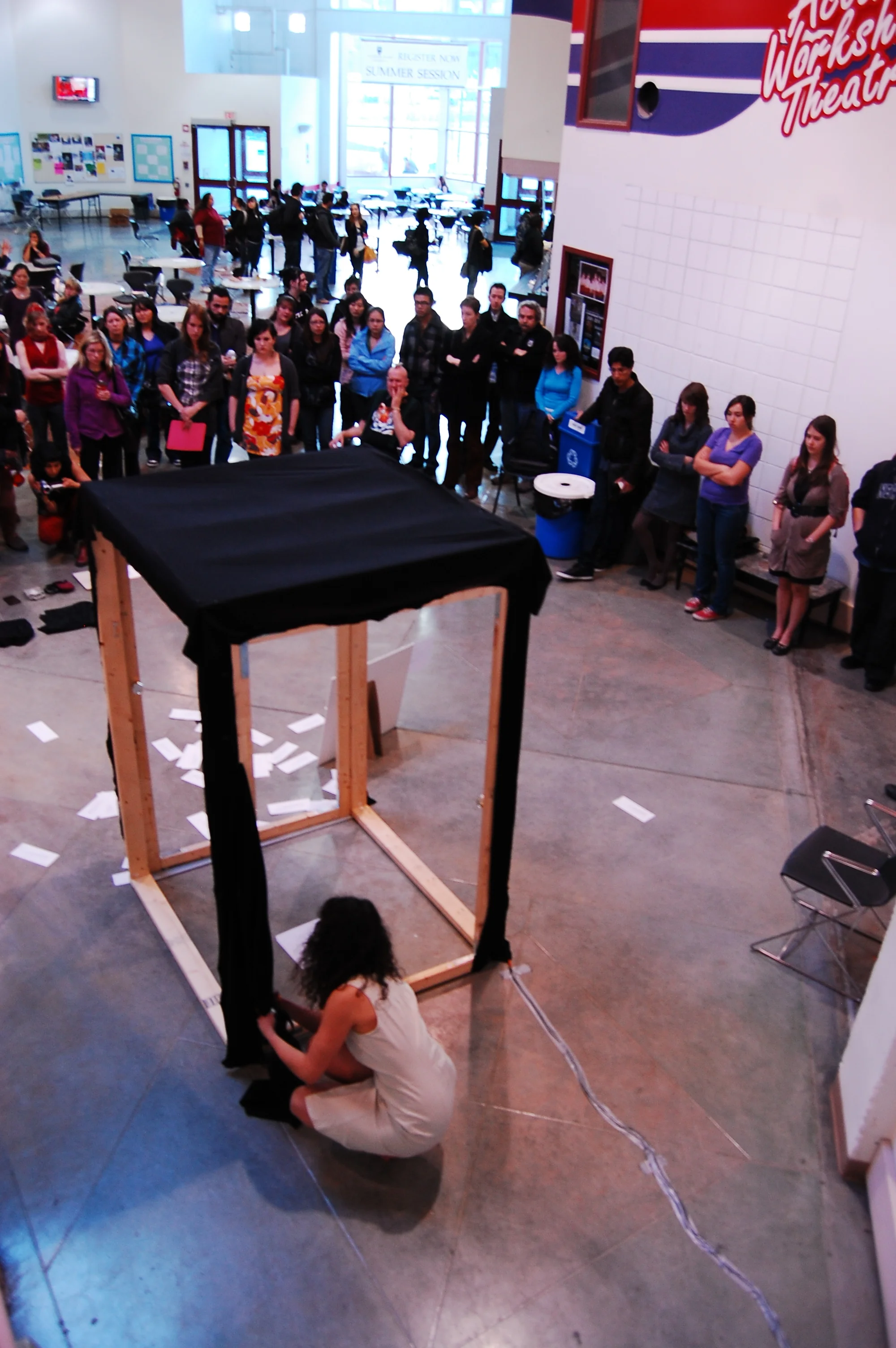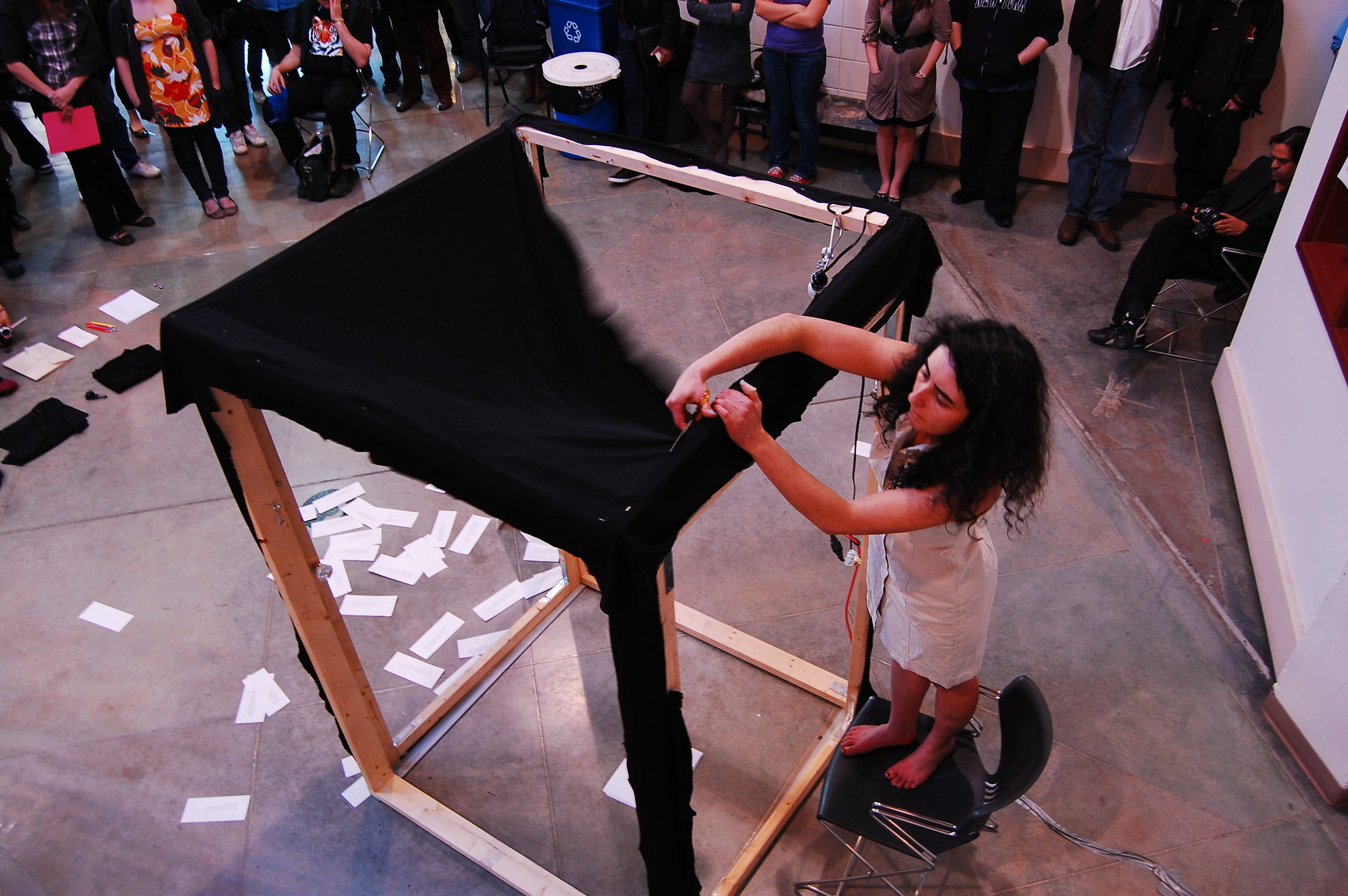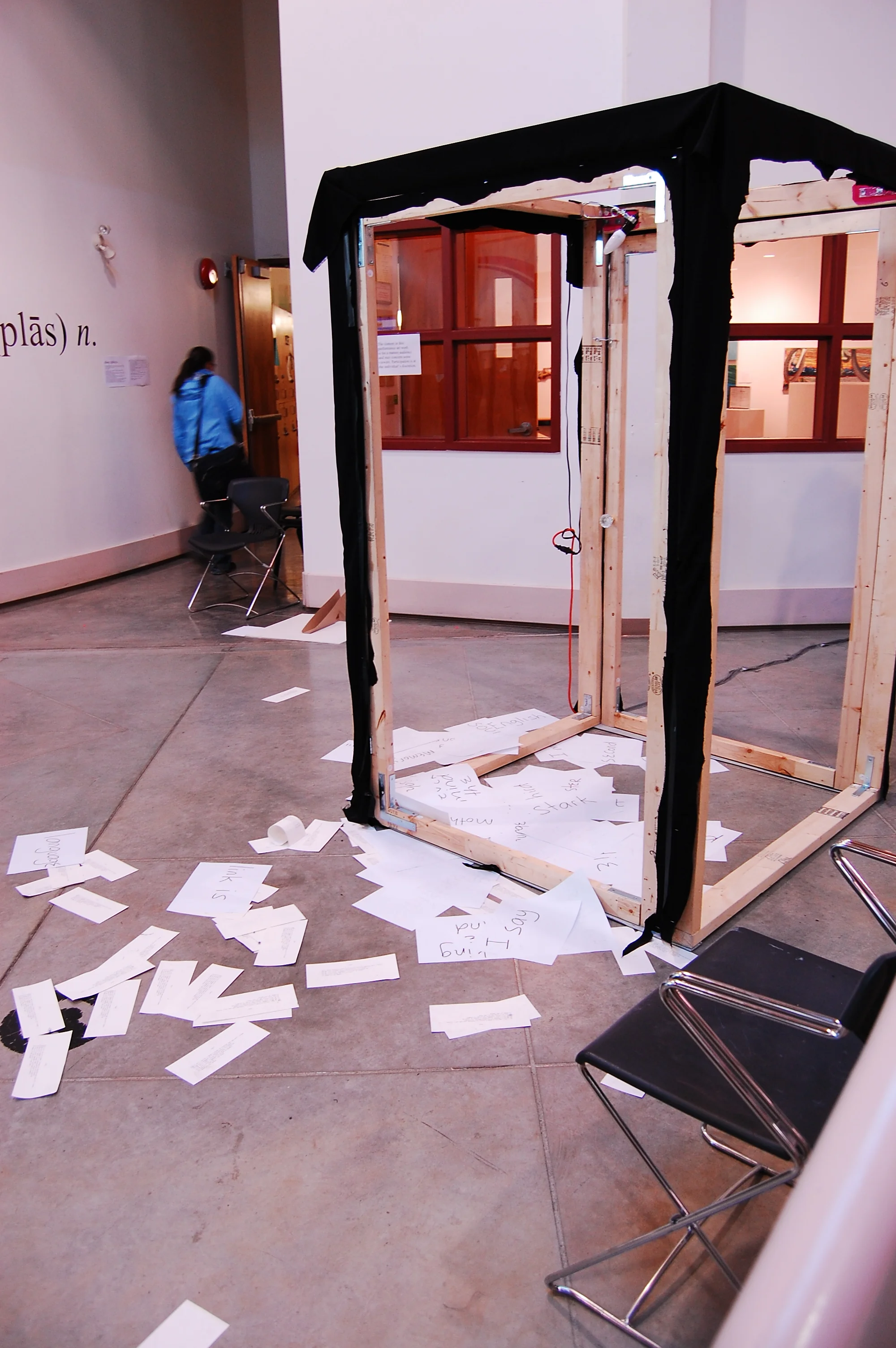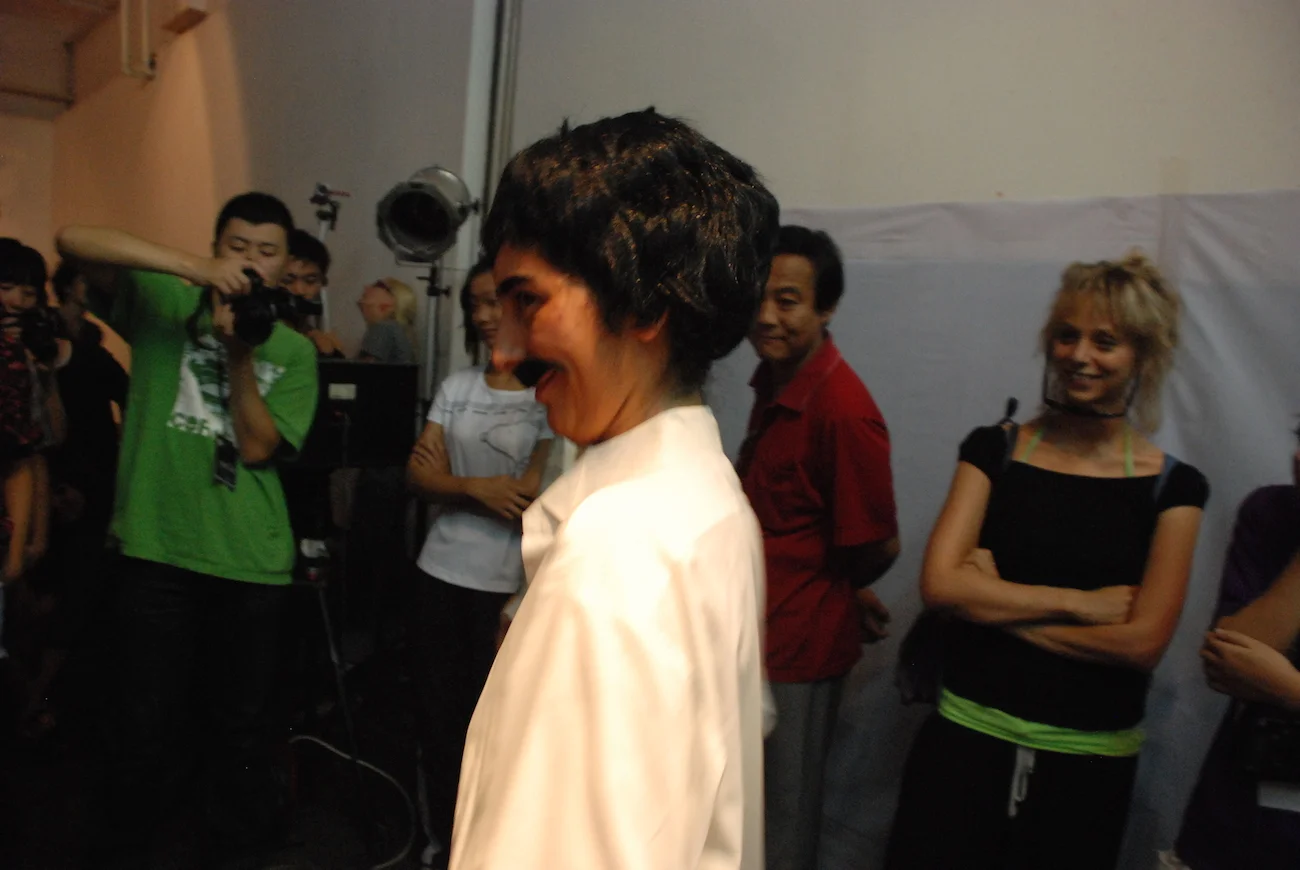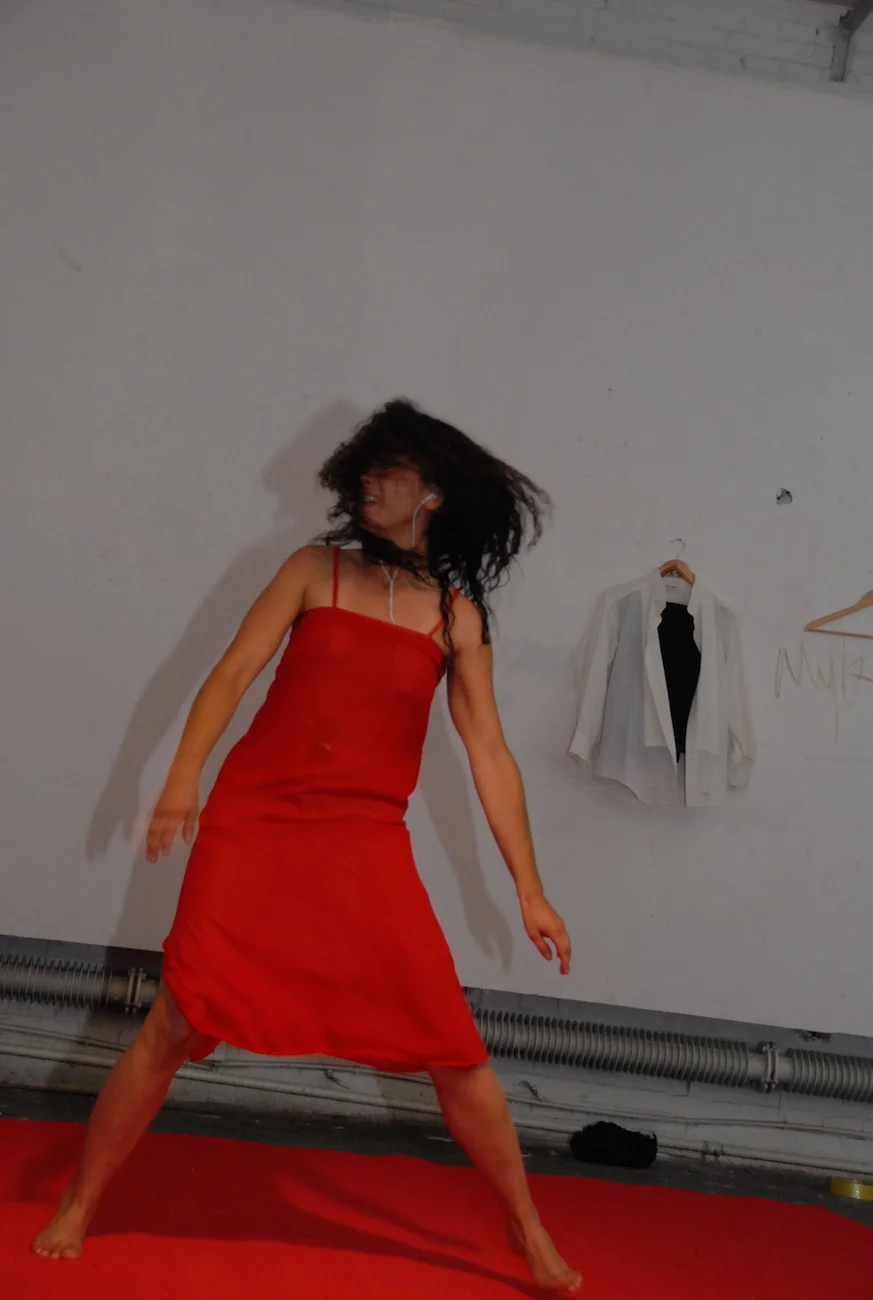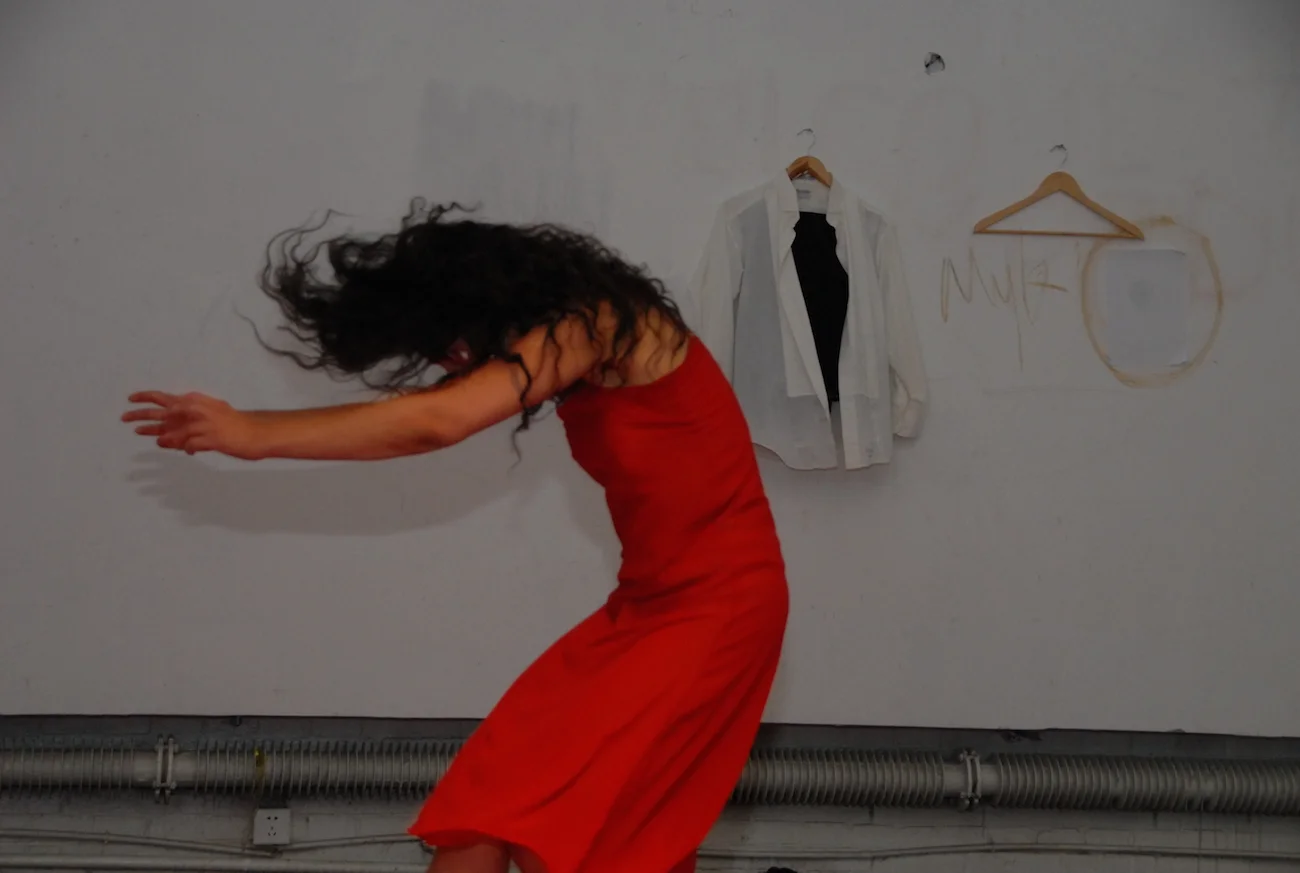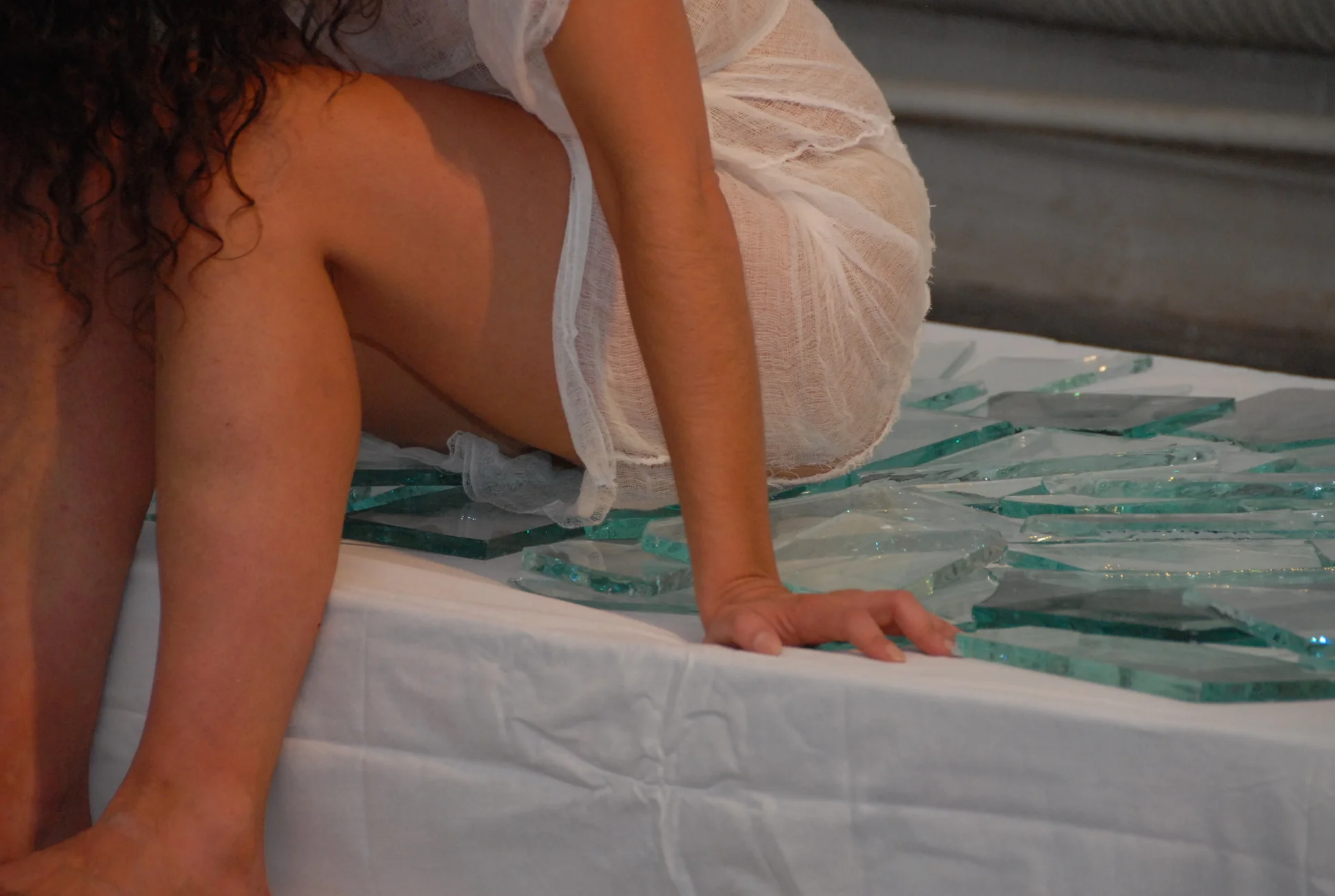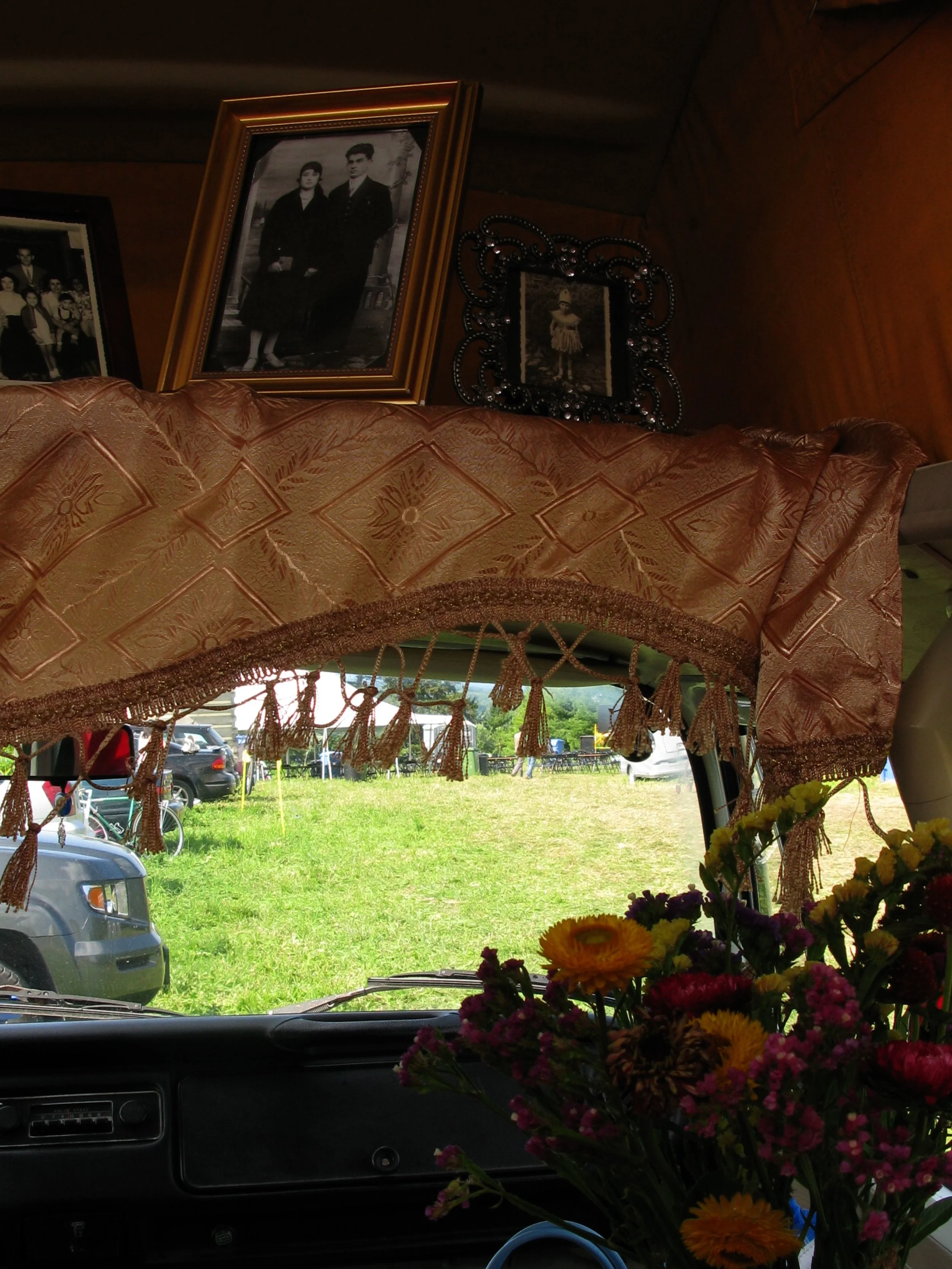Performance
7a*11d International Festival of Performance Art
2014, Toronto
Photography by Henry Chan
Simlâ Civelek’s Gestural Imaginary, Written By Alison Cooley
Simlâ Civelek enters her performance in a beige shift dress and metallic heals: apparel difficult not to read as yuppie businesswear or the garb of a disaffected housewife. (I’m conscious of this hyper-gendered description. Men’s suits signify across various social and economic lines, and I held back comment on John Court’s black activewear and cargopants earlier today. The ambiguity of character afforded by men’s clothing has no equivalence in women’s fashion. The performer’s dress and appearance don’t escape being read despite their apparent neutrality.) Her face, which is powdered in a tone mismatched to her skin, takes on a mask-like quality indicative of some level of… Nostalgia? Unbalance?
She begins with a reflective black plate sitting on the floor. Briefly examining its shape and catching her reflection, Civelek proceeds to hurl it against the wall. It clanks metallically, provokes an equivalence with the performer’s iridescent black heels. Upon second attempt, the plate shatters, flinging glass across the floor.
Civelek climbs a ladder (her heels teeter anxiously on the edges of the rungs) to its summit. She peels a blank piece of paper from the wall’s uppermost edge (a prop I handn’t noticed until this moment.) Appearing to read the page, she then slowly crumples it, compressing the sheet into as dense a fistful as she is able, over several gestures of flexing and opening the hand. She then deposits the crumpled mass into a vase of water on the floor. Listlessly, she stirs and splashes it, until the page has become a set of pulpy wet chunks at the bottom of the vessel.
Returning up the ladder, Civelek removes a package of cheesecloth affixed to the wall, unwraps it, and slowly begins to unfold the length of cloth. She turns it over and over in her hands, running the length up and down through her hands in short, circular tosses. I have seen my grandmother, whose arthritic hands are riddled with the stamps of her own particular anxieties (of hosting, home-making, being taken seriously and treated with dignity, being remembered, being safe as her body shudders) perform this same action: straightening and folding over, only to straighten and refold the same piece of cloth in a kind of soothing and familiar repetition.
Civelek veils herself with the cheesecloth, conjuring some figure between bride and ghost. She sits, gestures with her hands, rests them upon her thighs, and then turns them over again. Eventually, removing the veil, she returns to the gesture of straightening the cloth, letting it unfold from the top through the length of the ladder, evening its edges, and then continuing the loop to the other end. Her short, rhythmic tosses to unfurl the cheesecloth— familiar gestures of inconsequential meaning— become moments of curiosity and pause. At the cheesecloth’s peak through her hands, Civelek untimes her short tossing action, and the cloth drops. Her hands remain in mid-air, the moment suspended.
I have been struggling to synthesize Civelek’s disparate and narrative-resisting series of acts. But something Anya Liftig said in today’s panel struck me as particularly applicable to Civelek’s performance: that performance is an attempt to manifest an interior world in real space. That it materializes imagination, makes public the difficult, the compelling, the strange moments of aloneness. Civelek’s gestures have in them the quiet contemplation of simultaneous solitude and sharedness.
